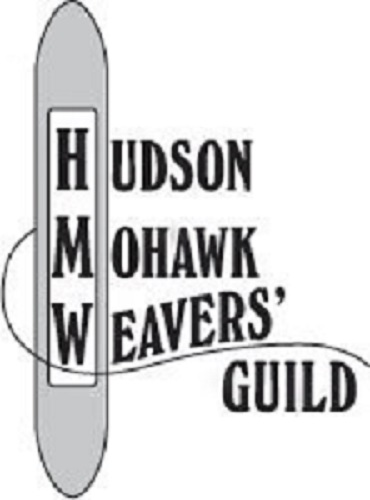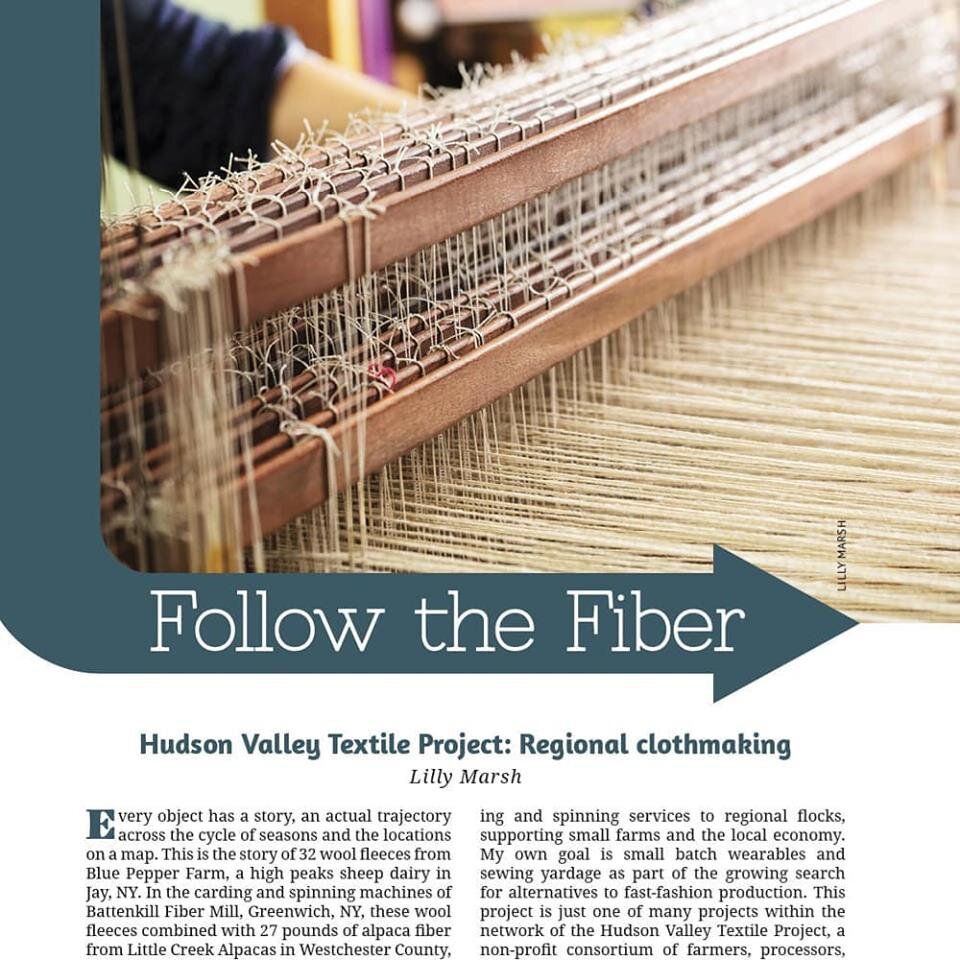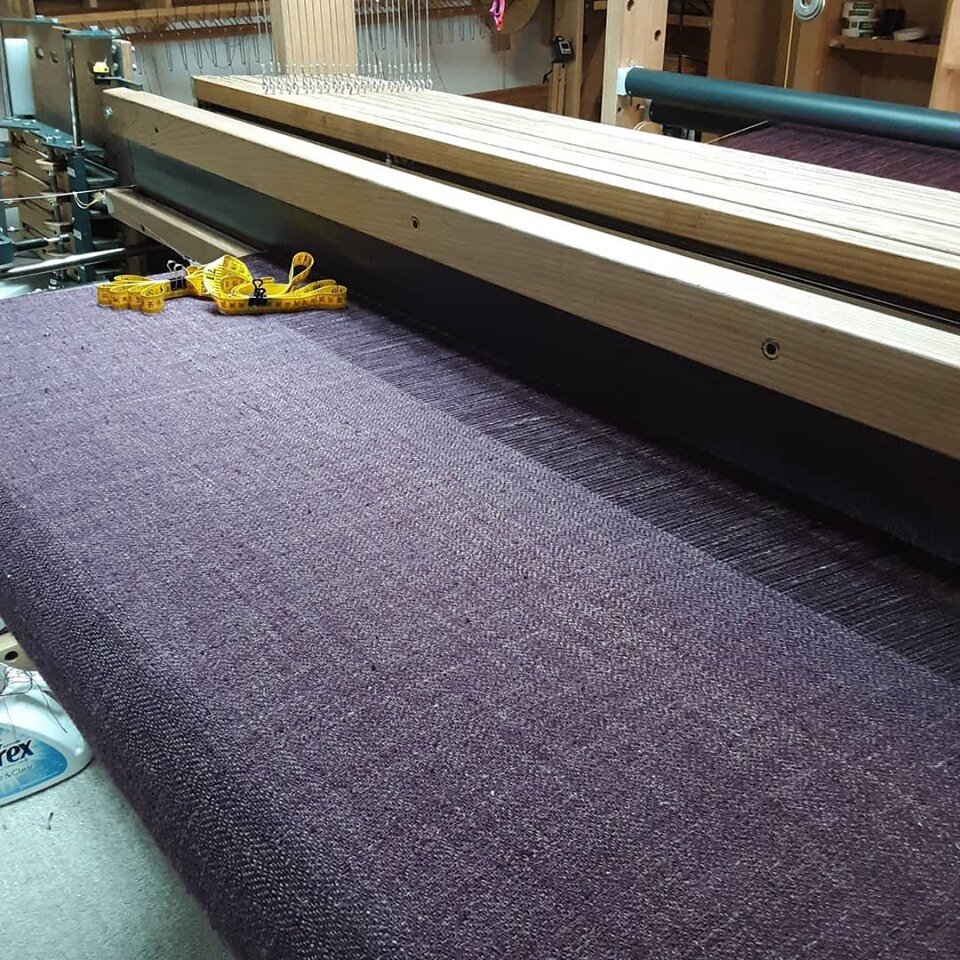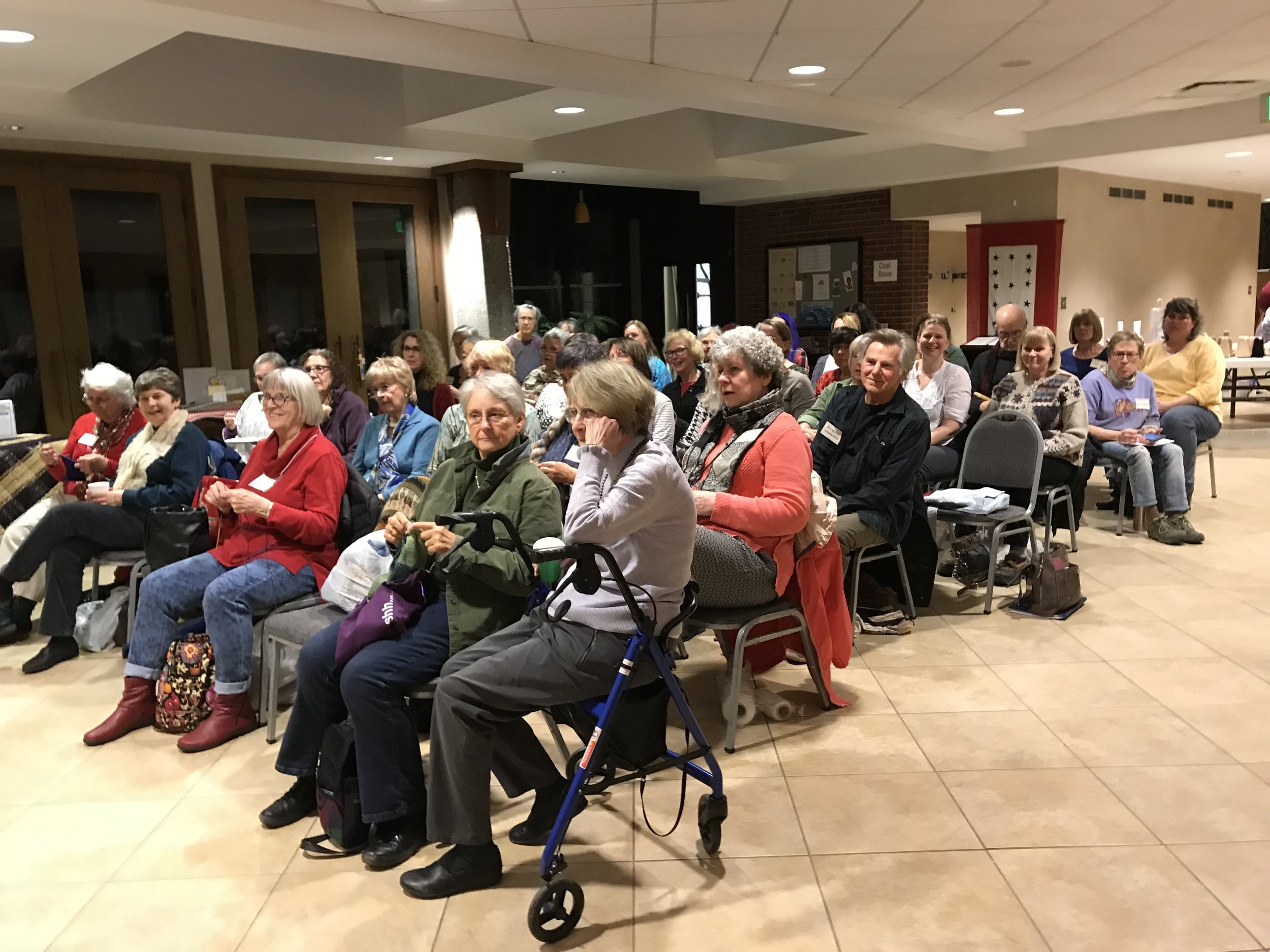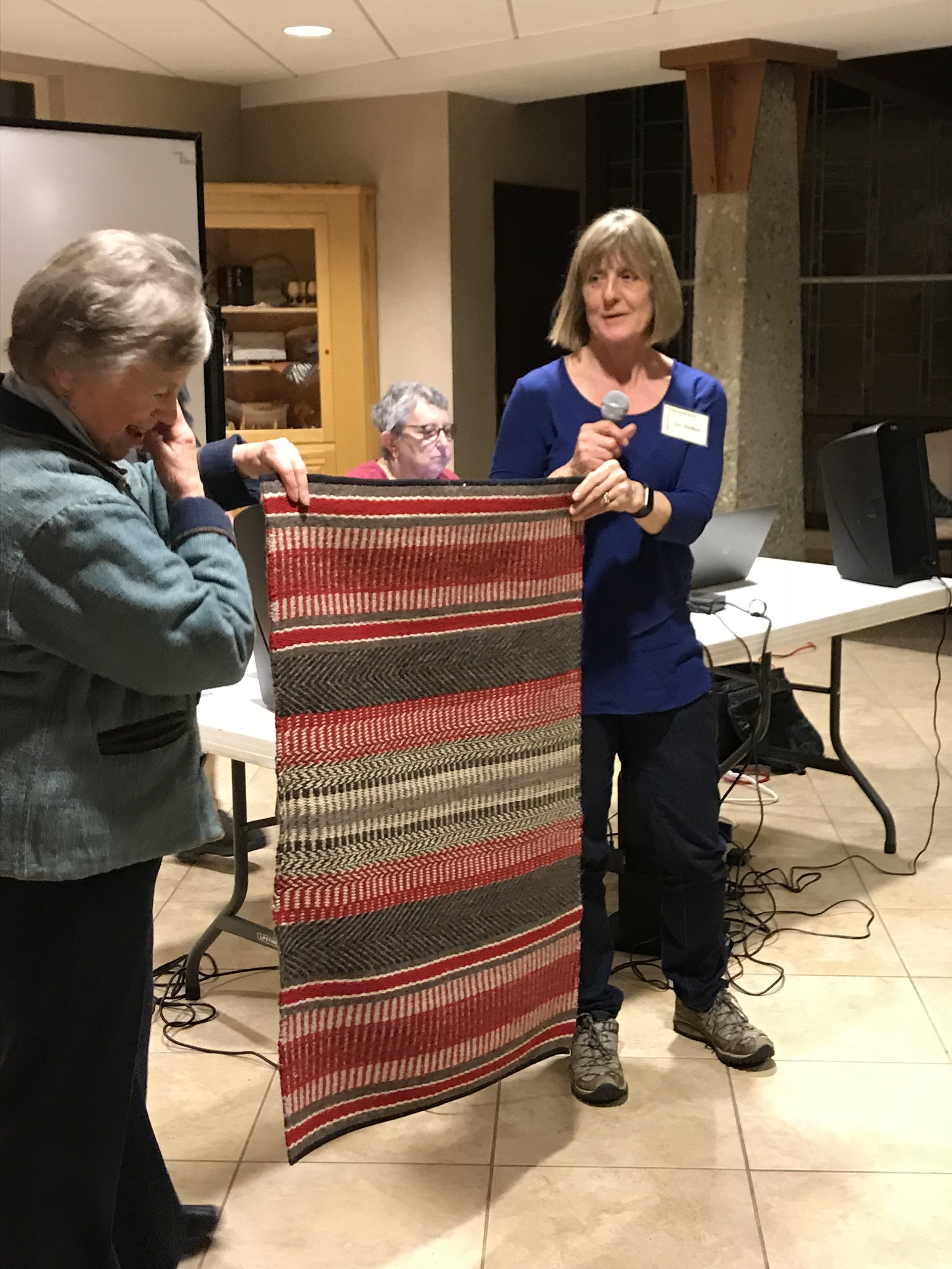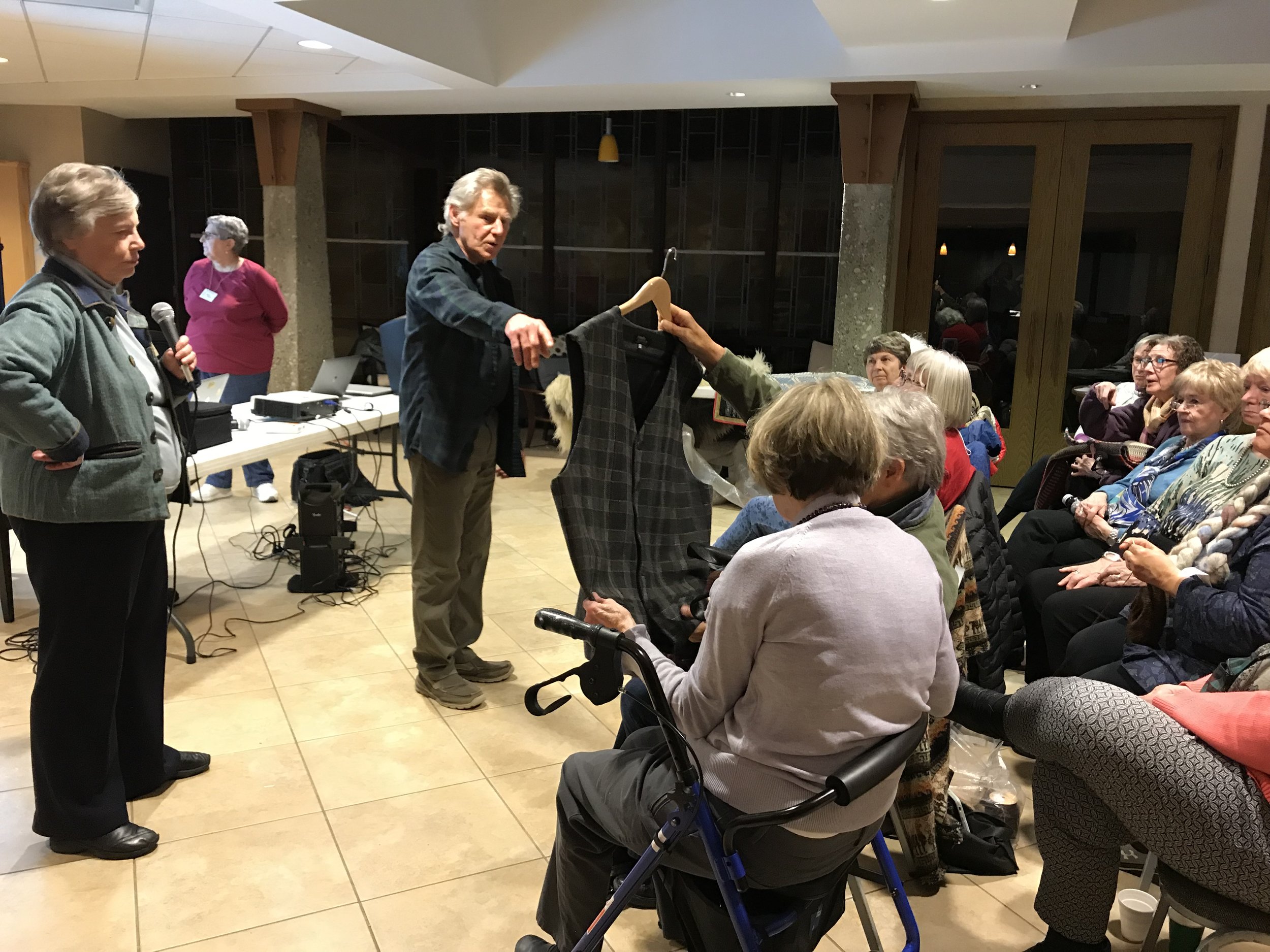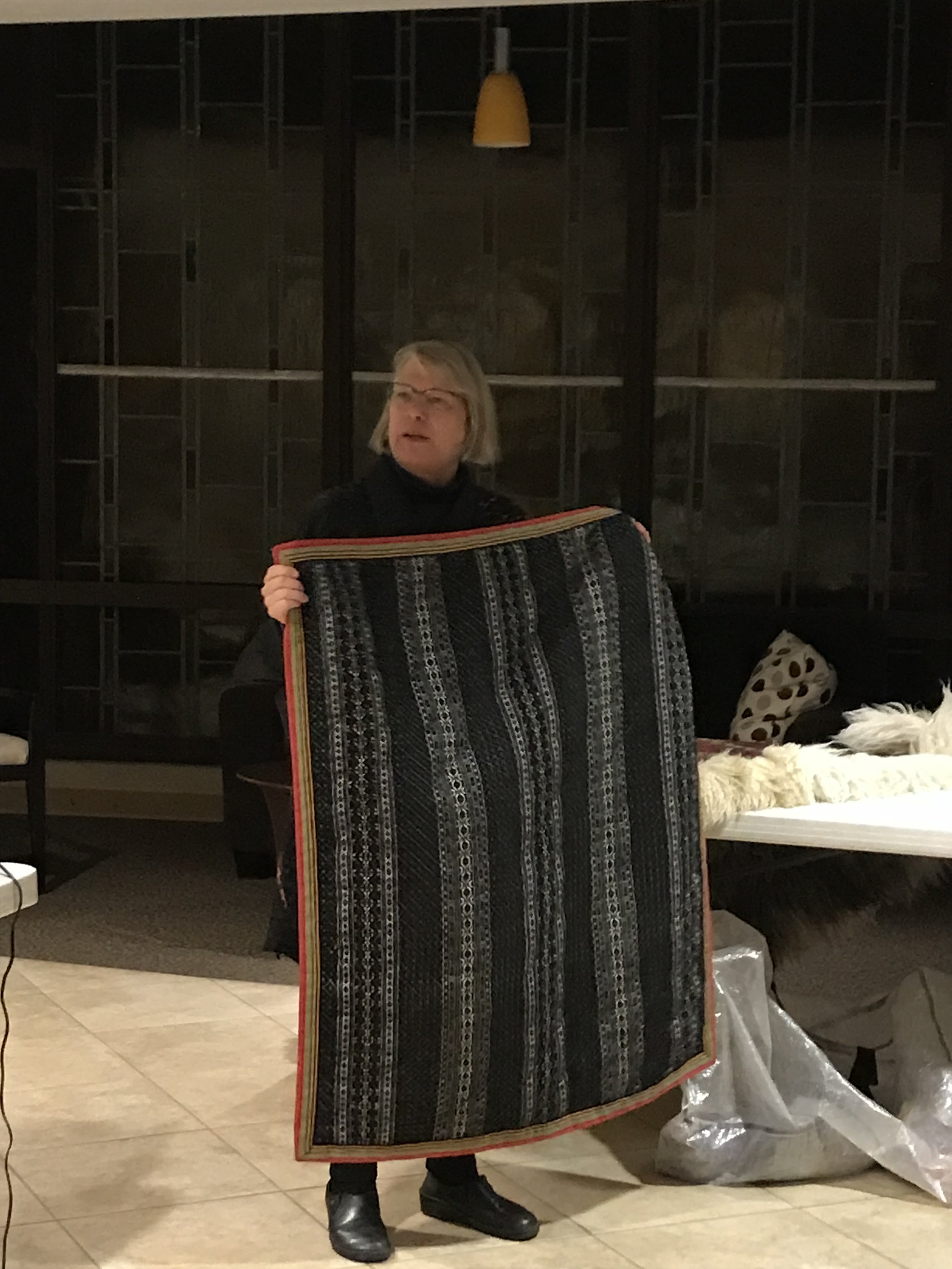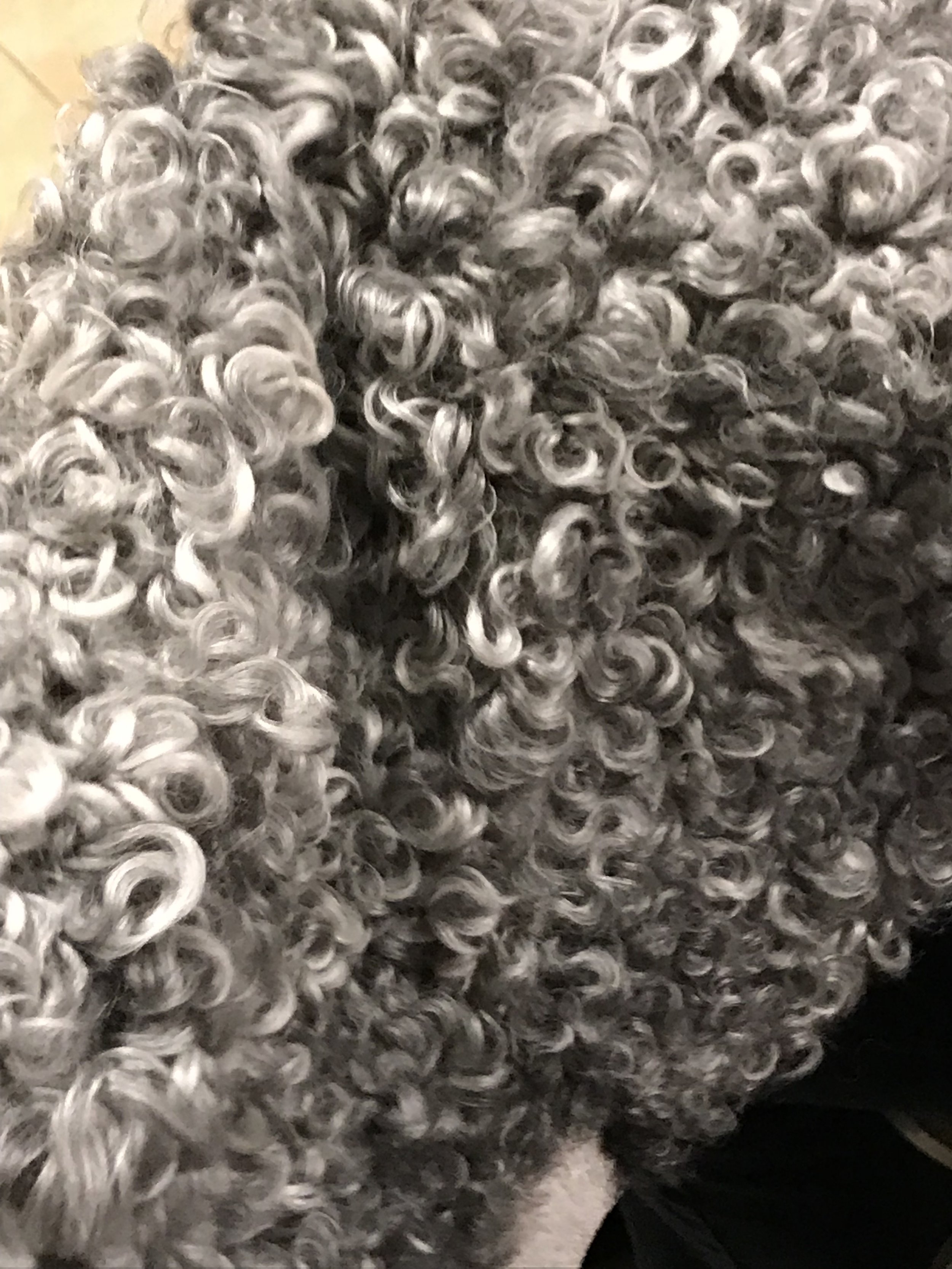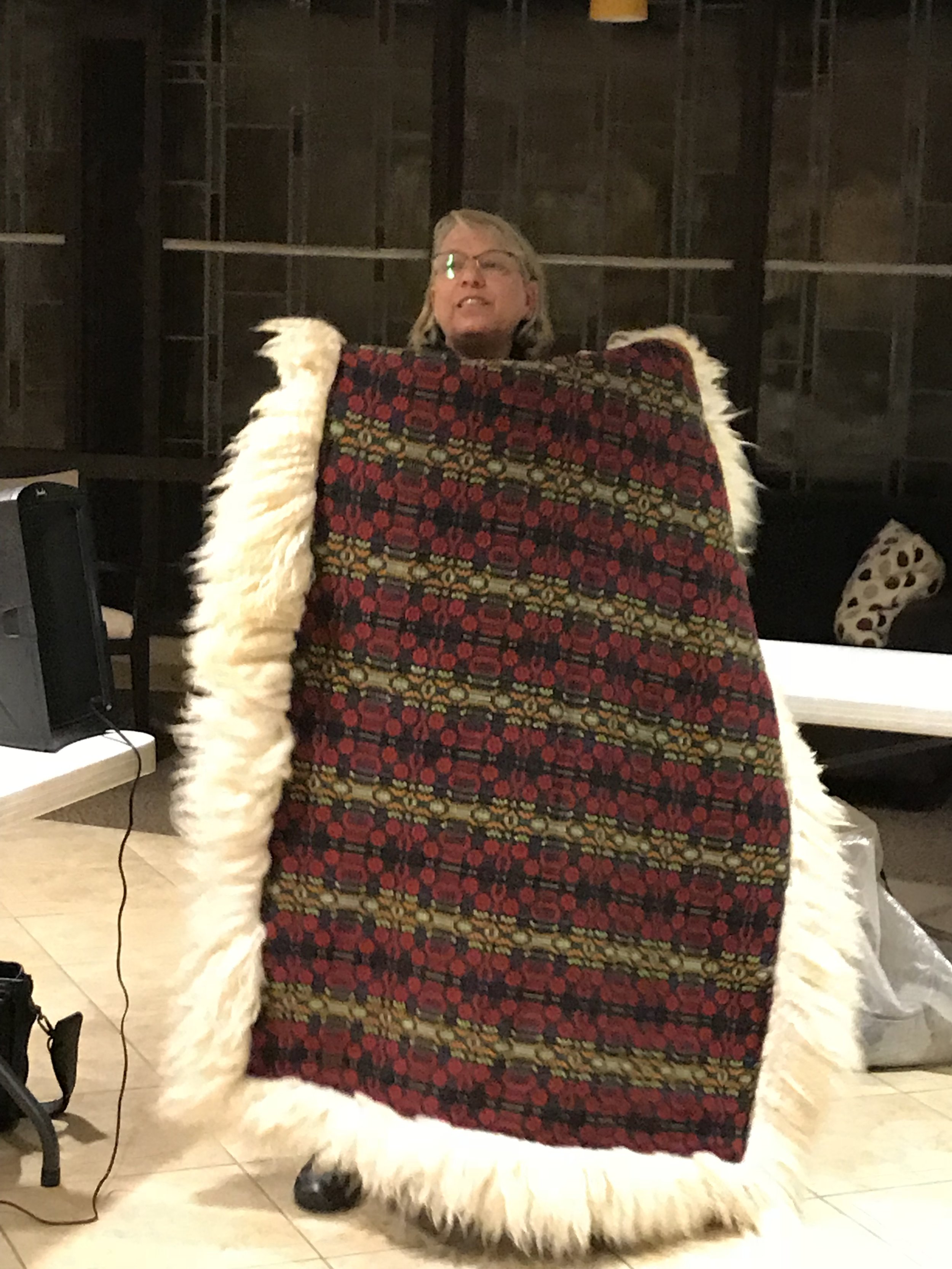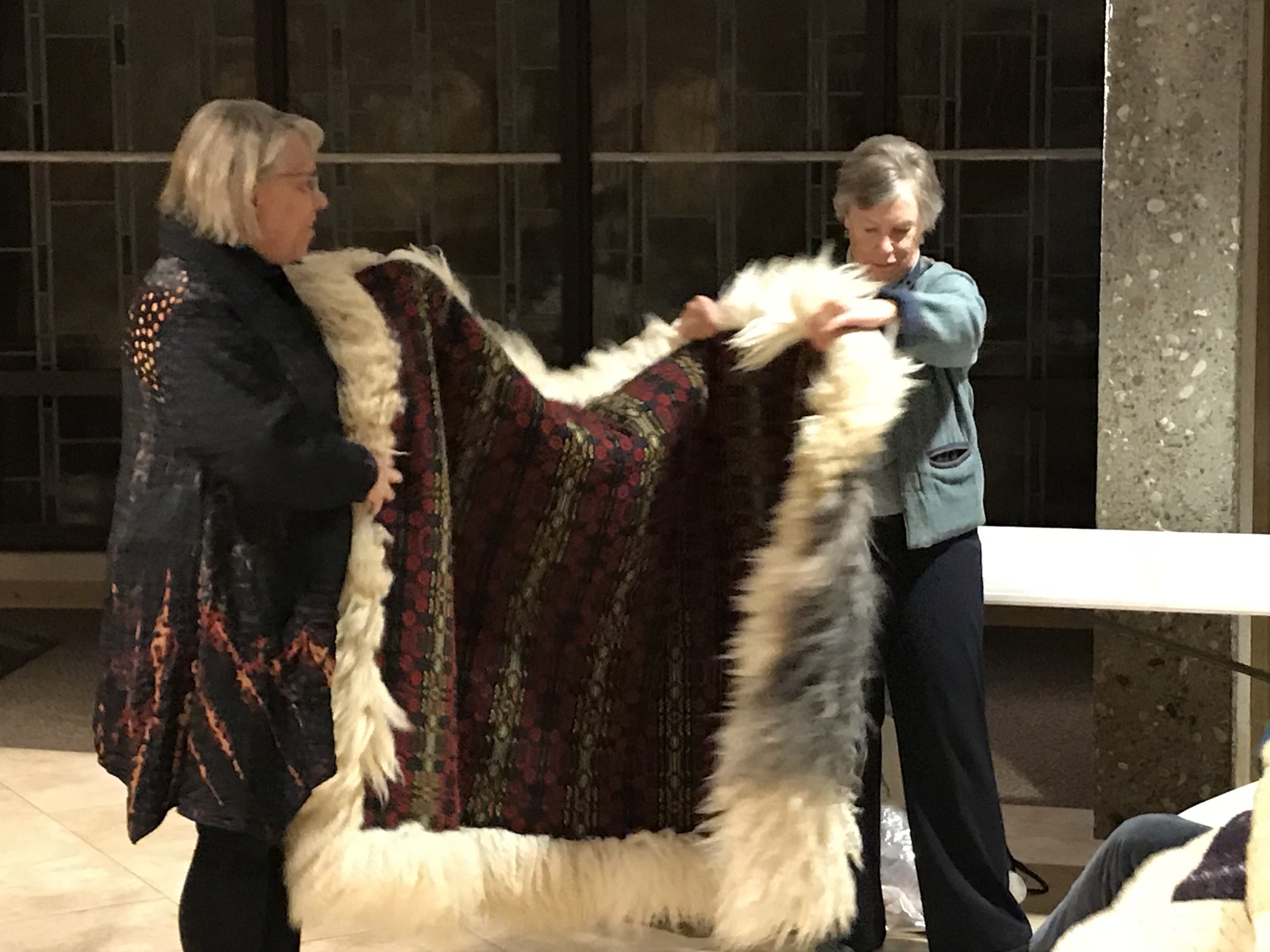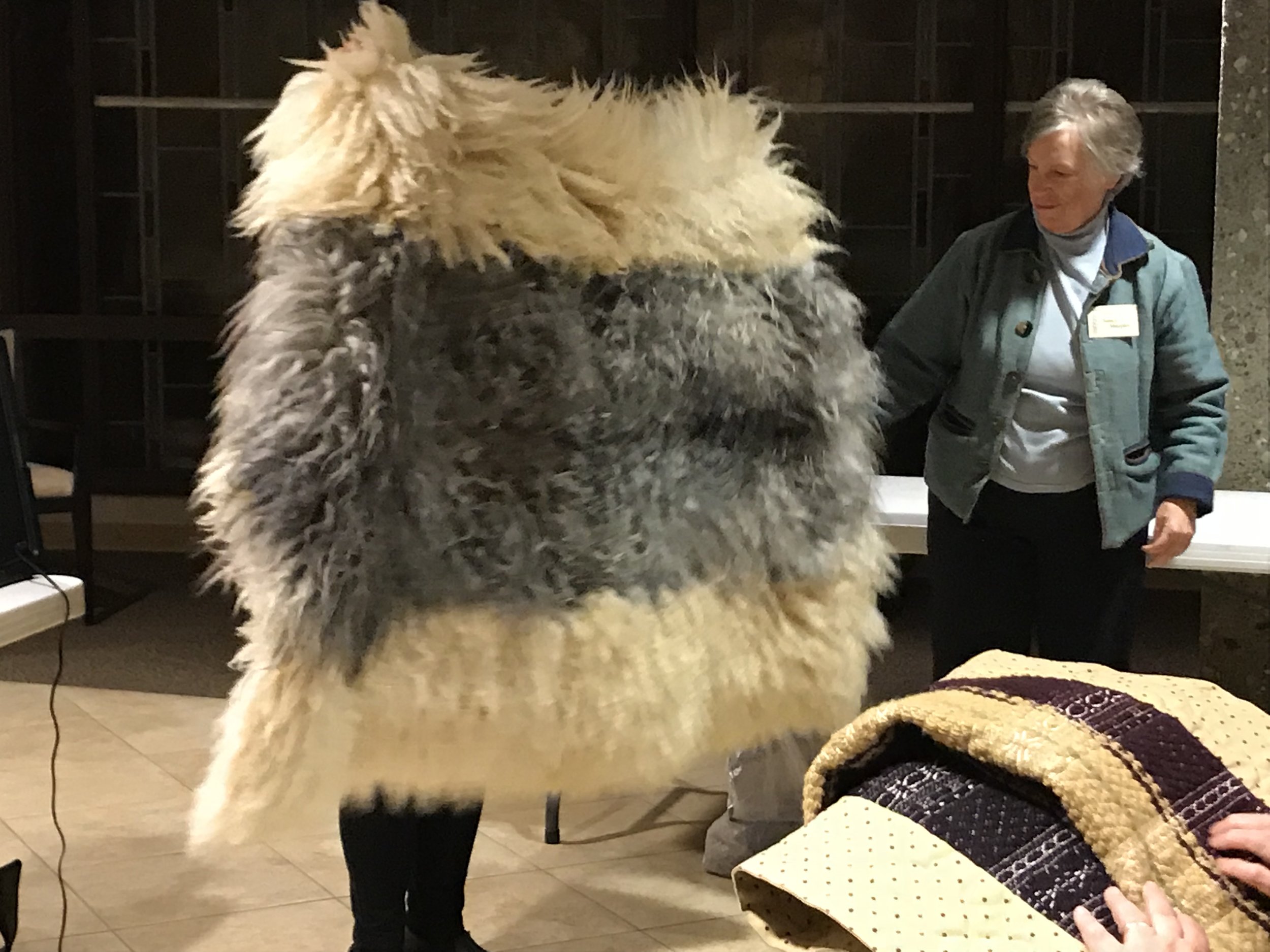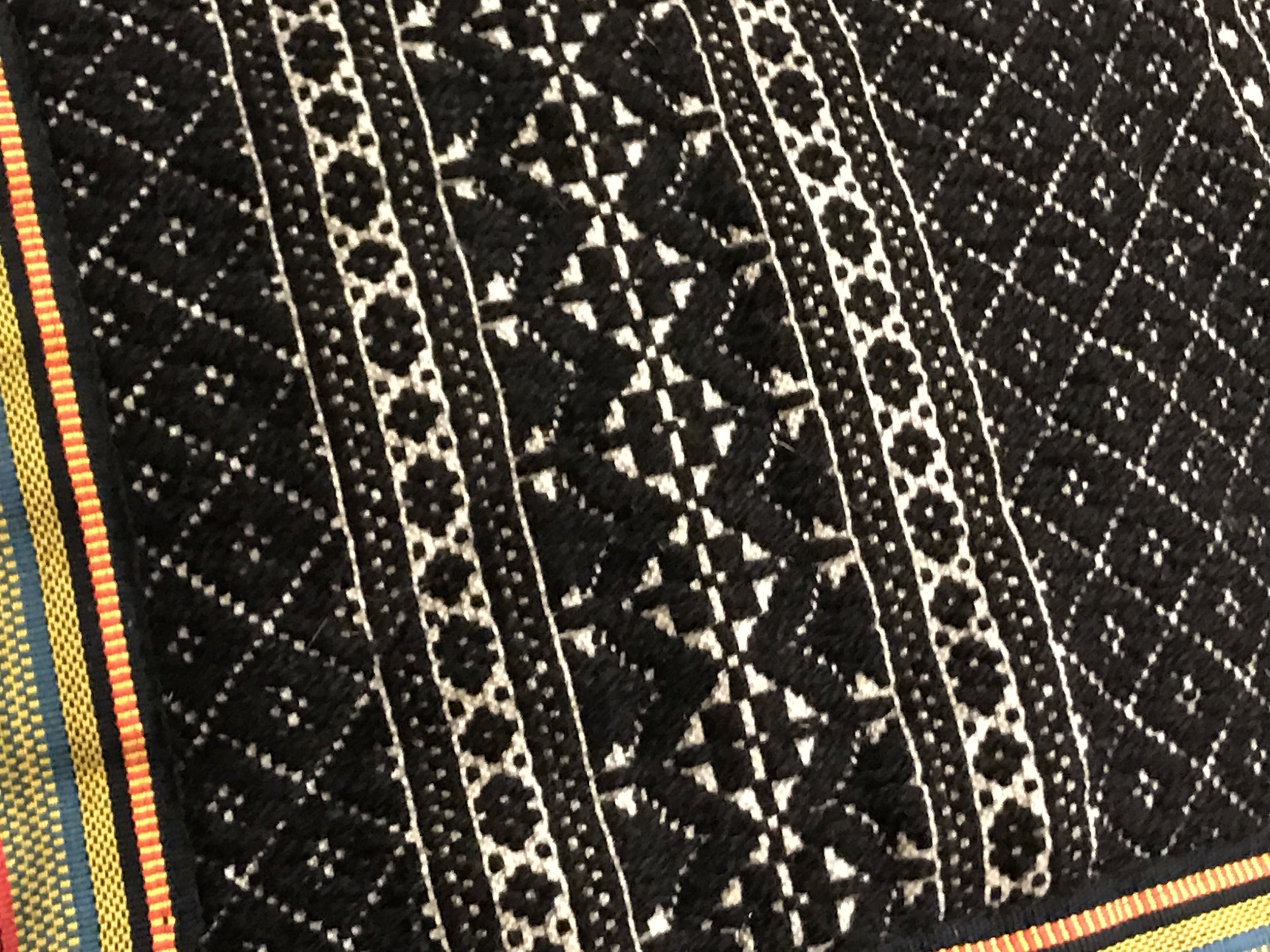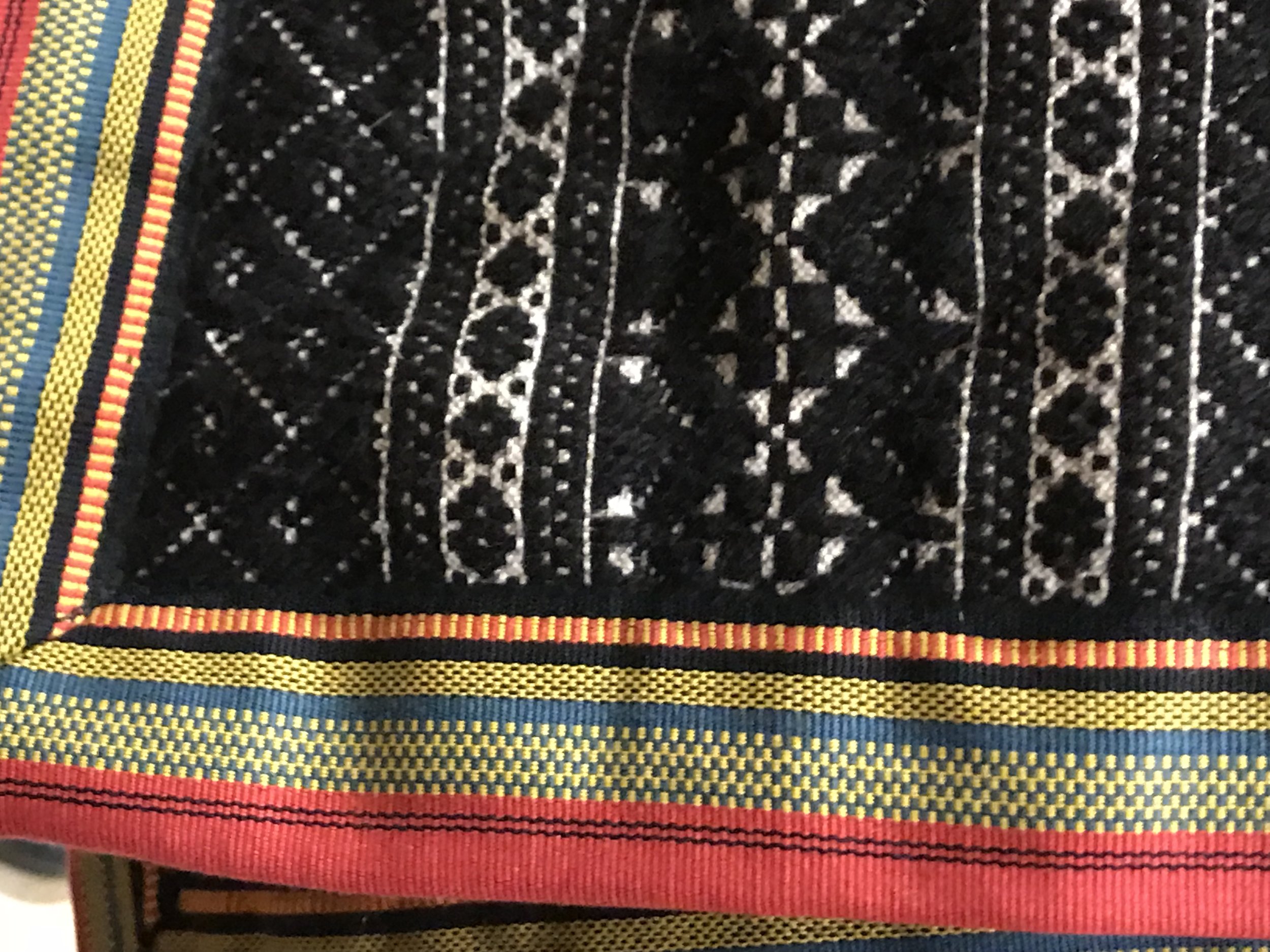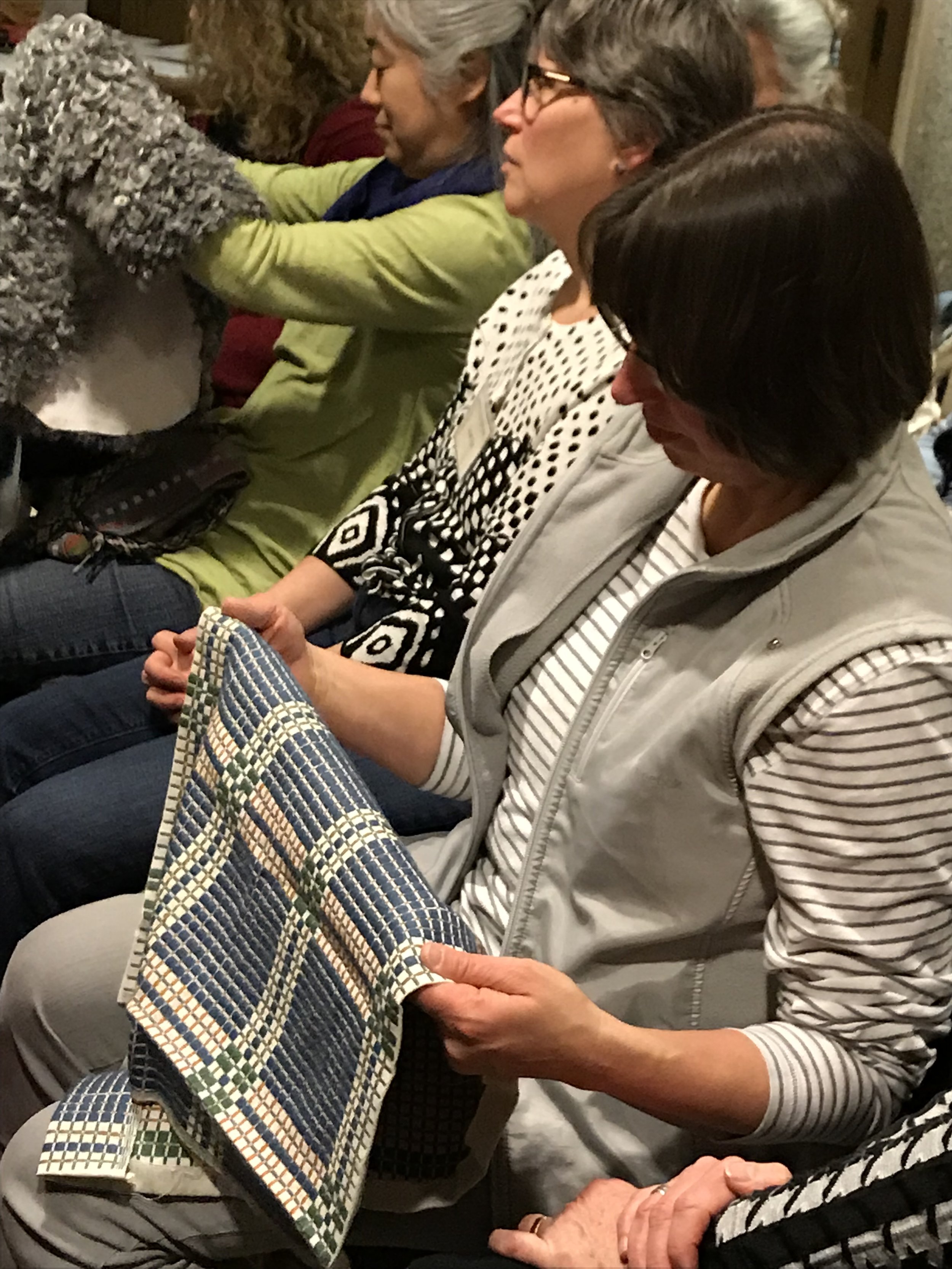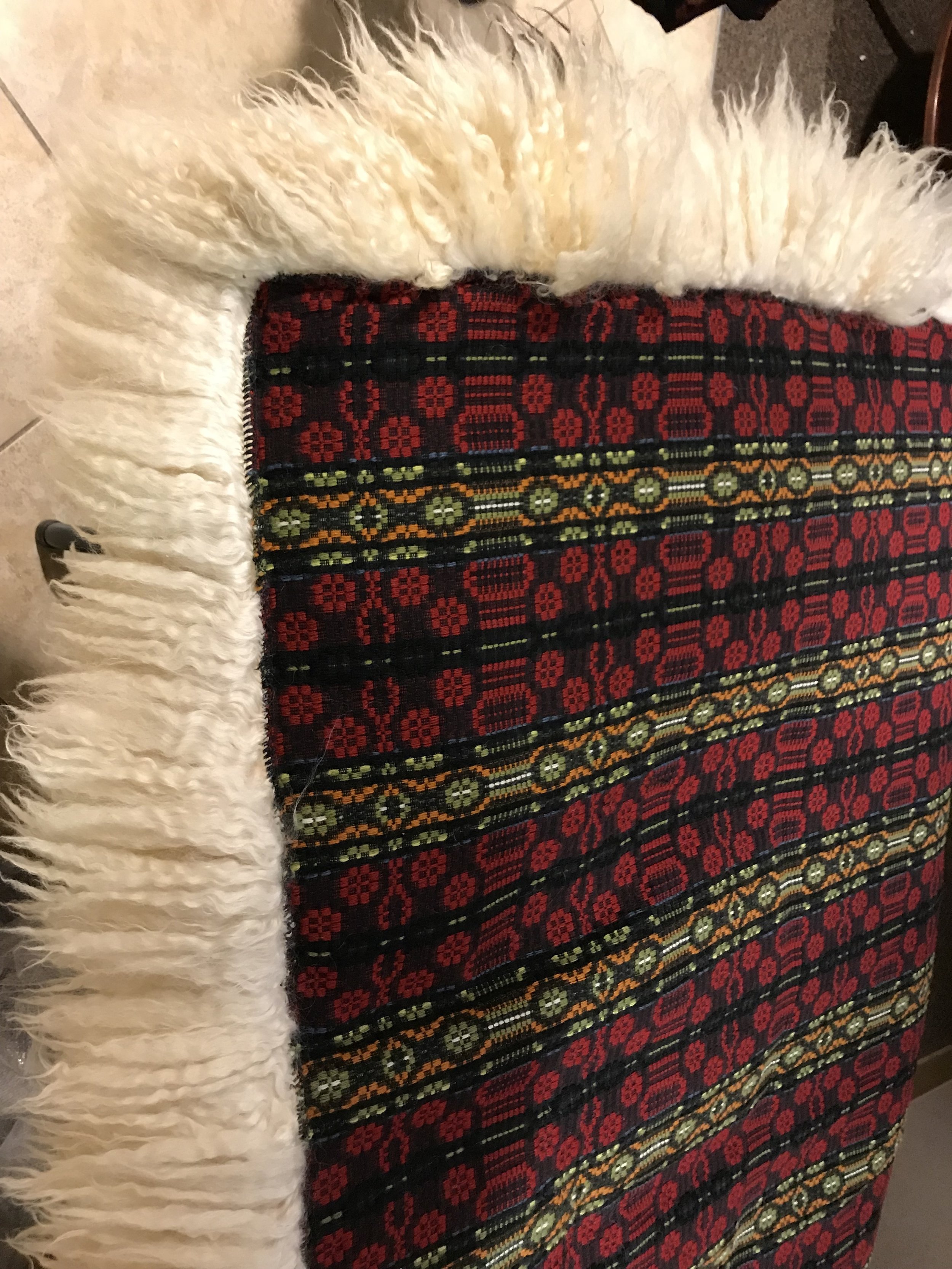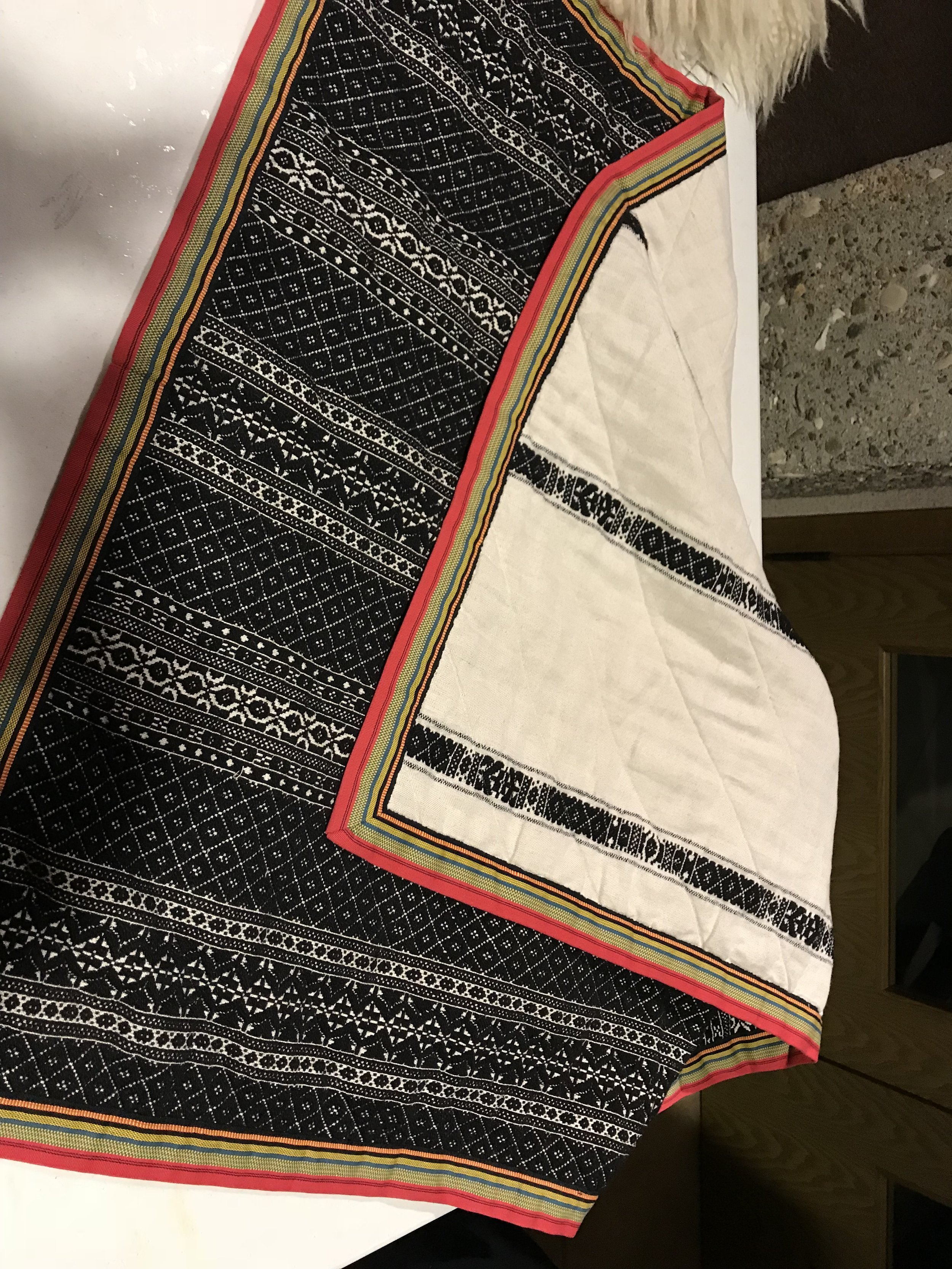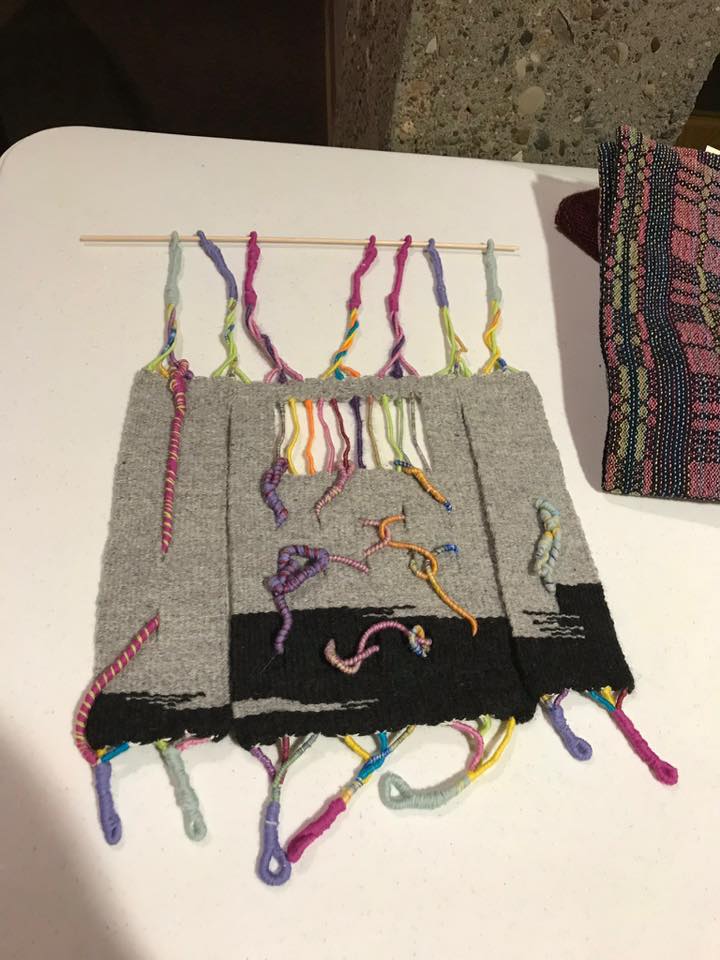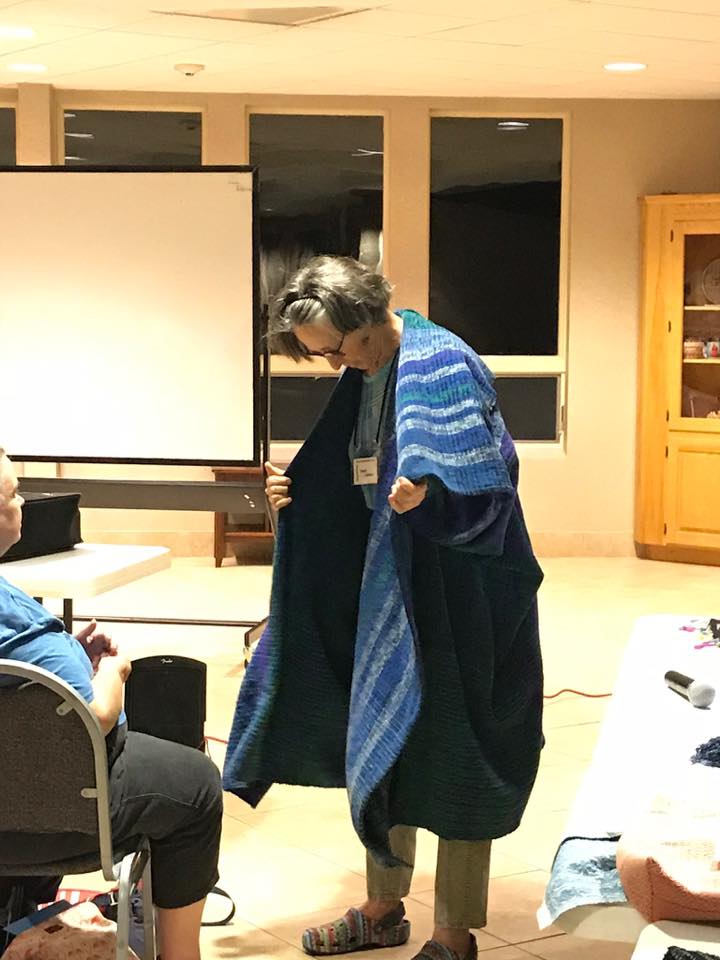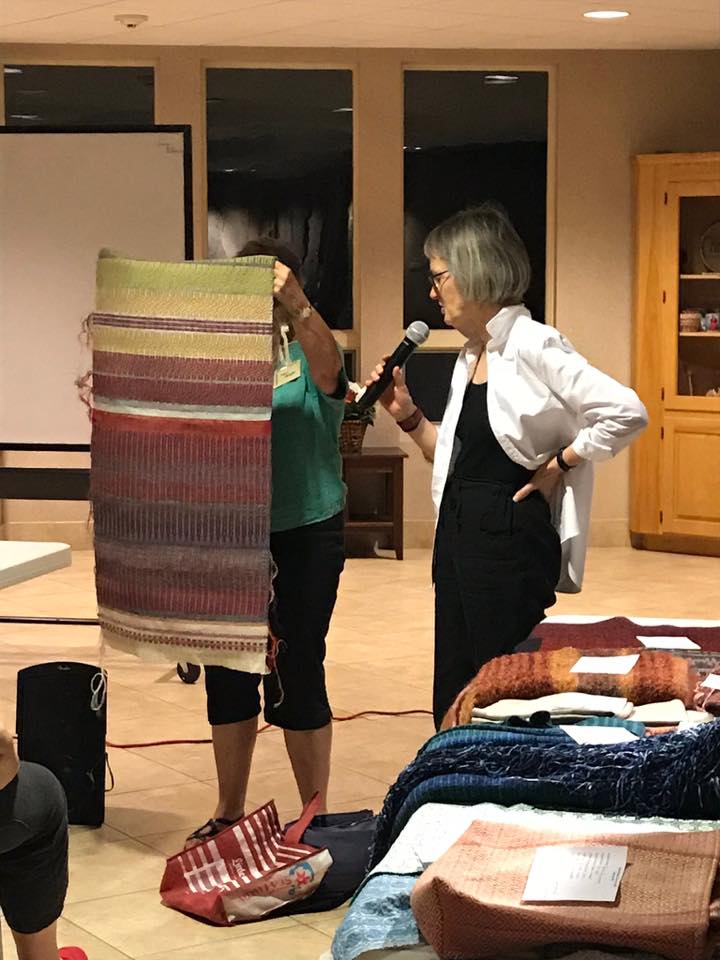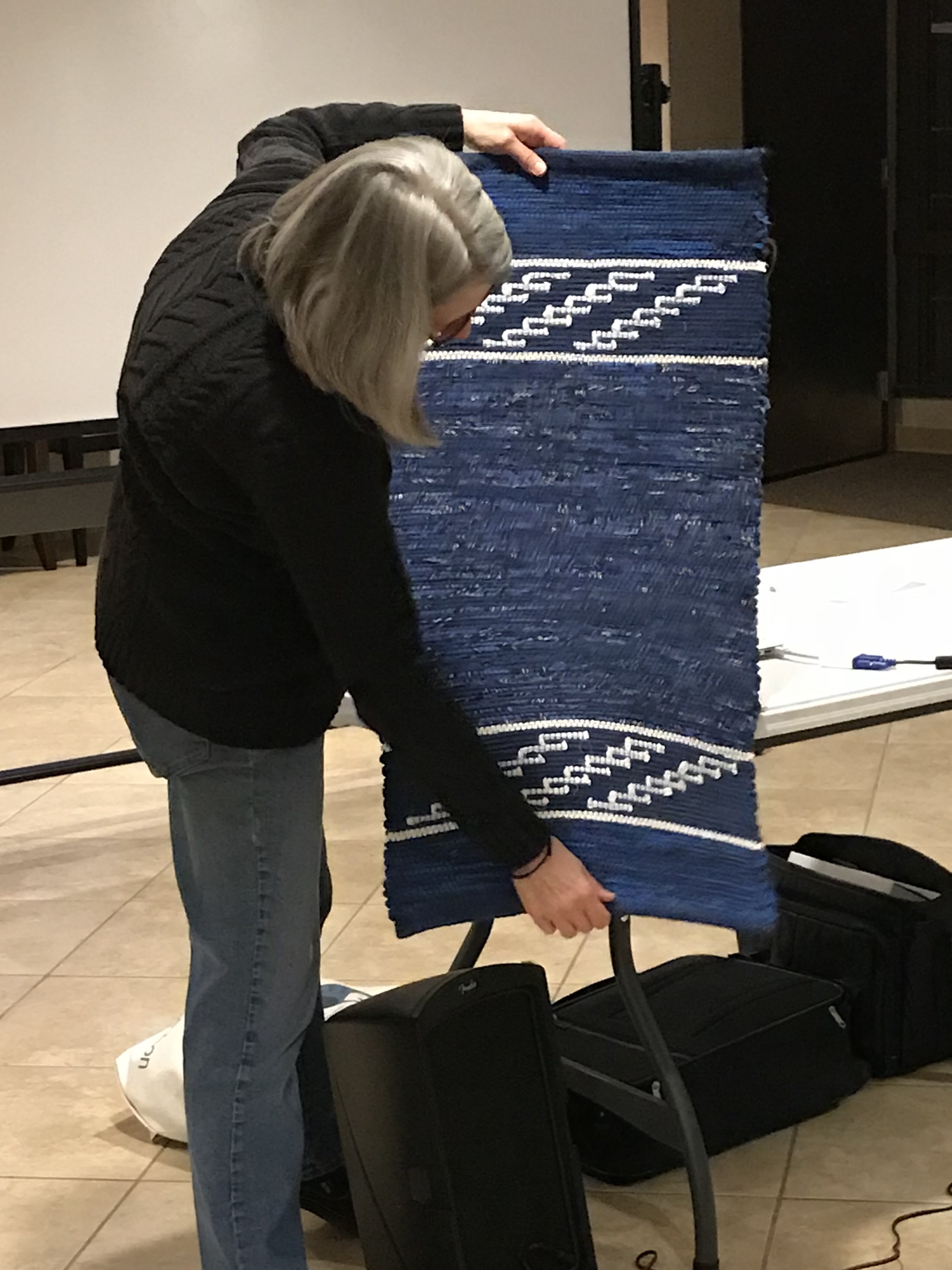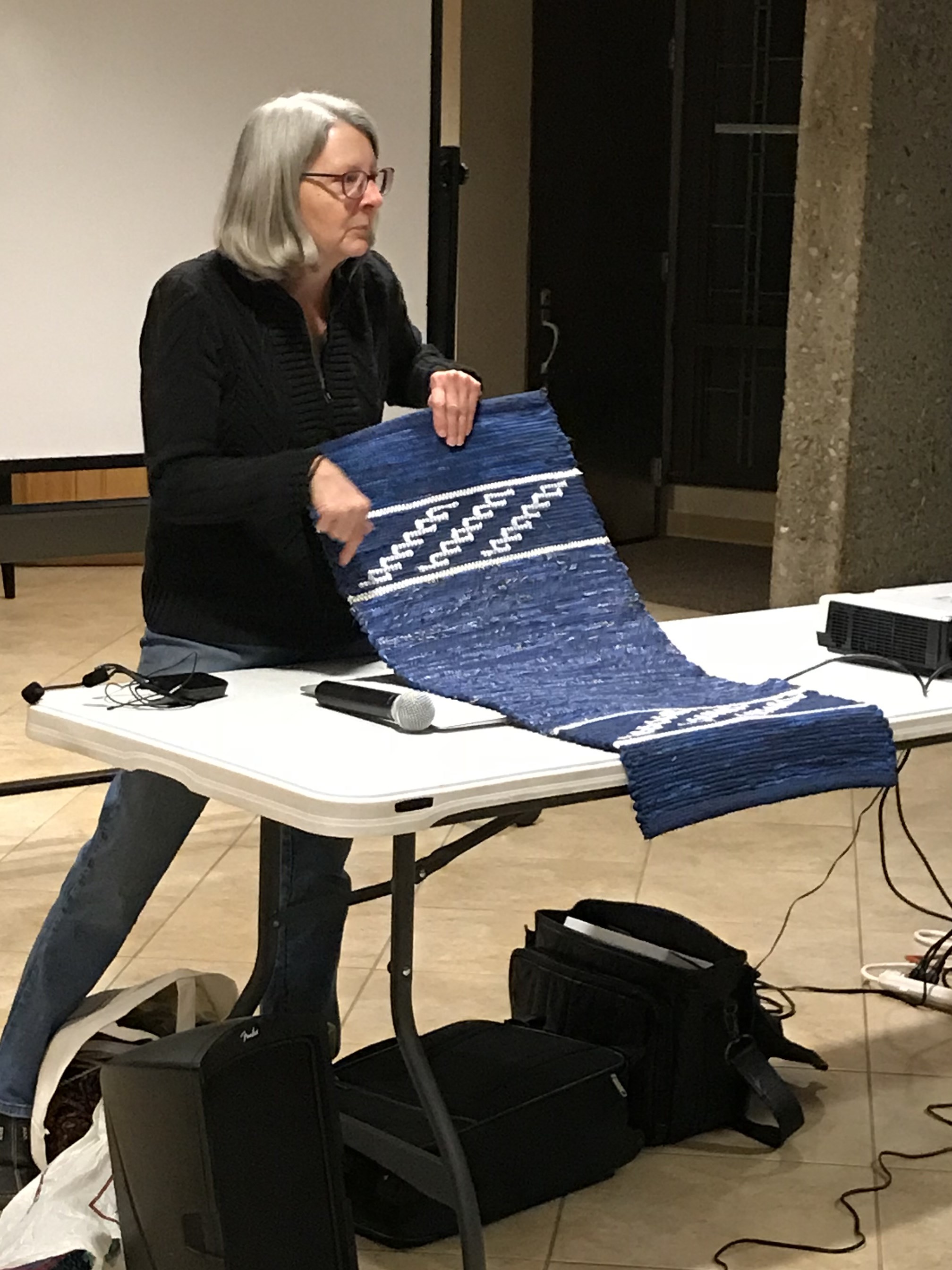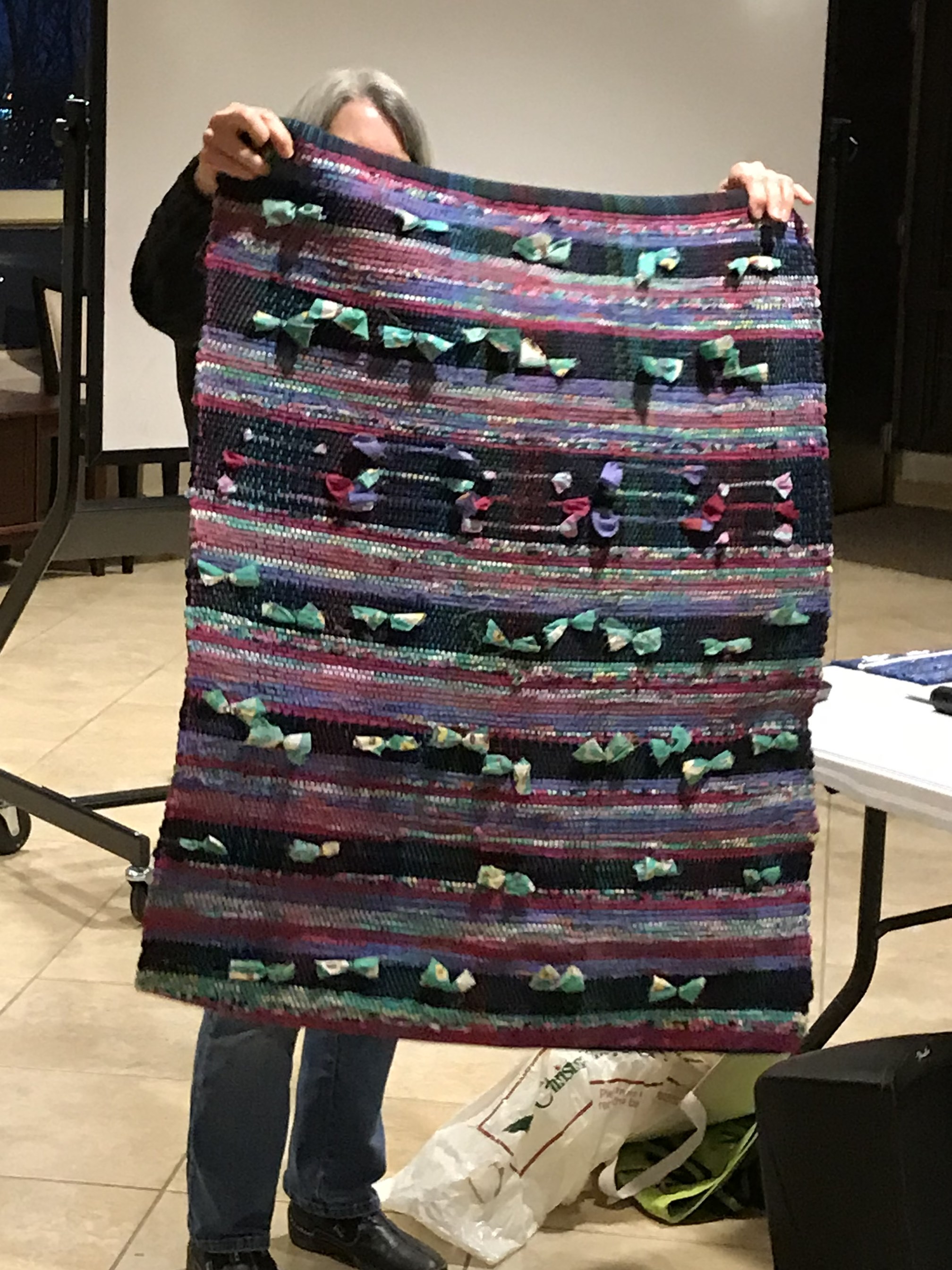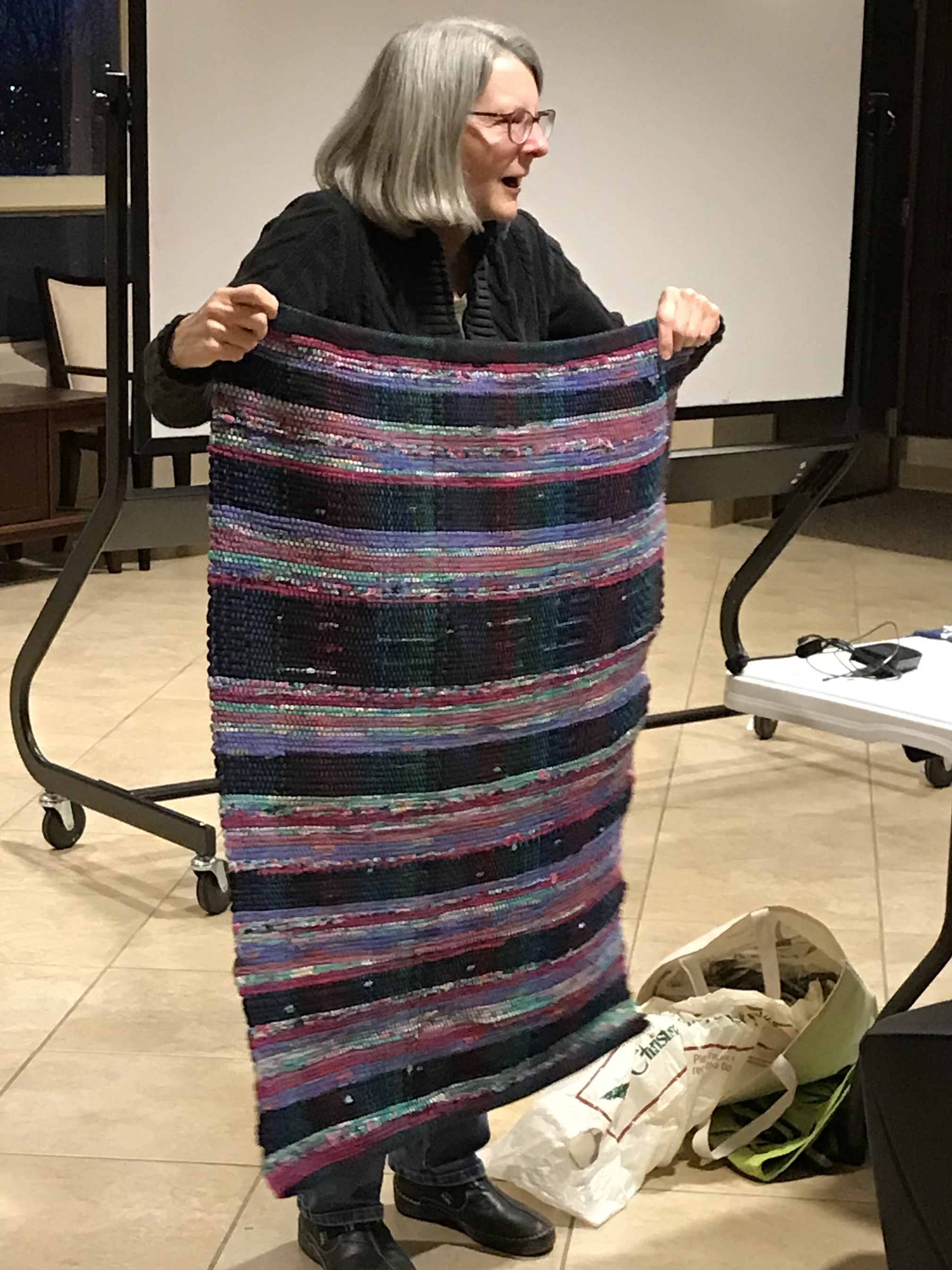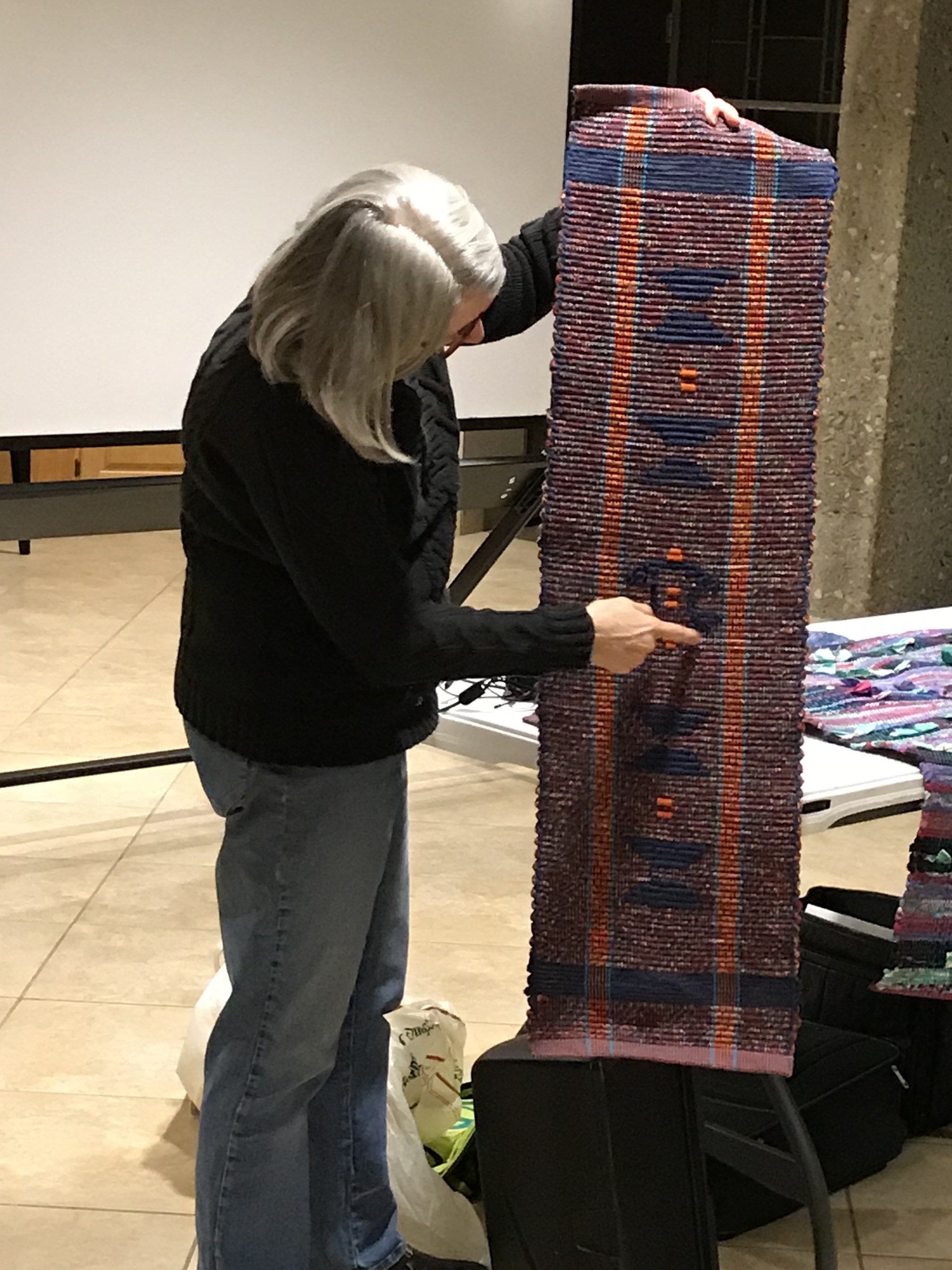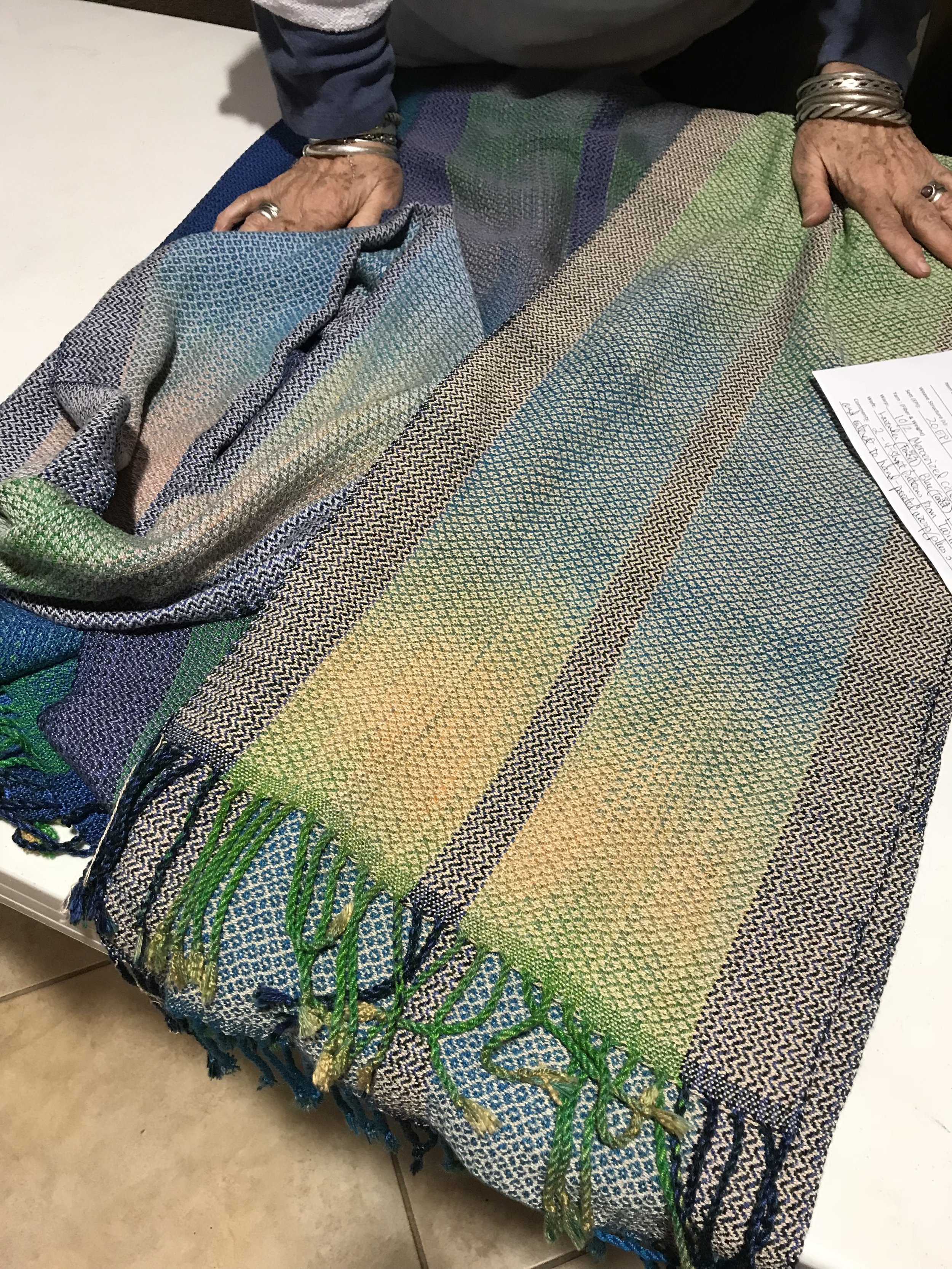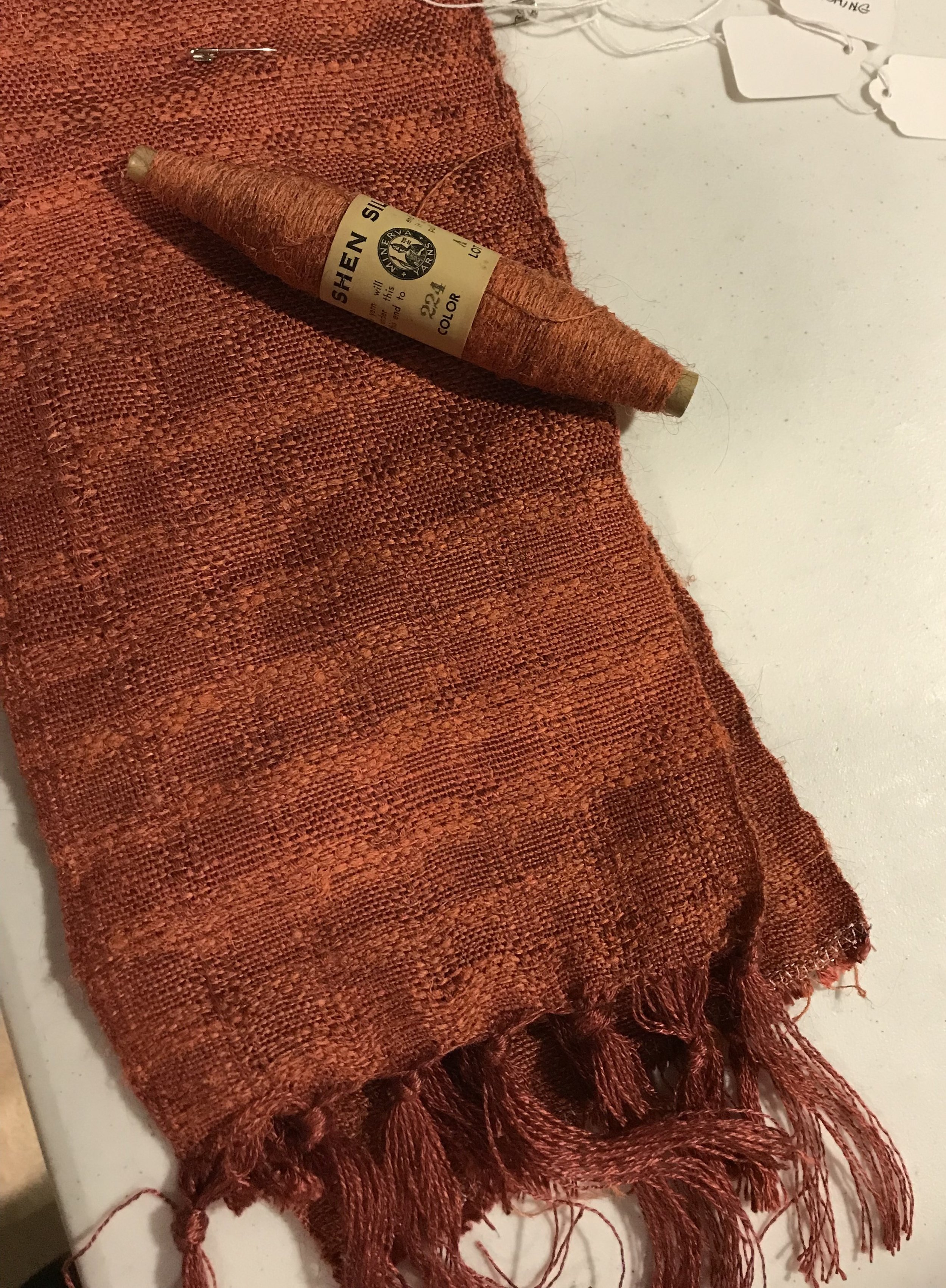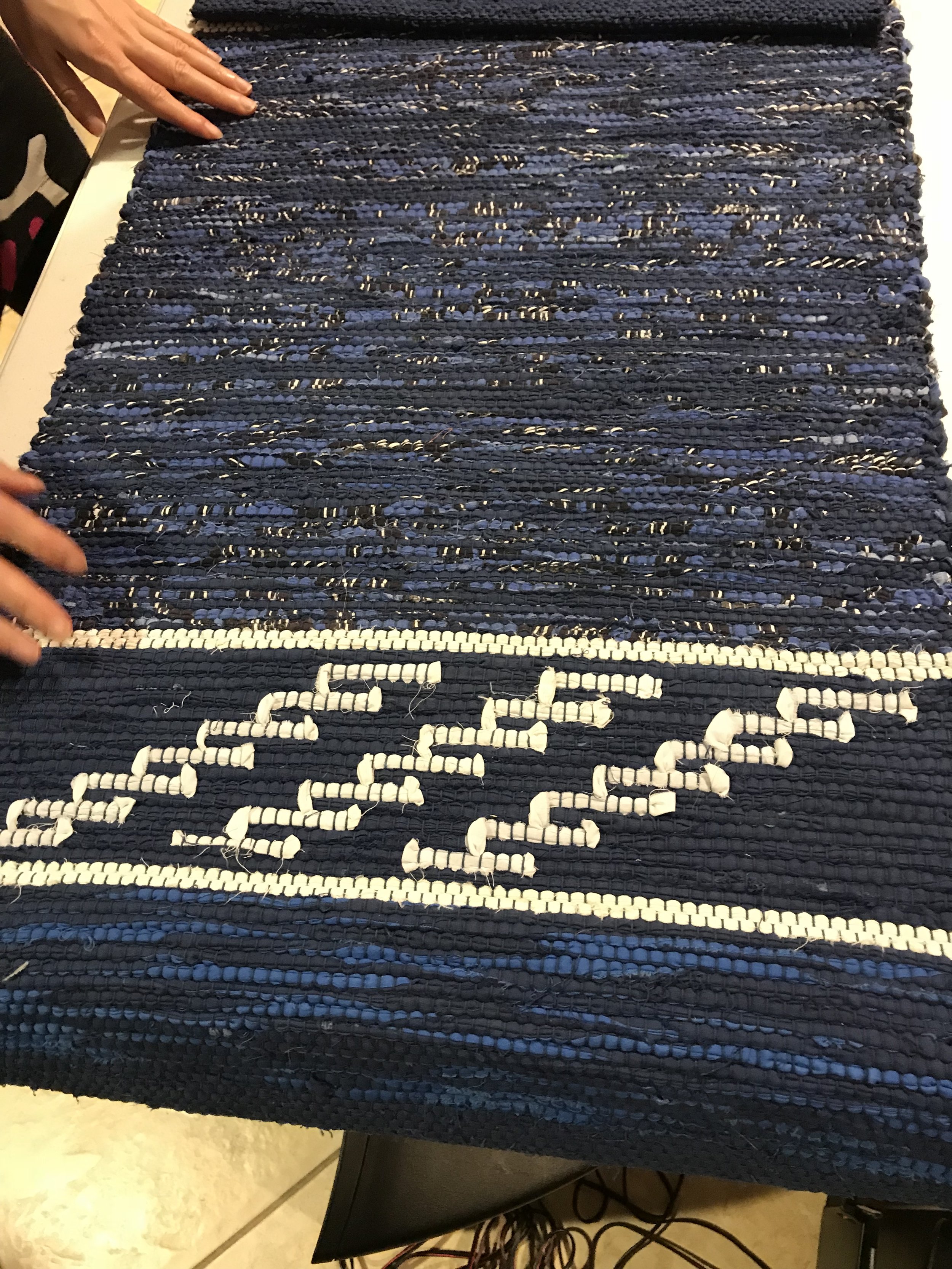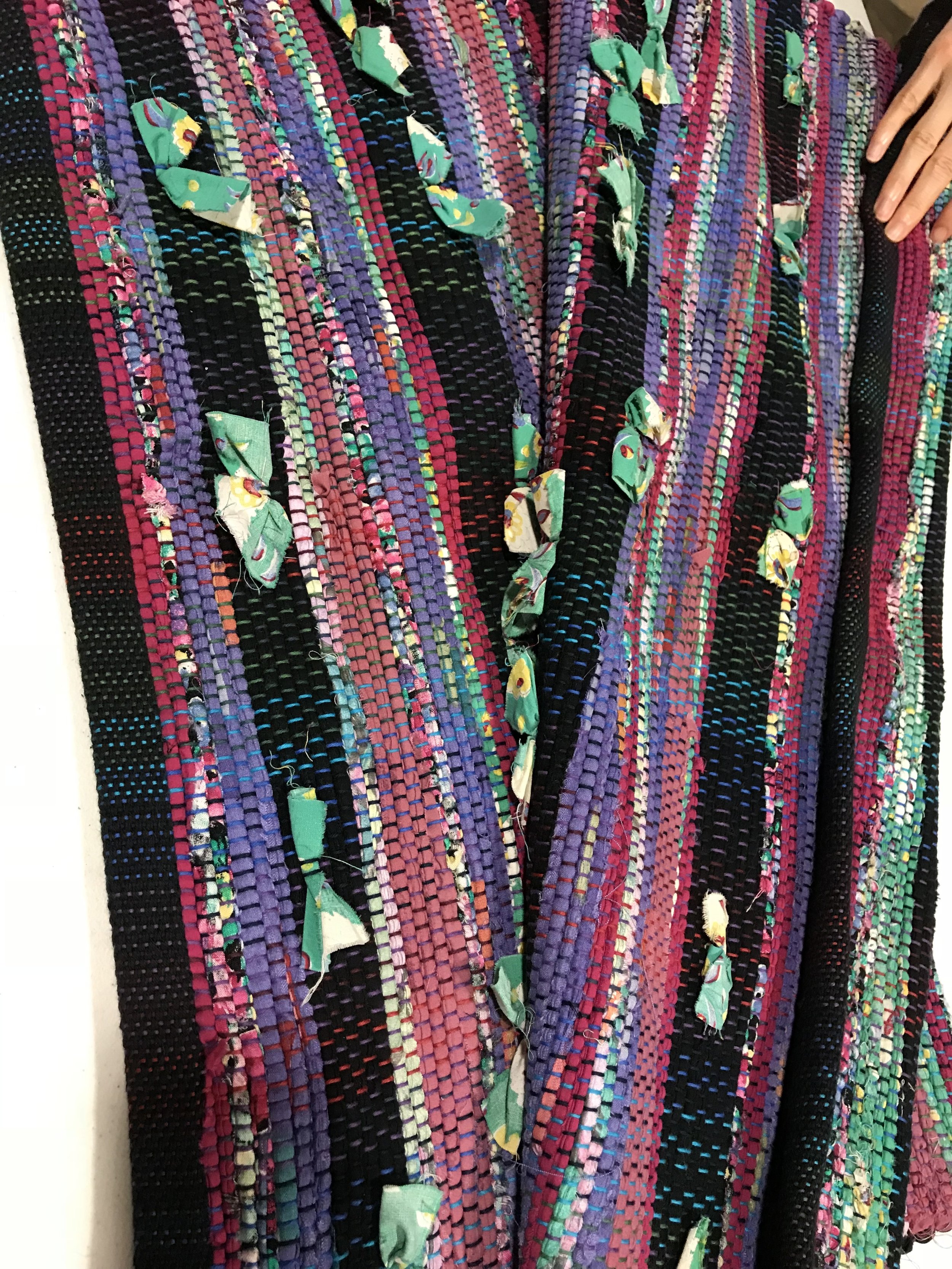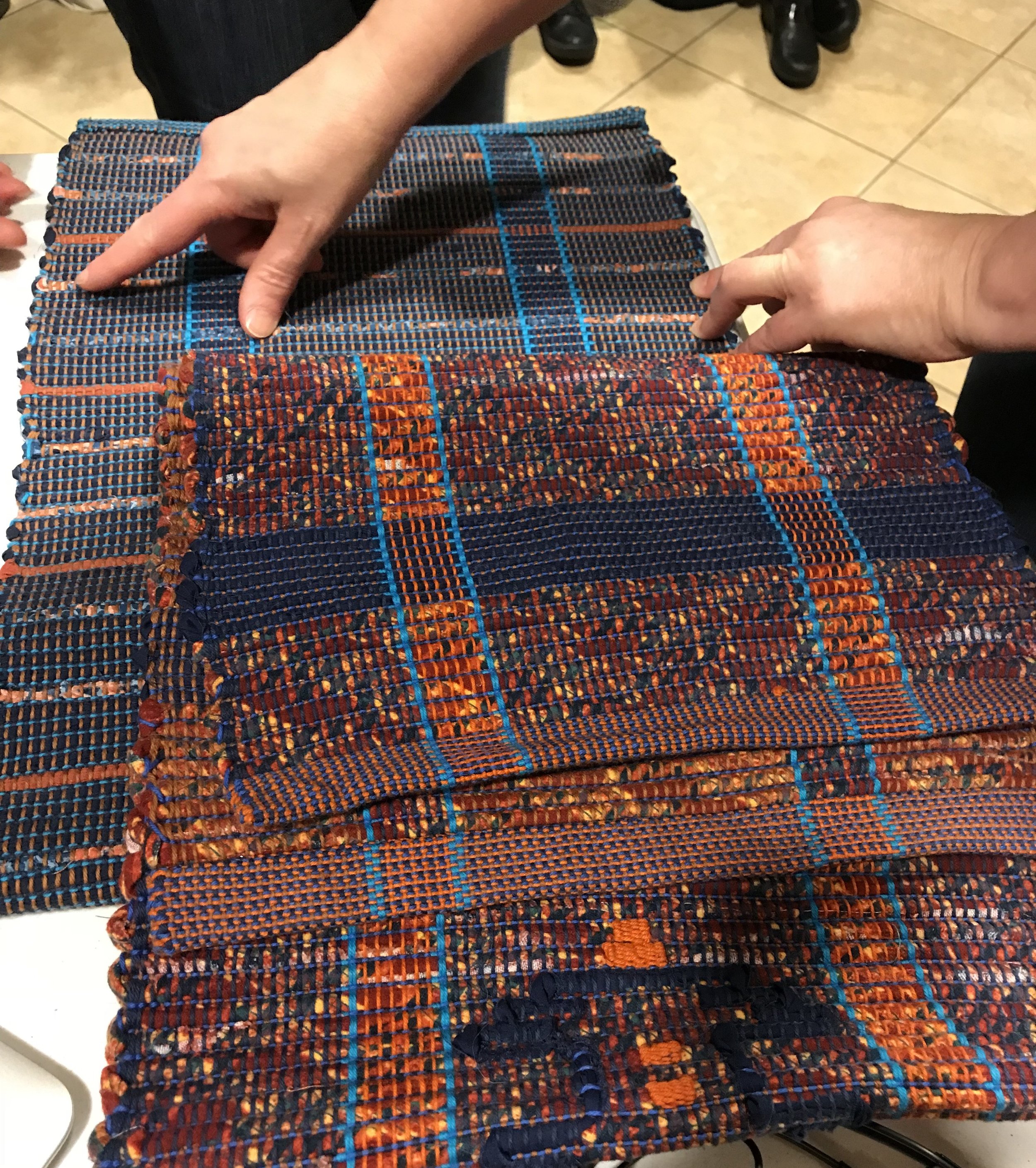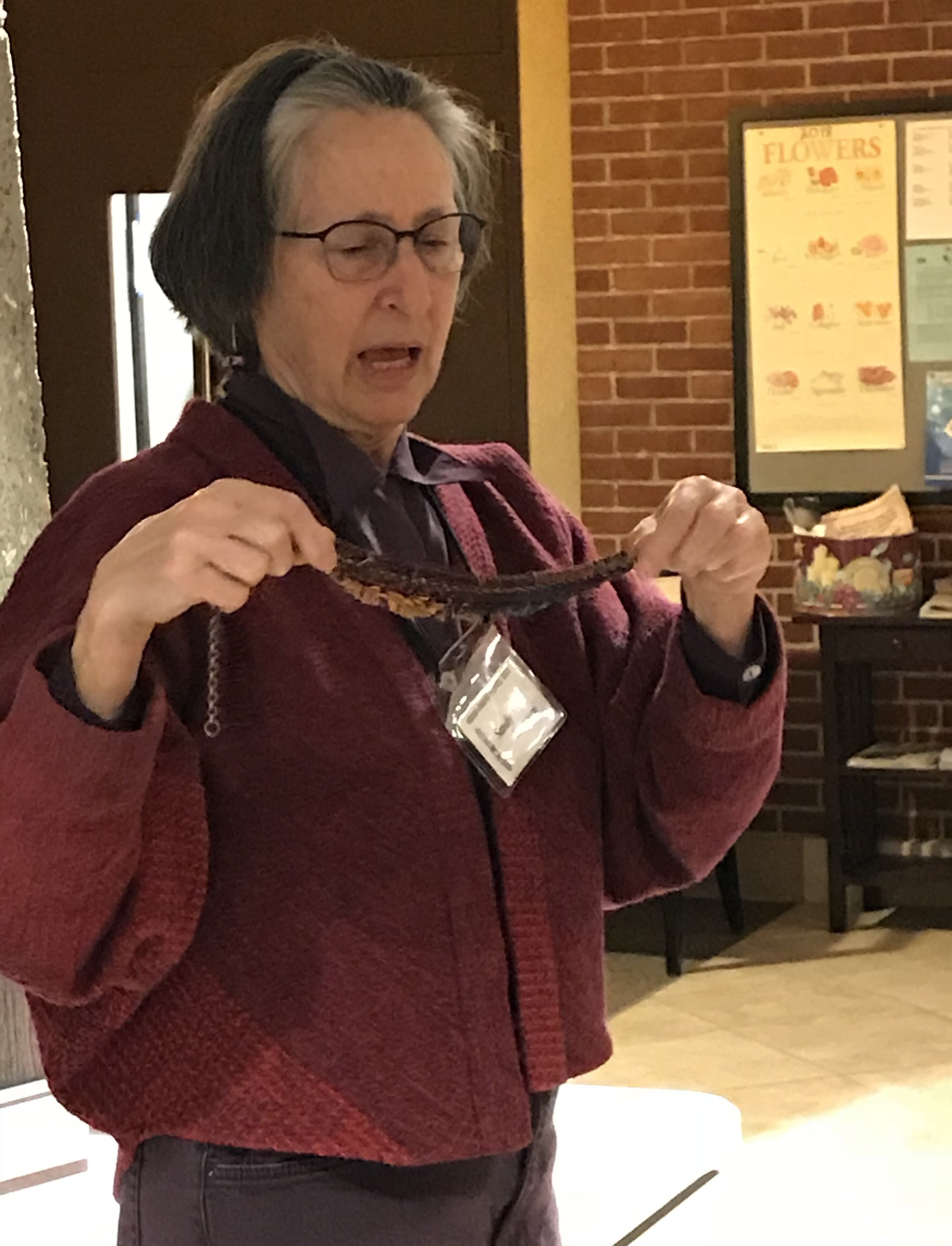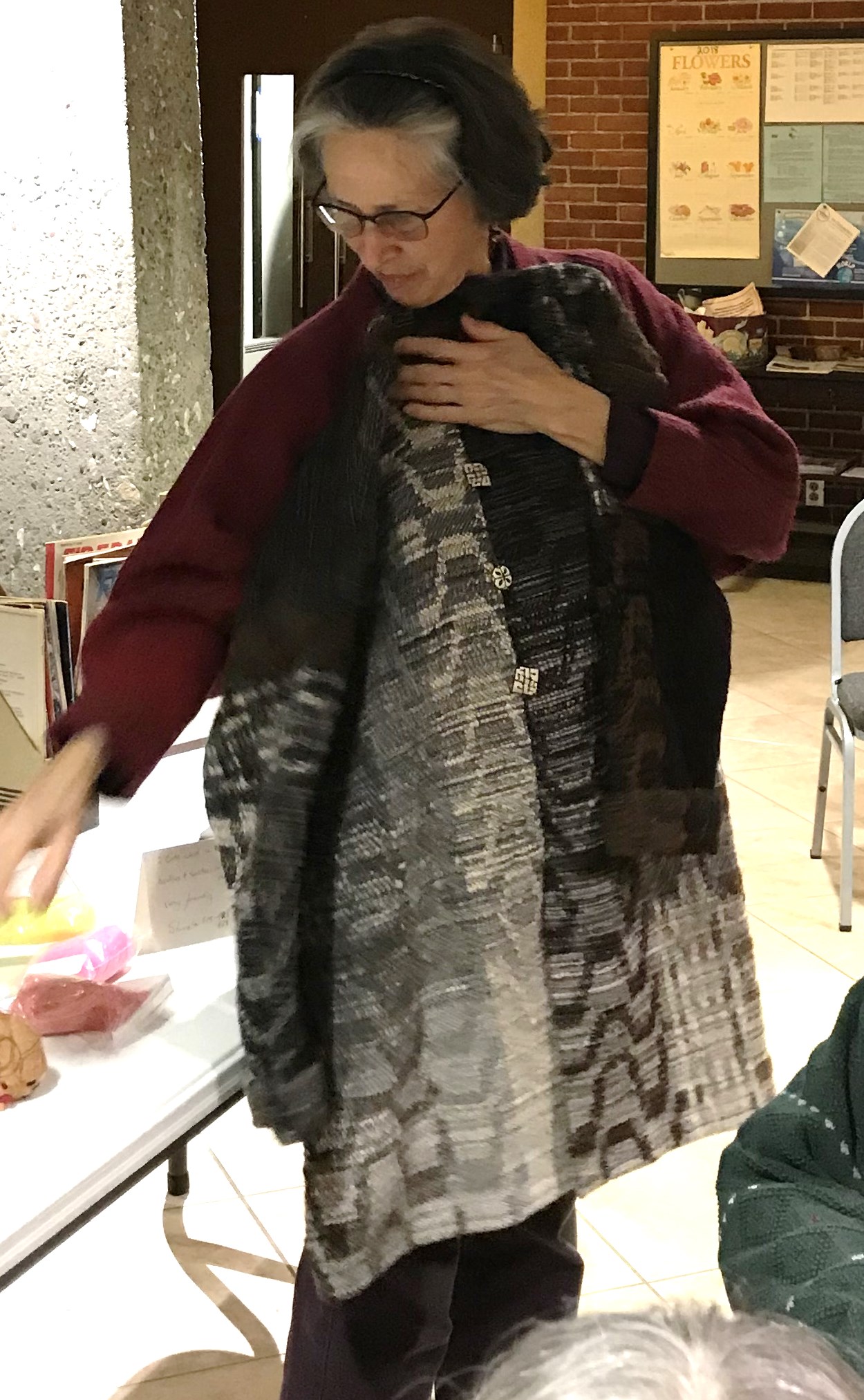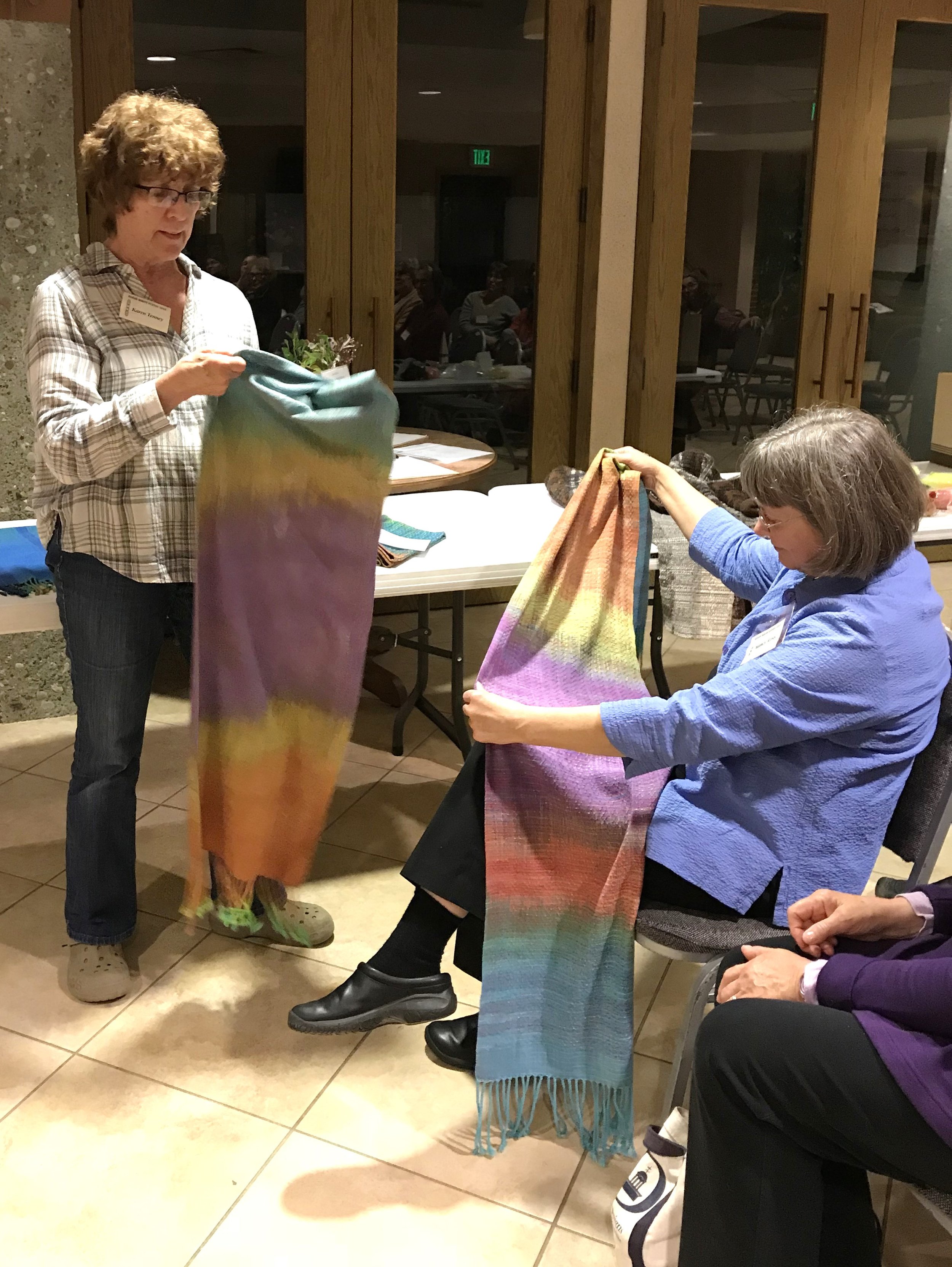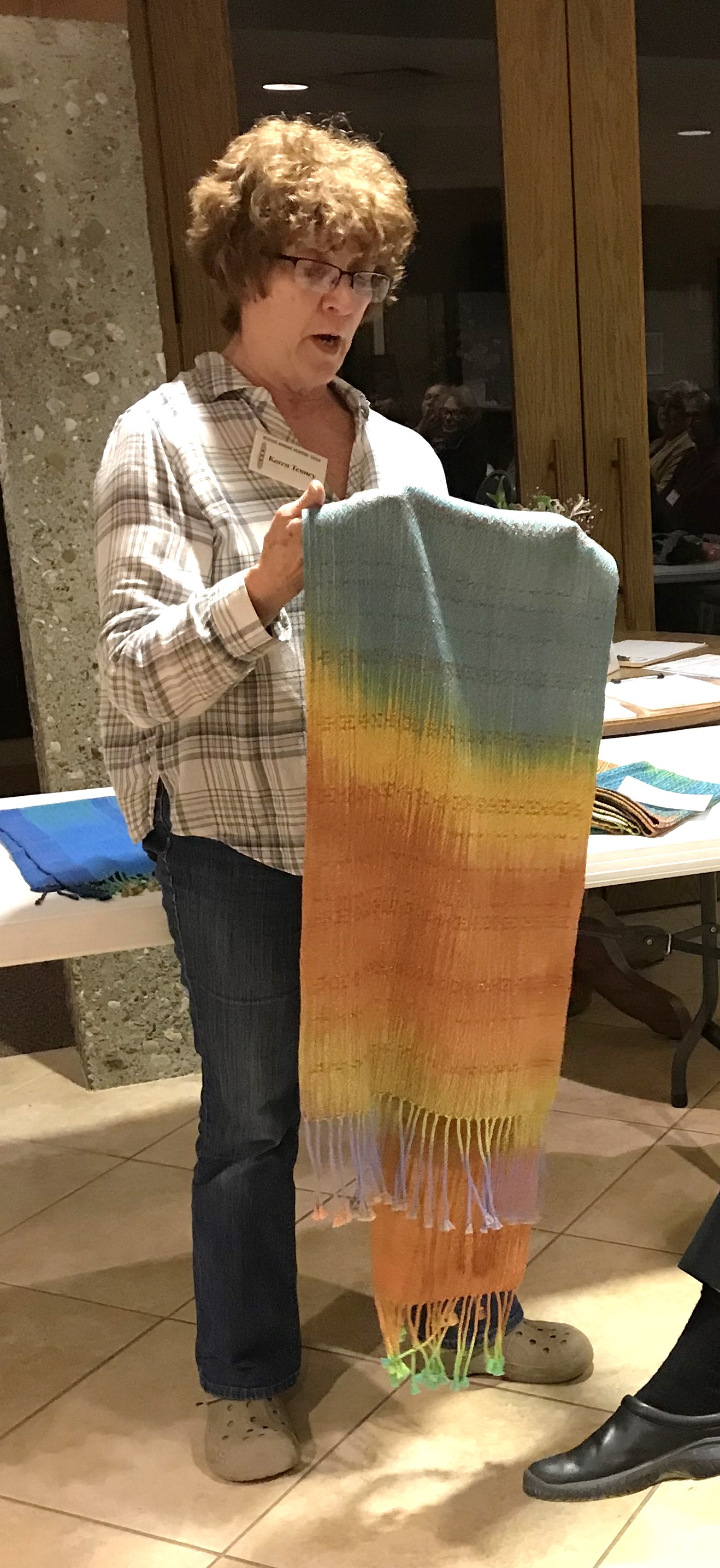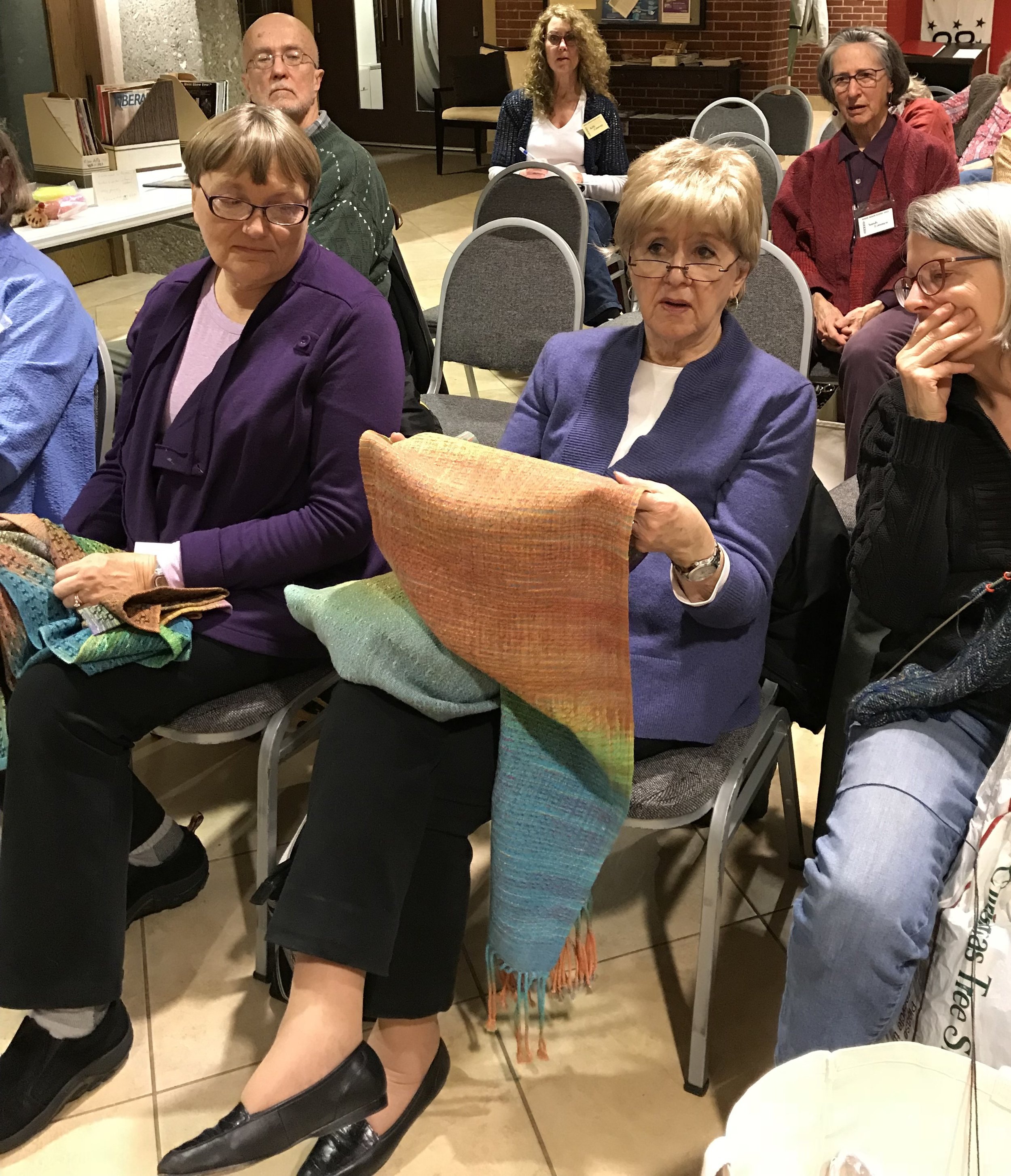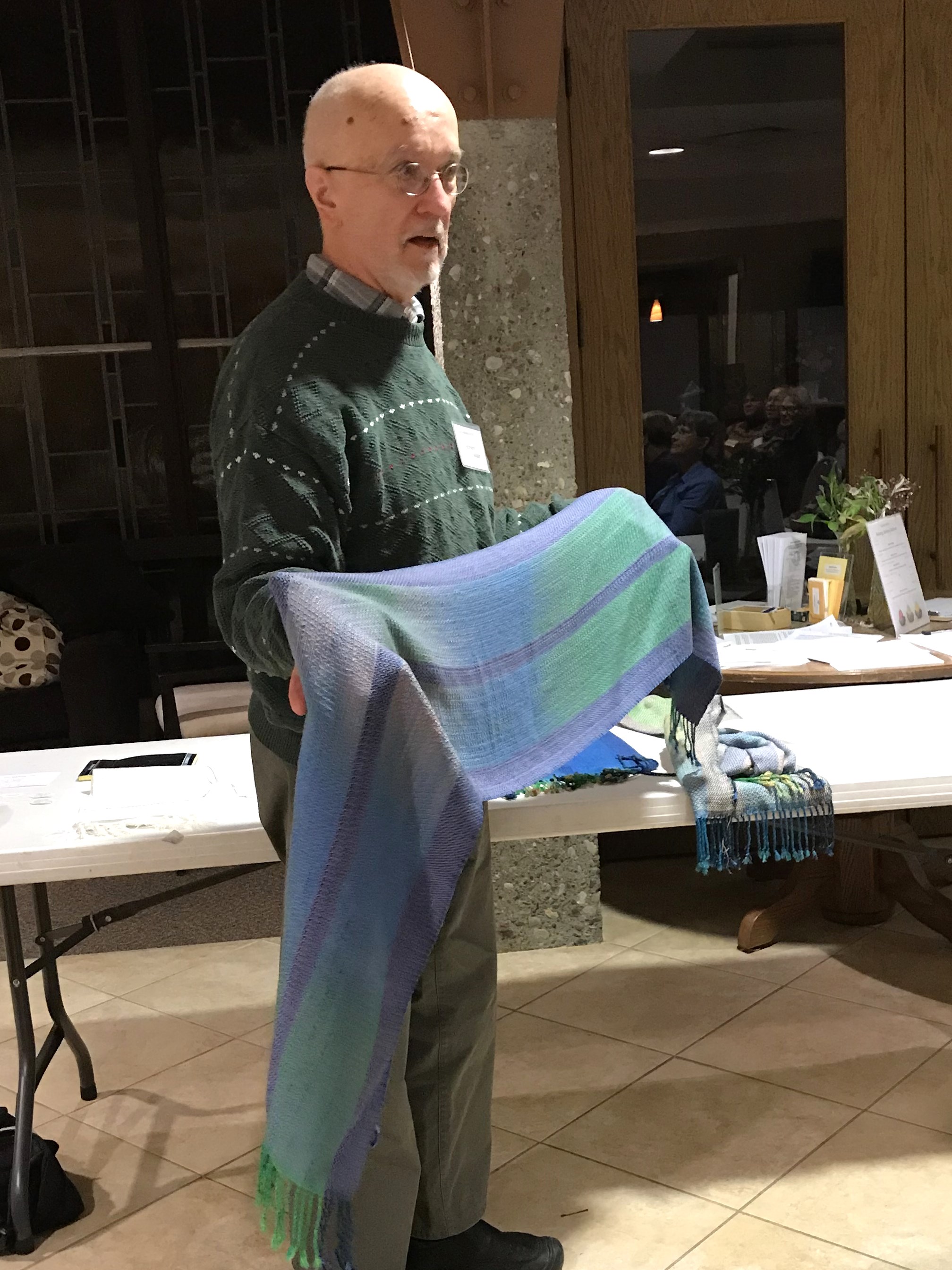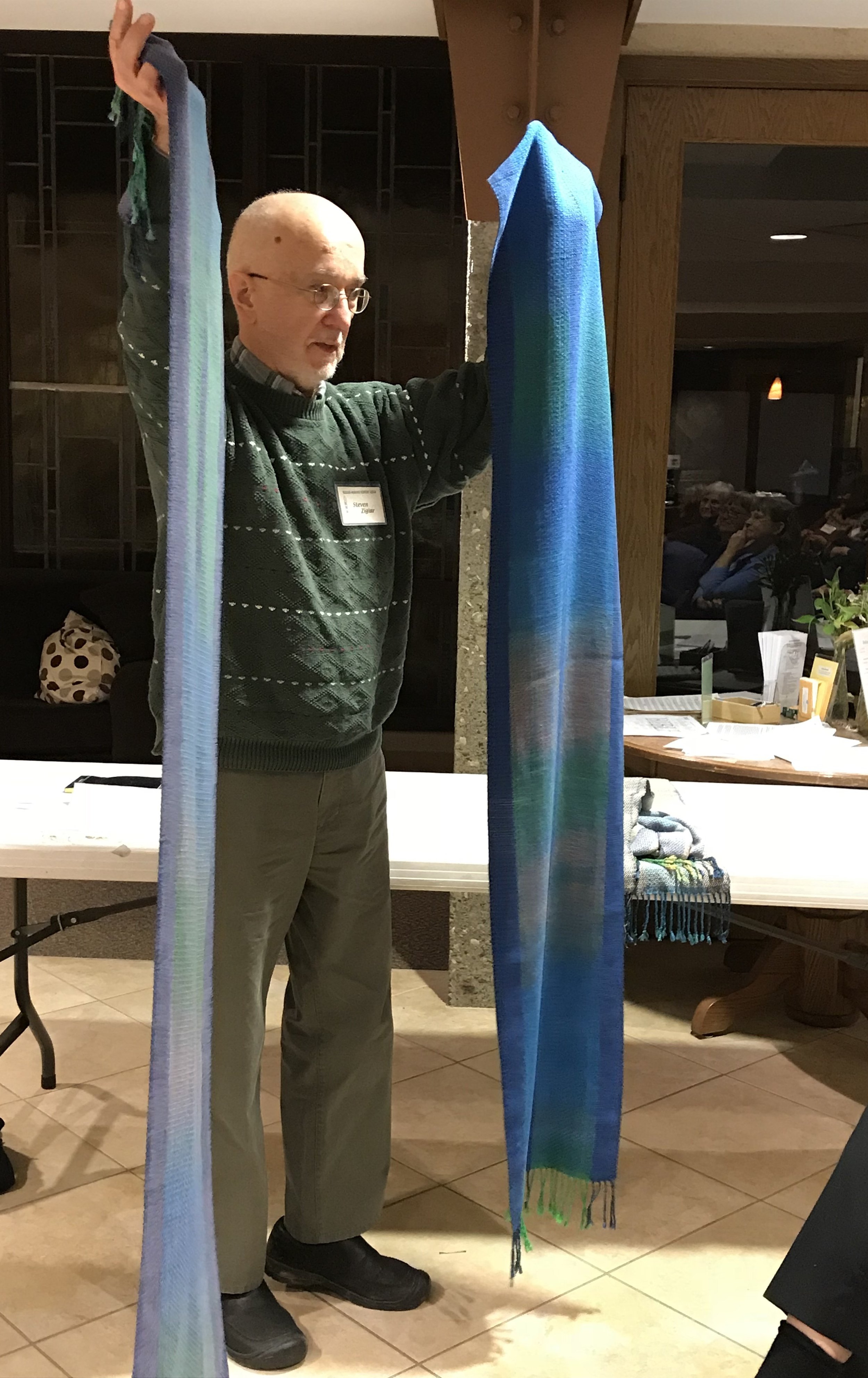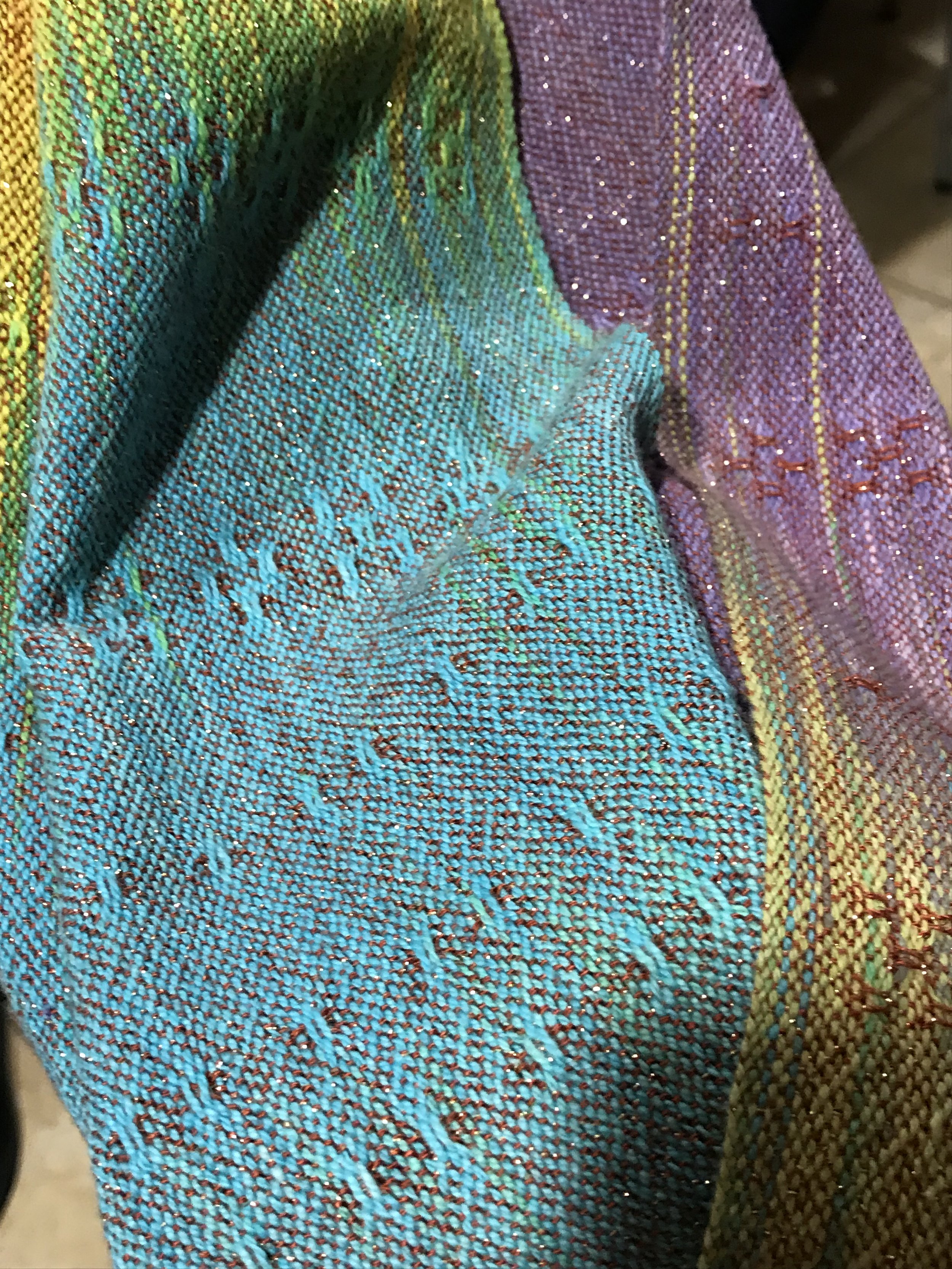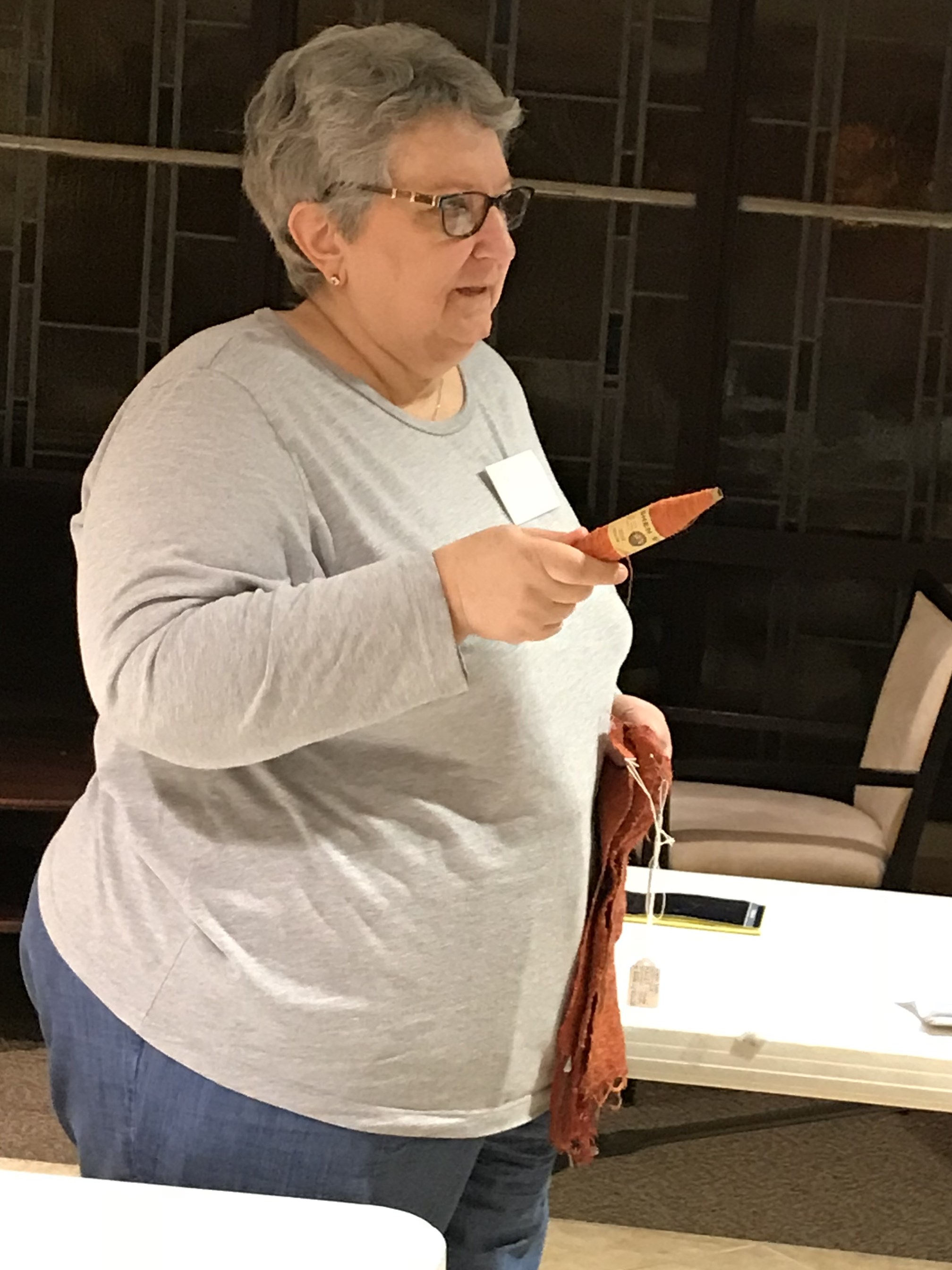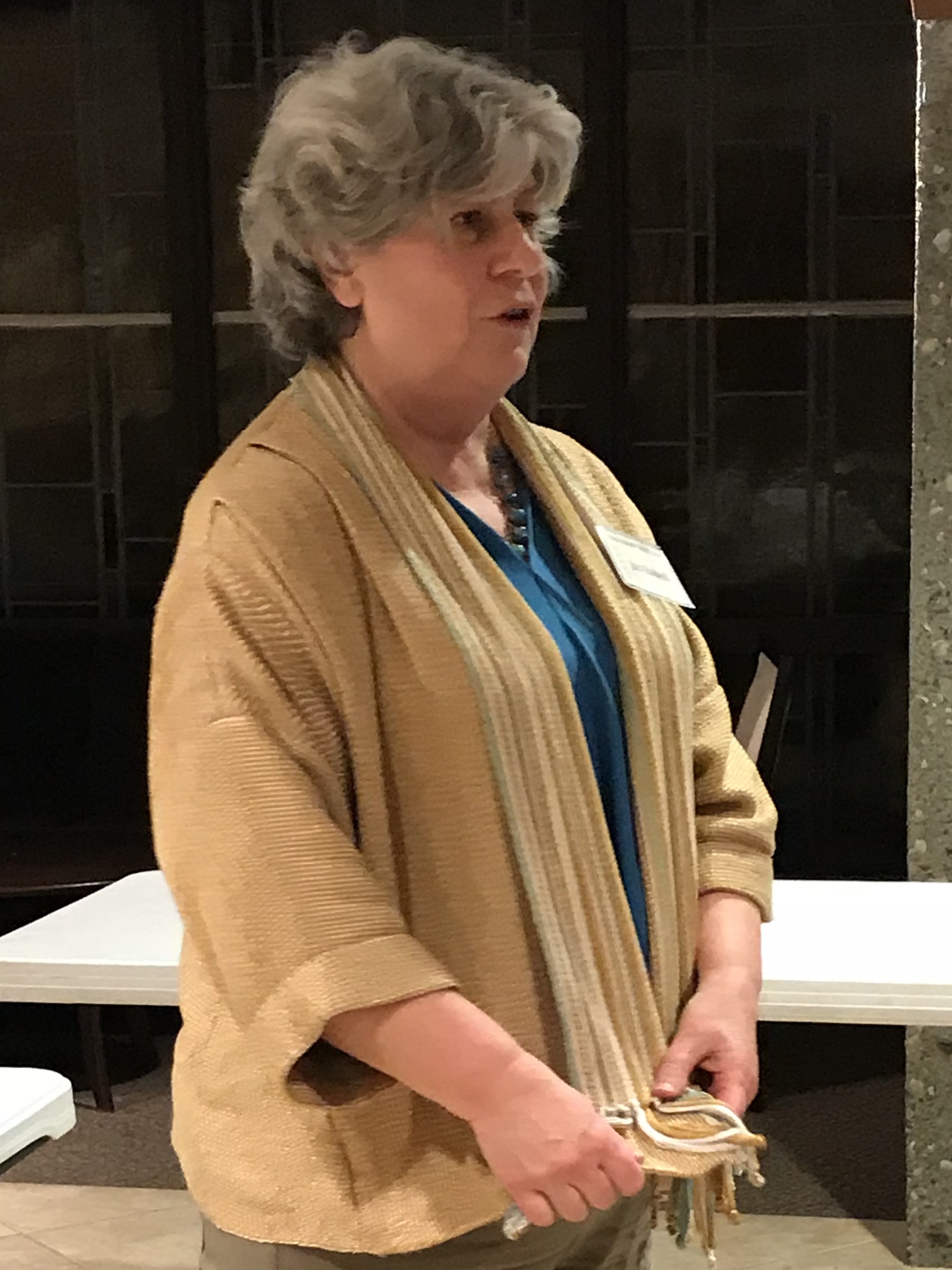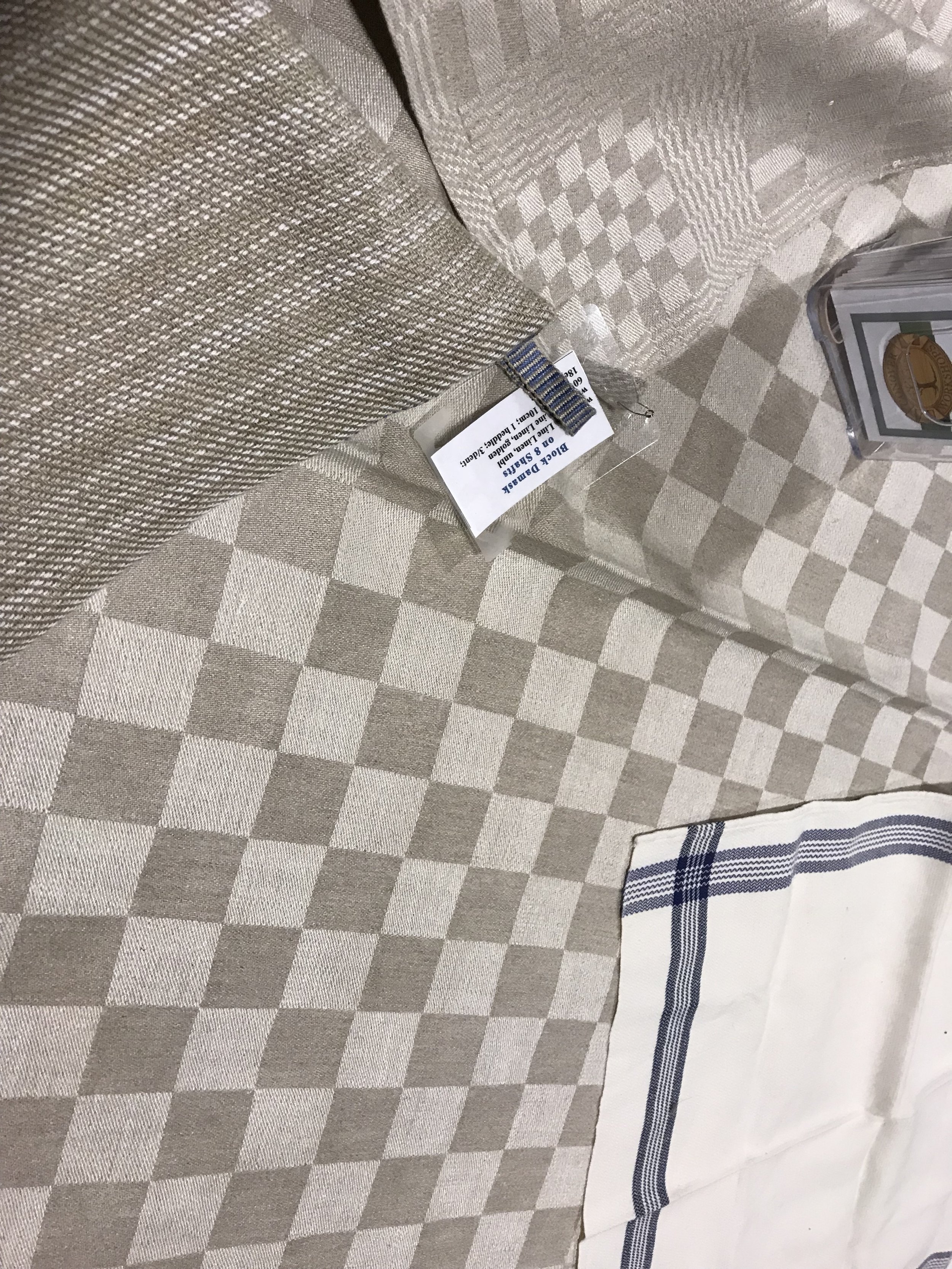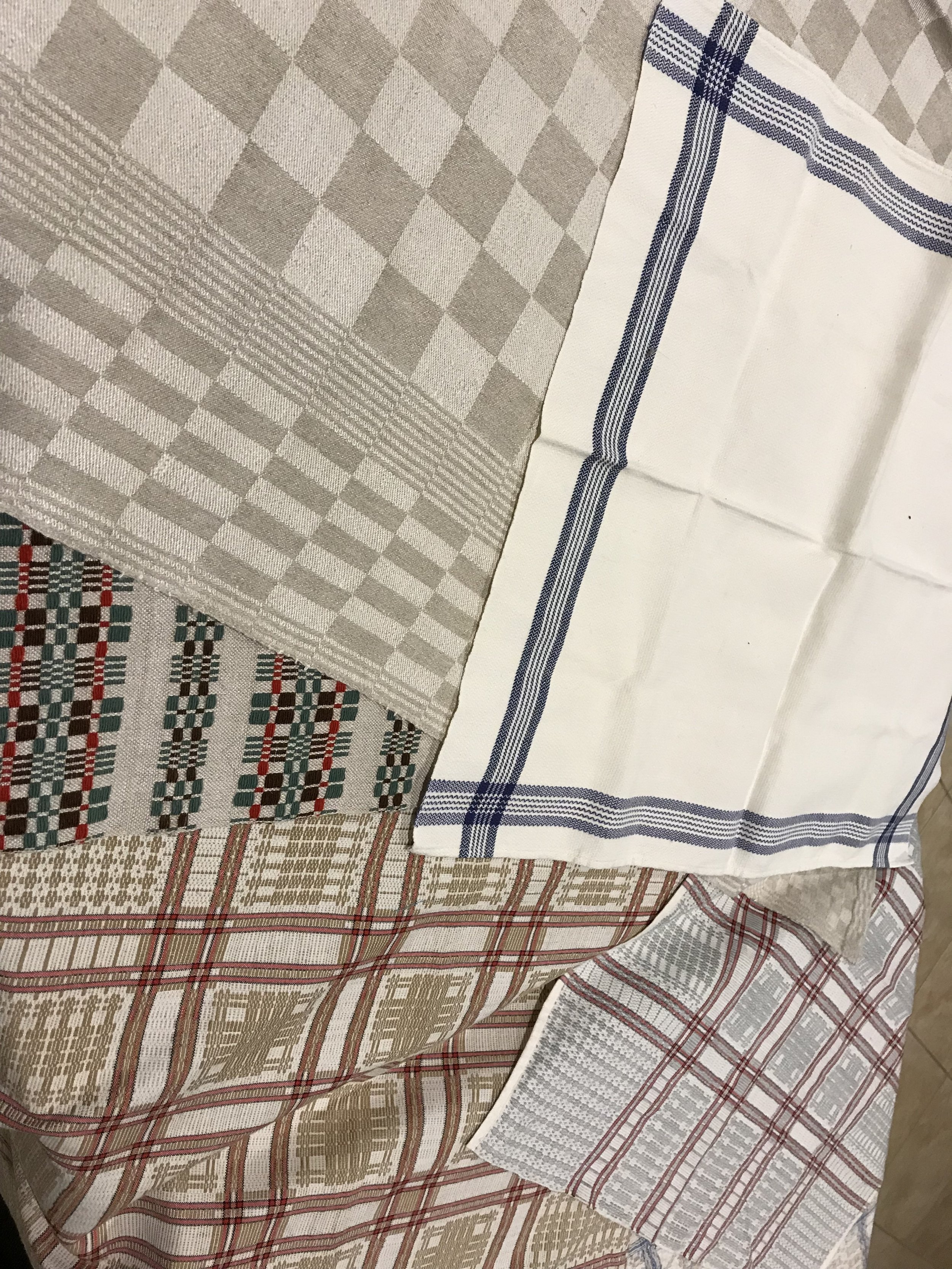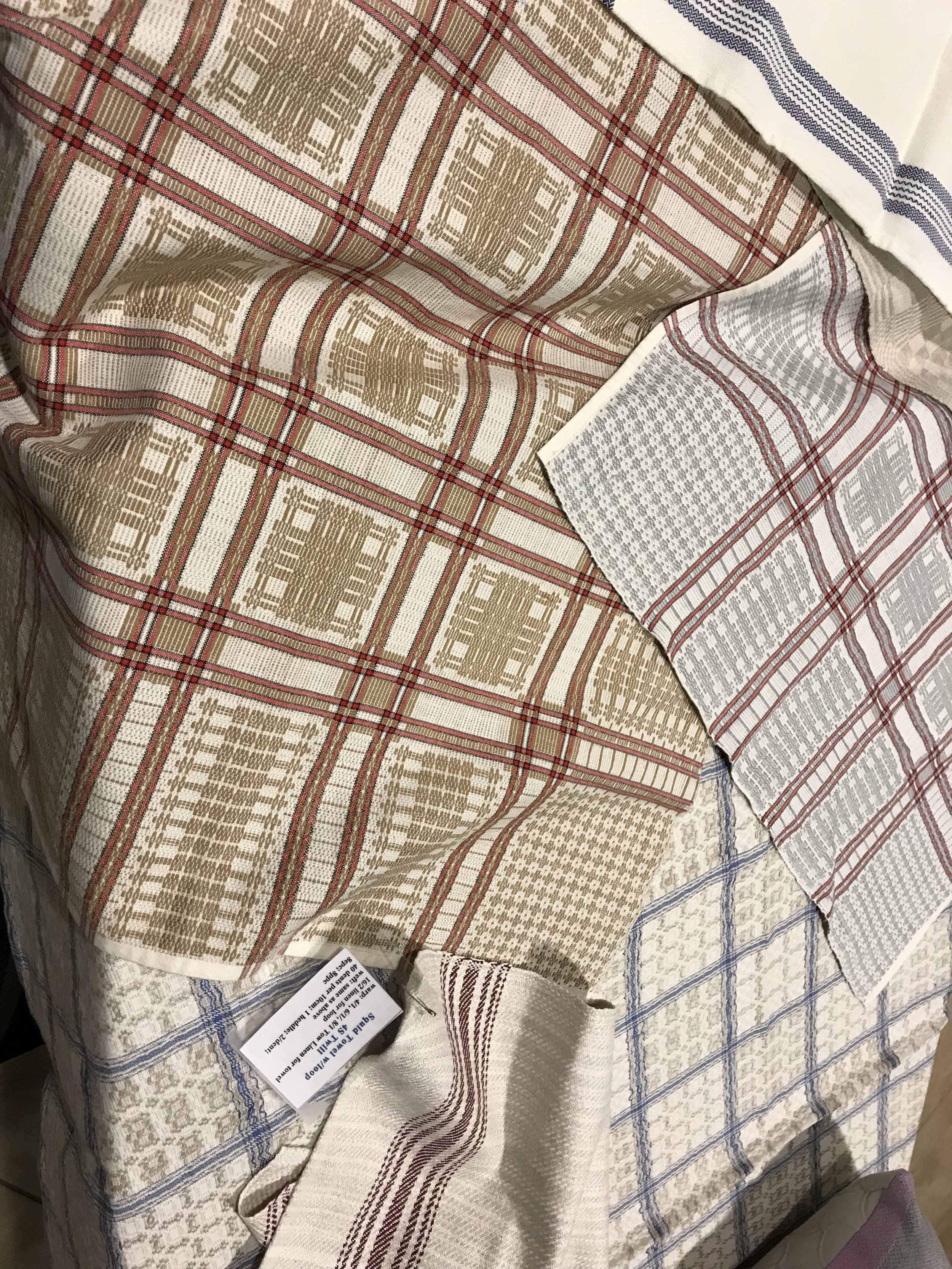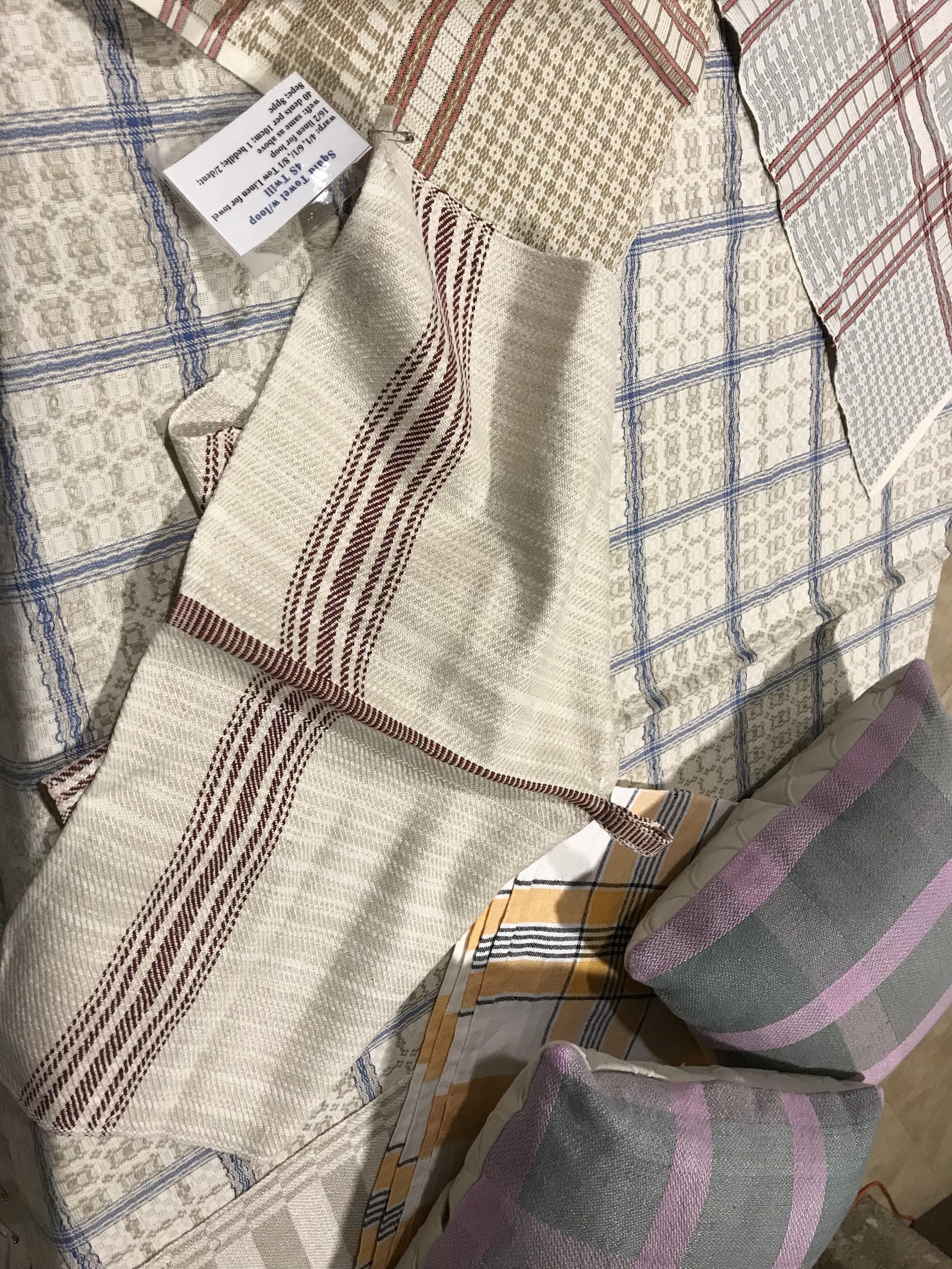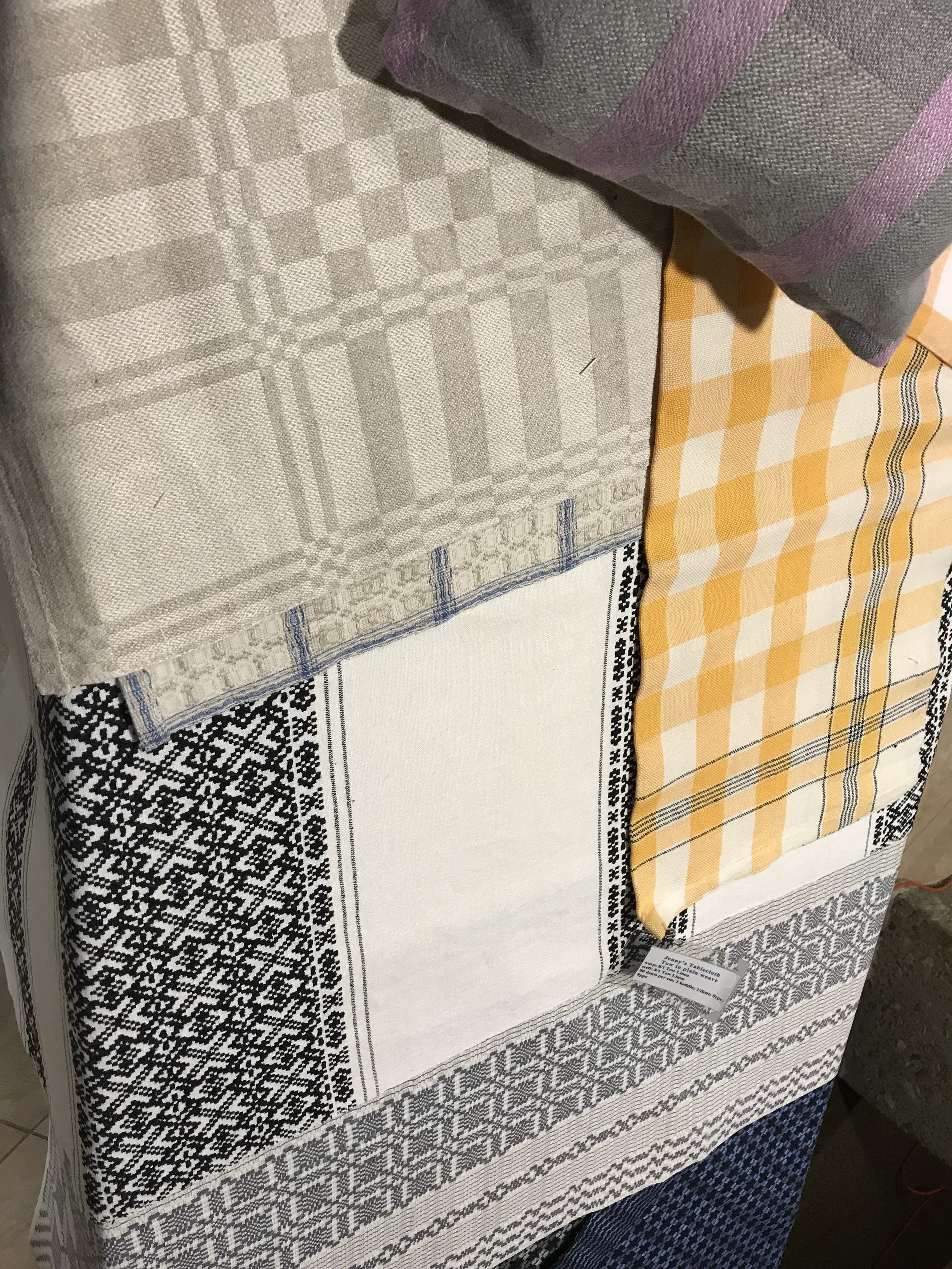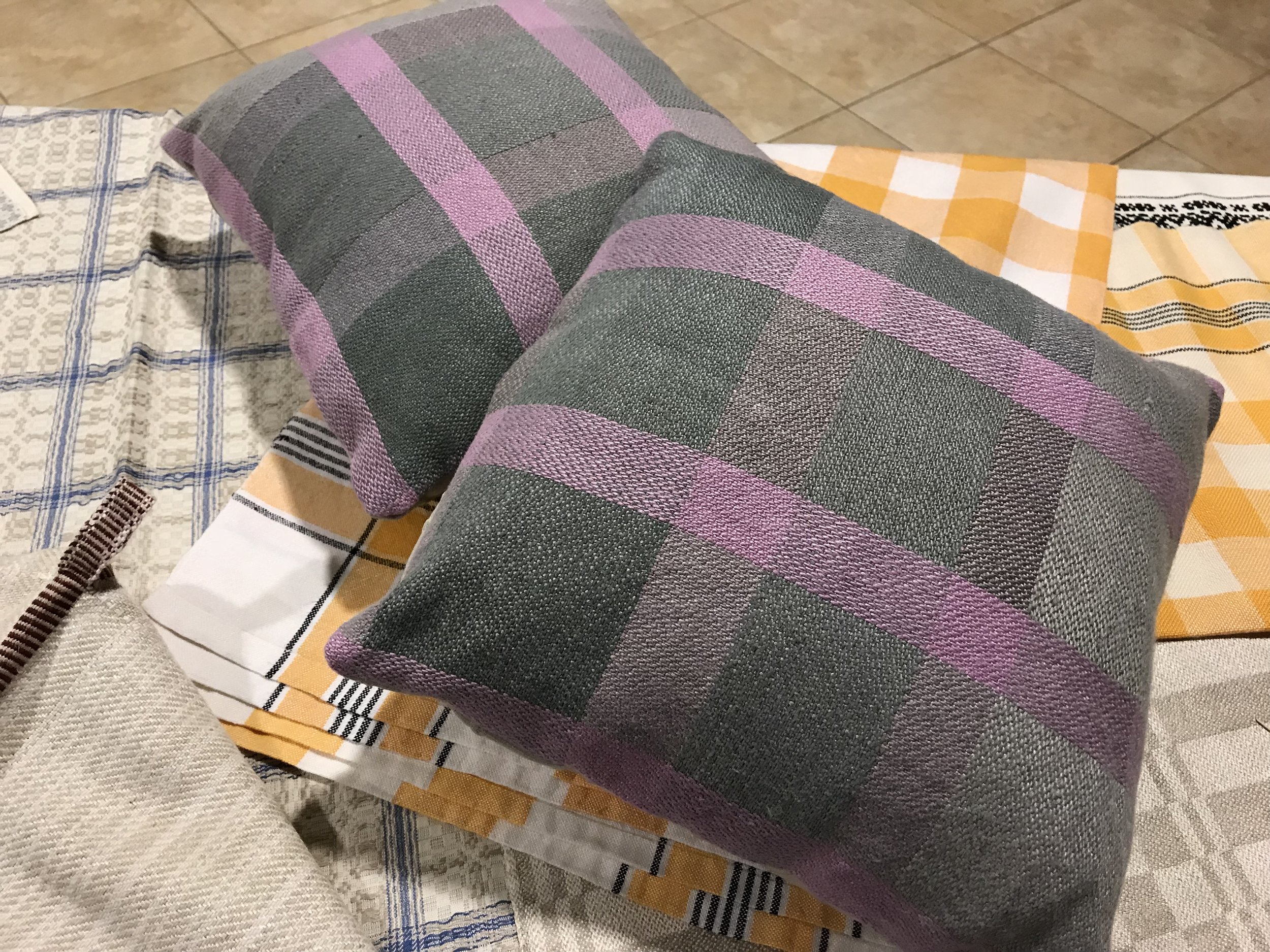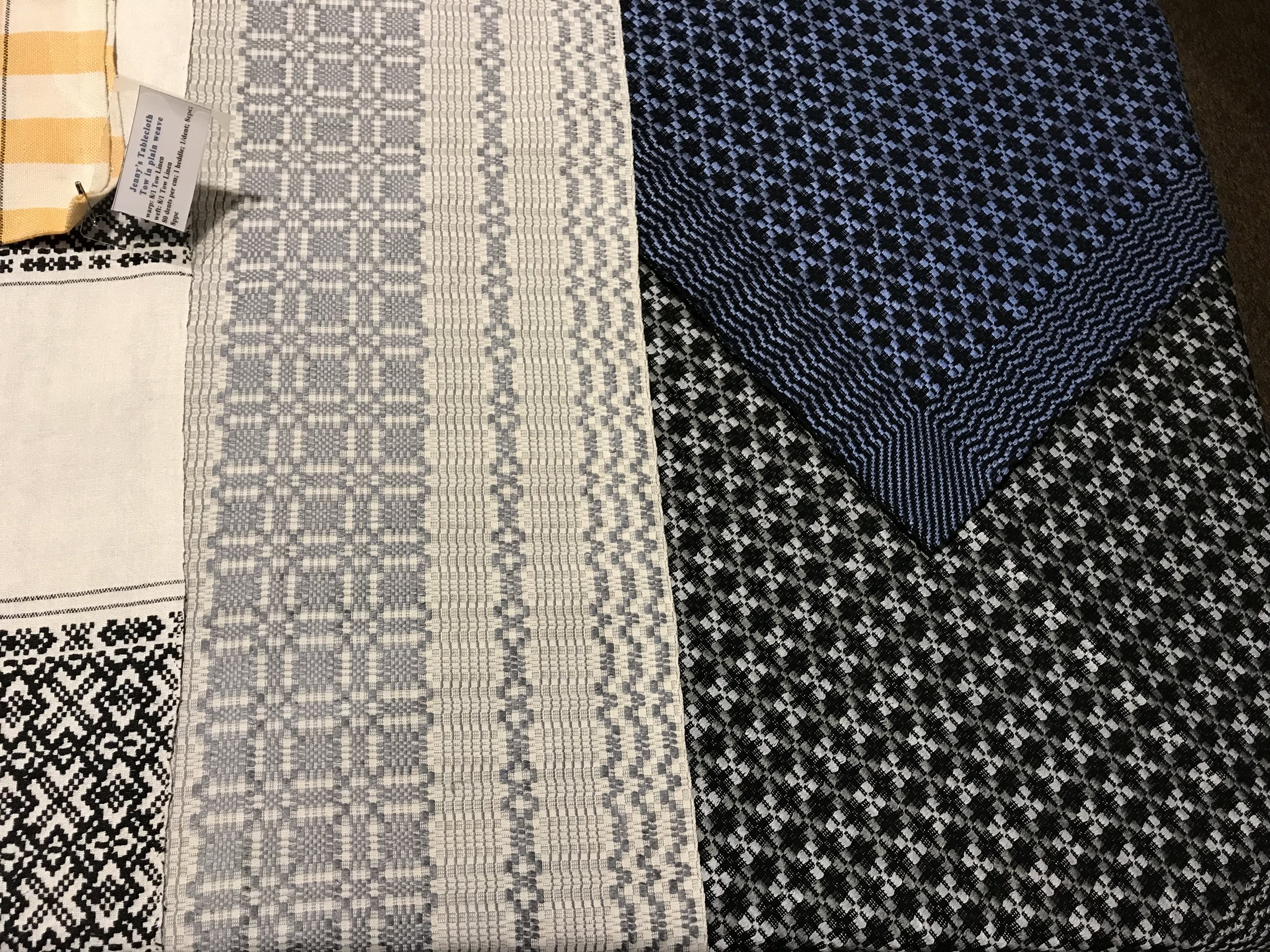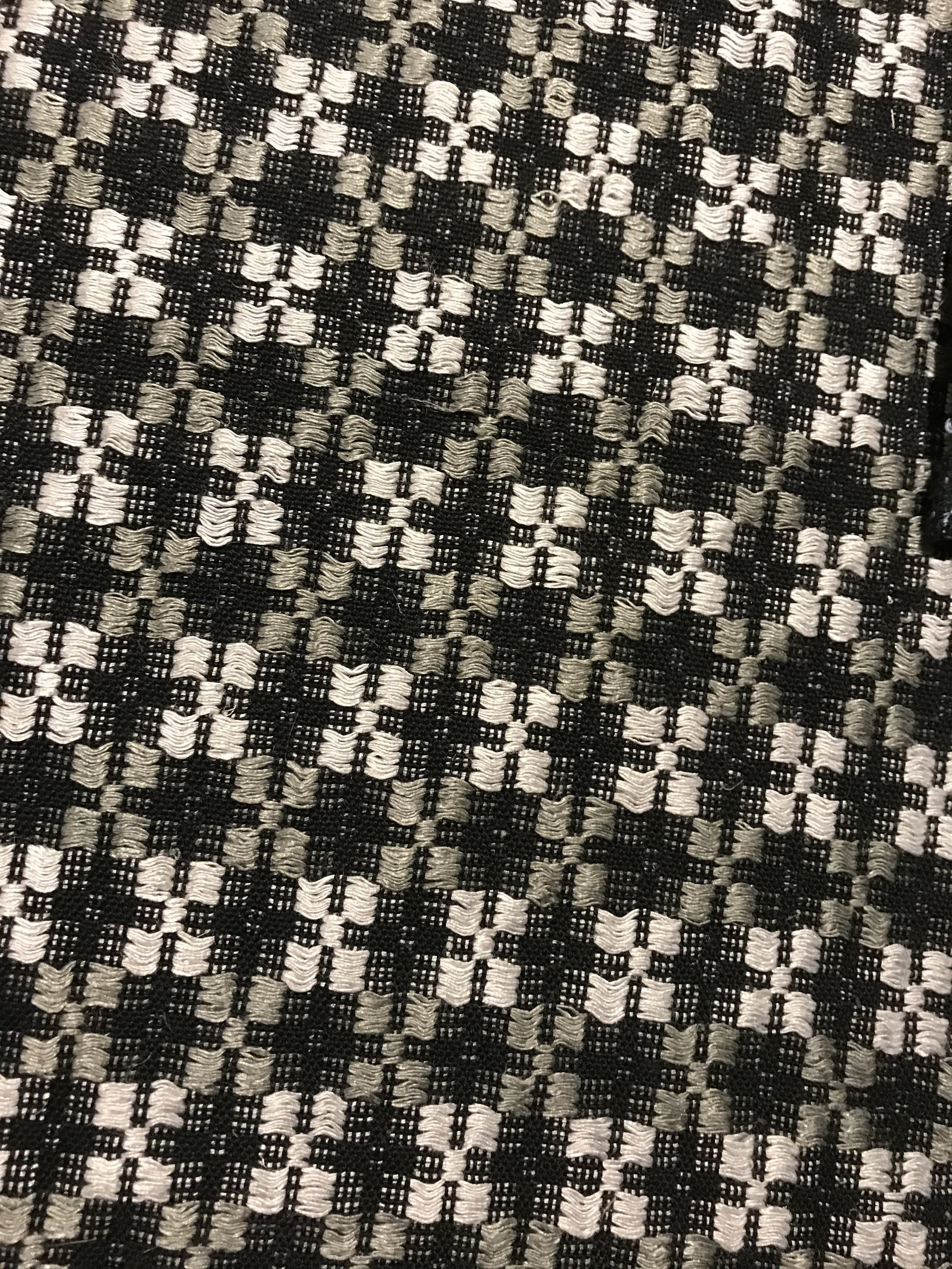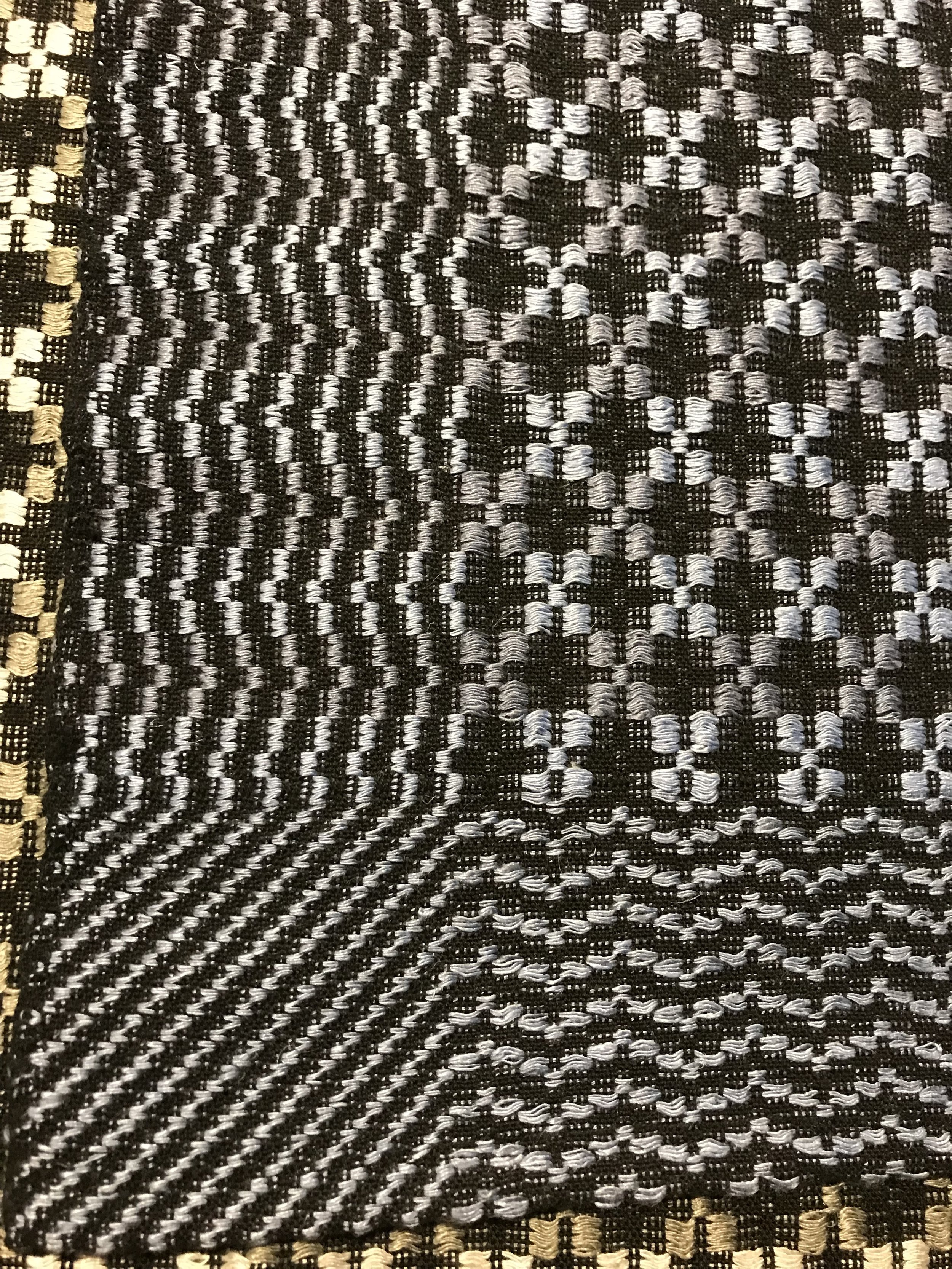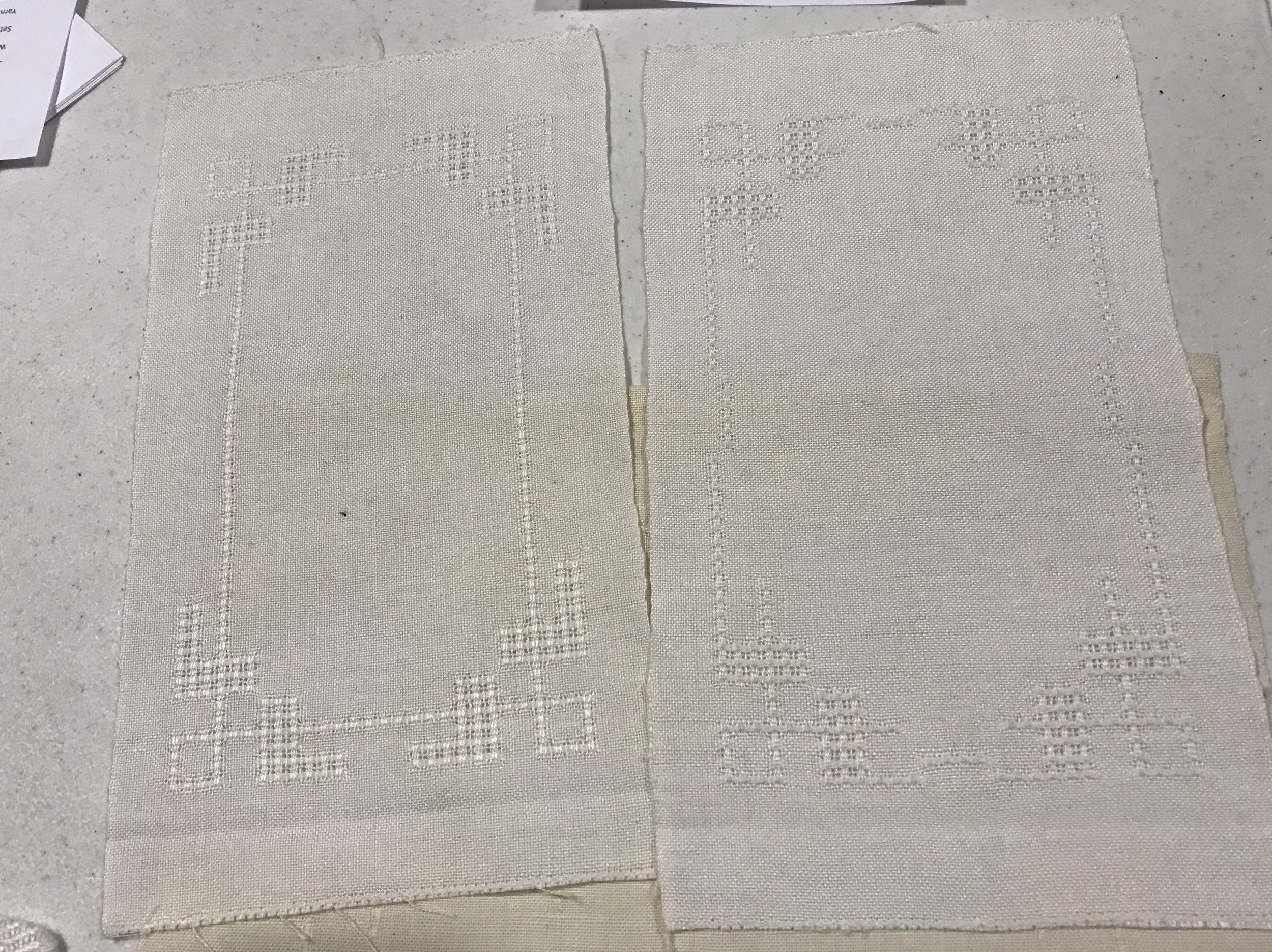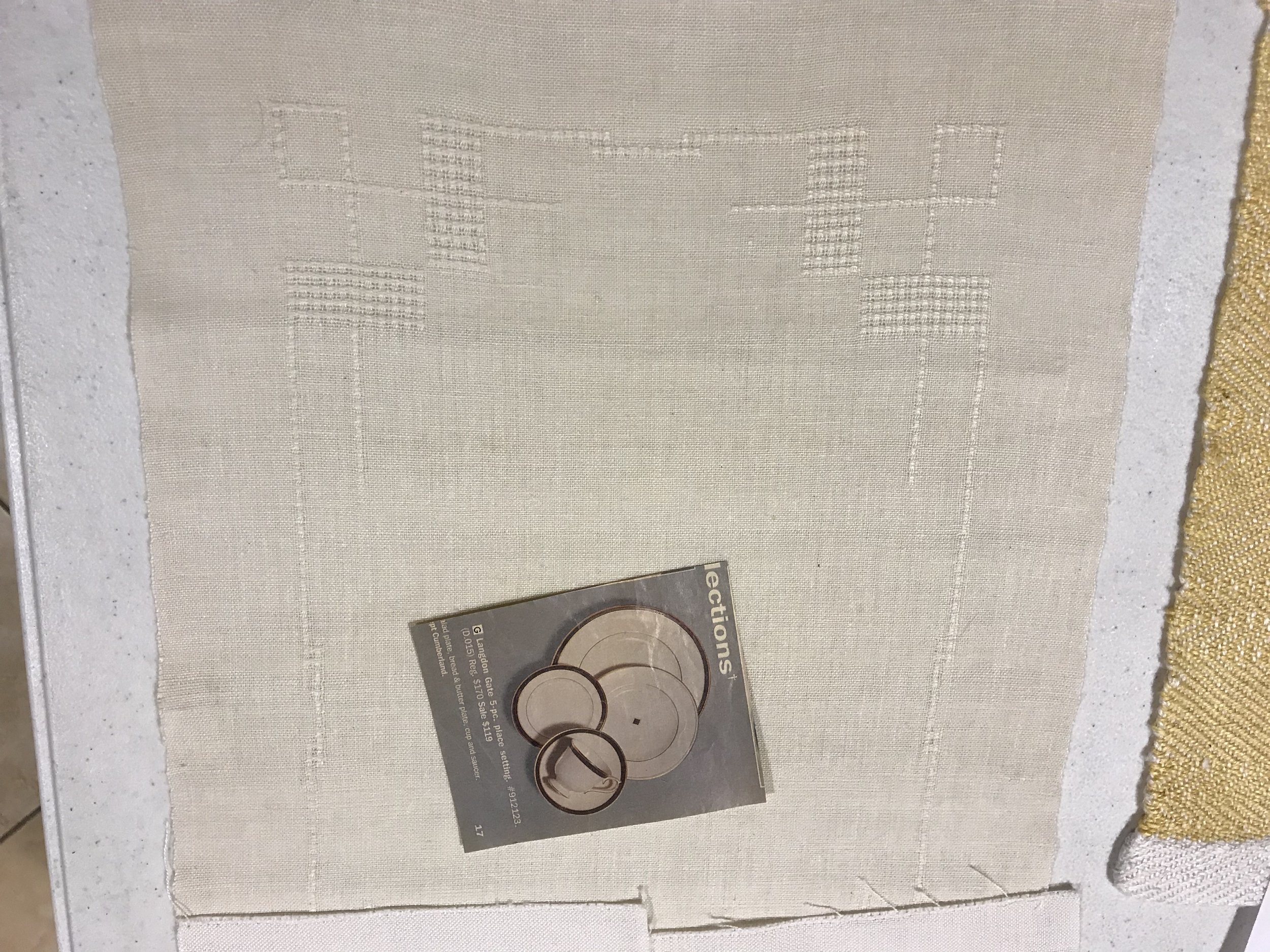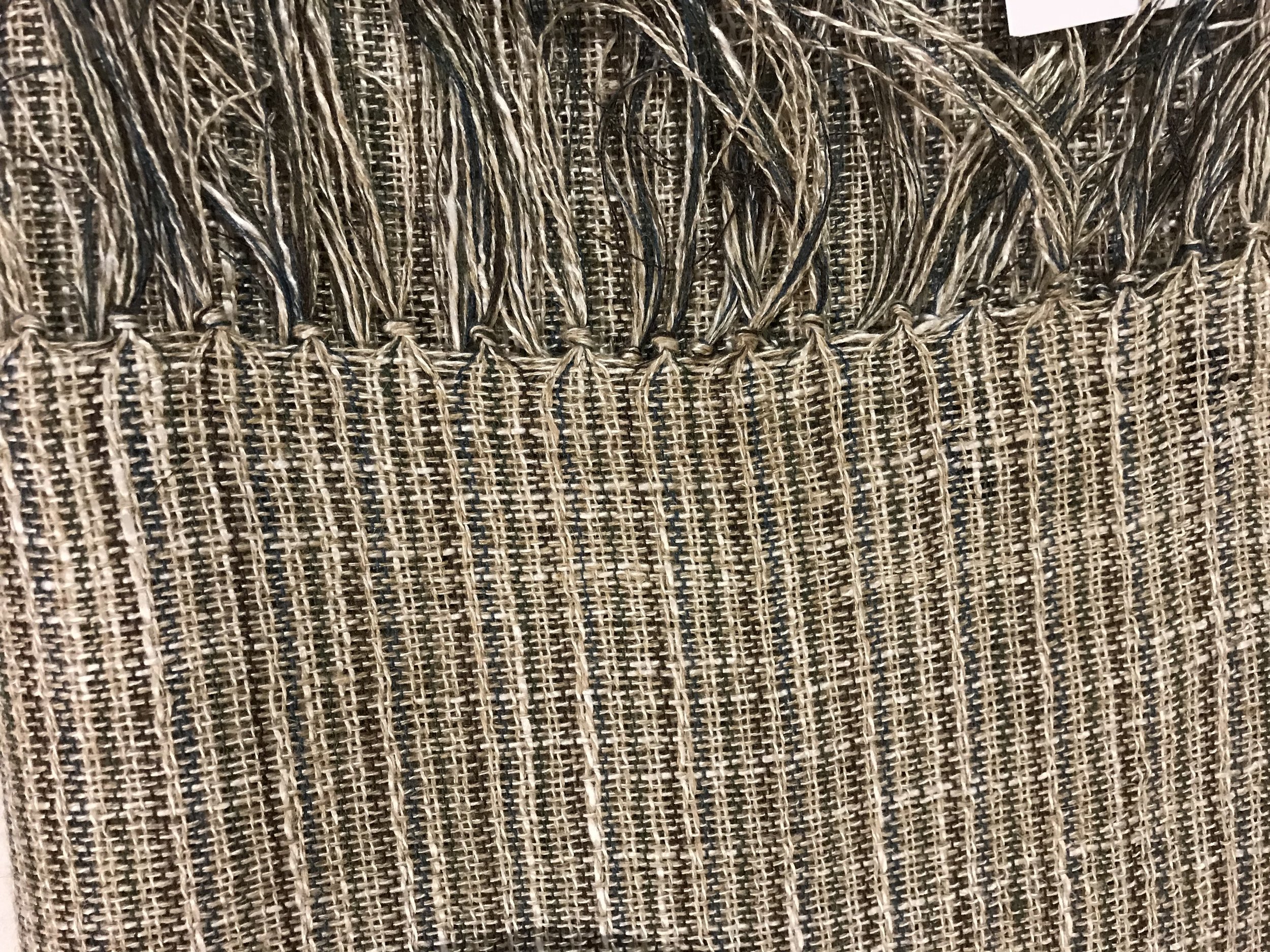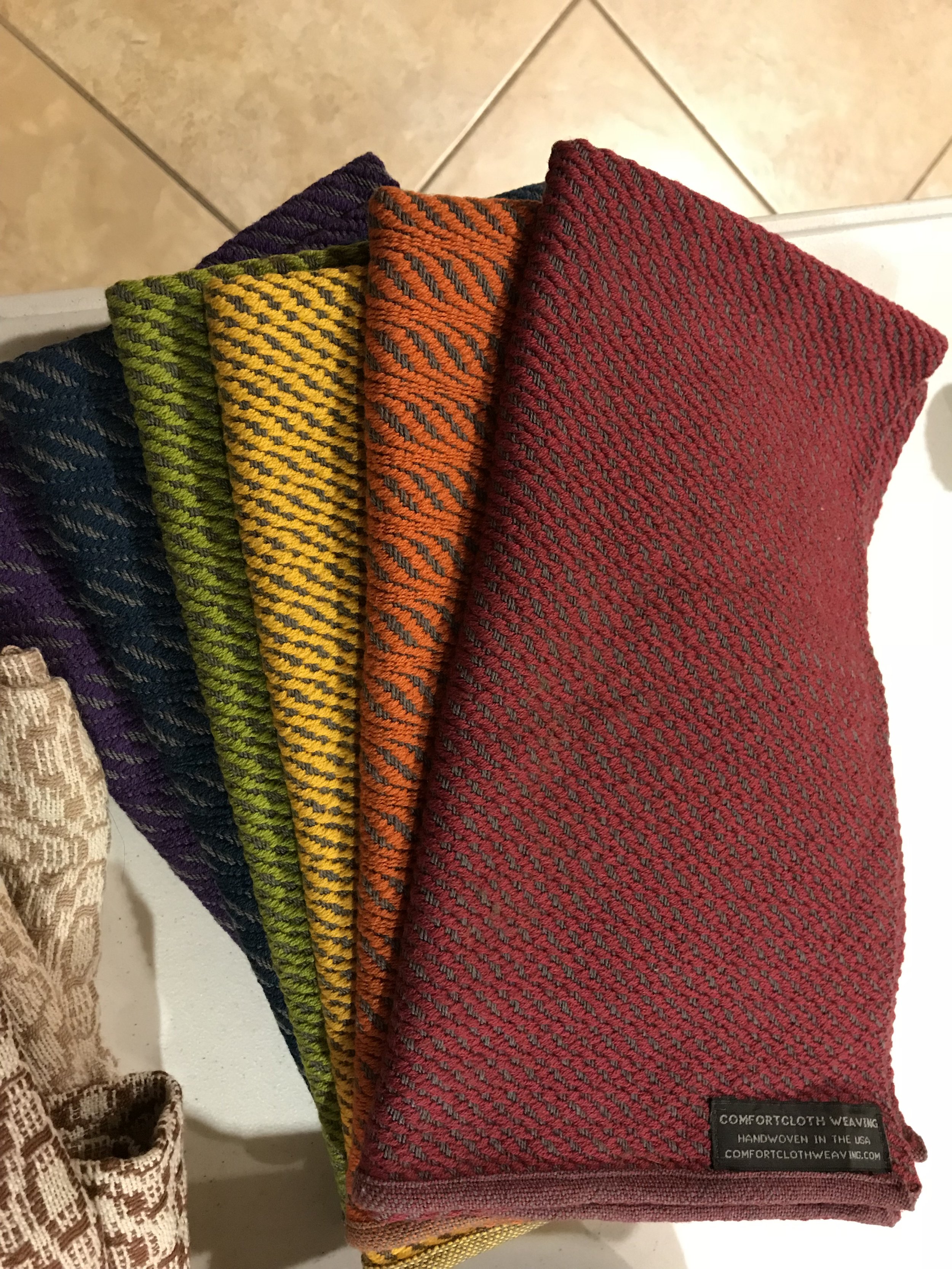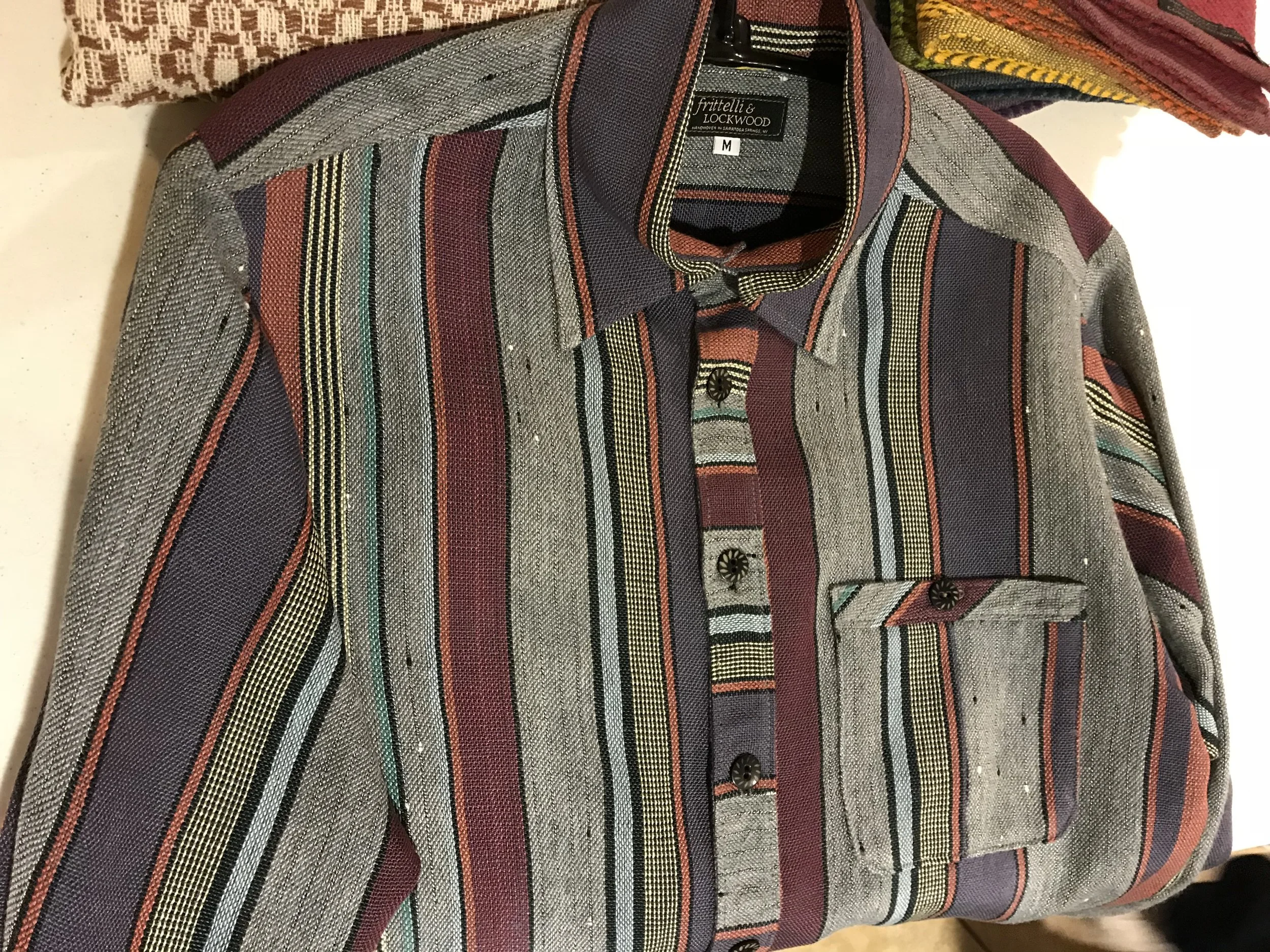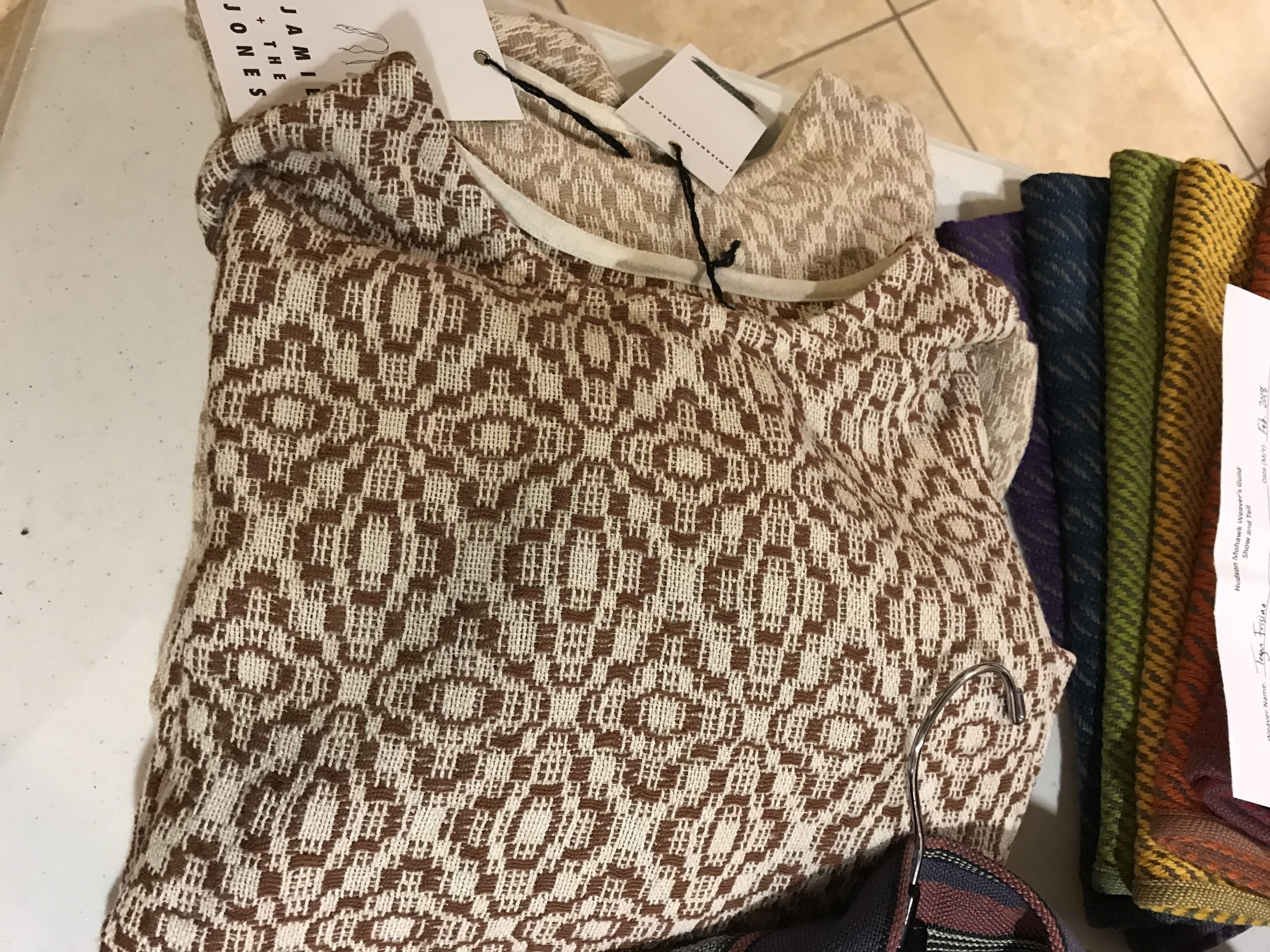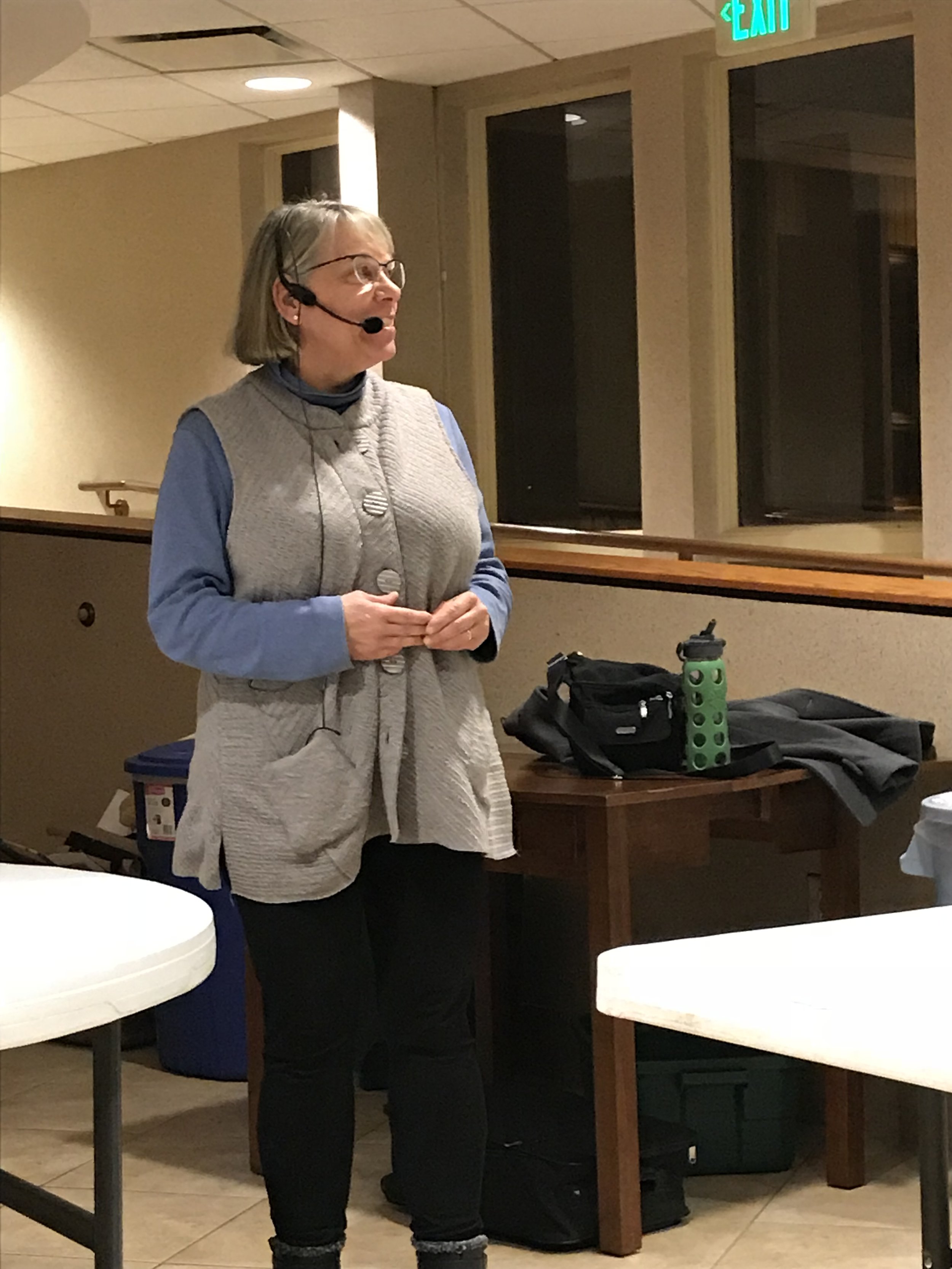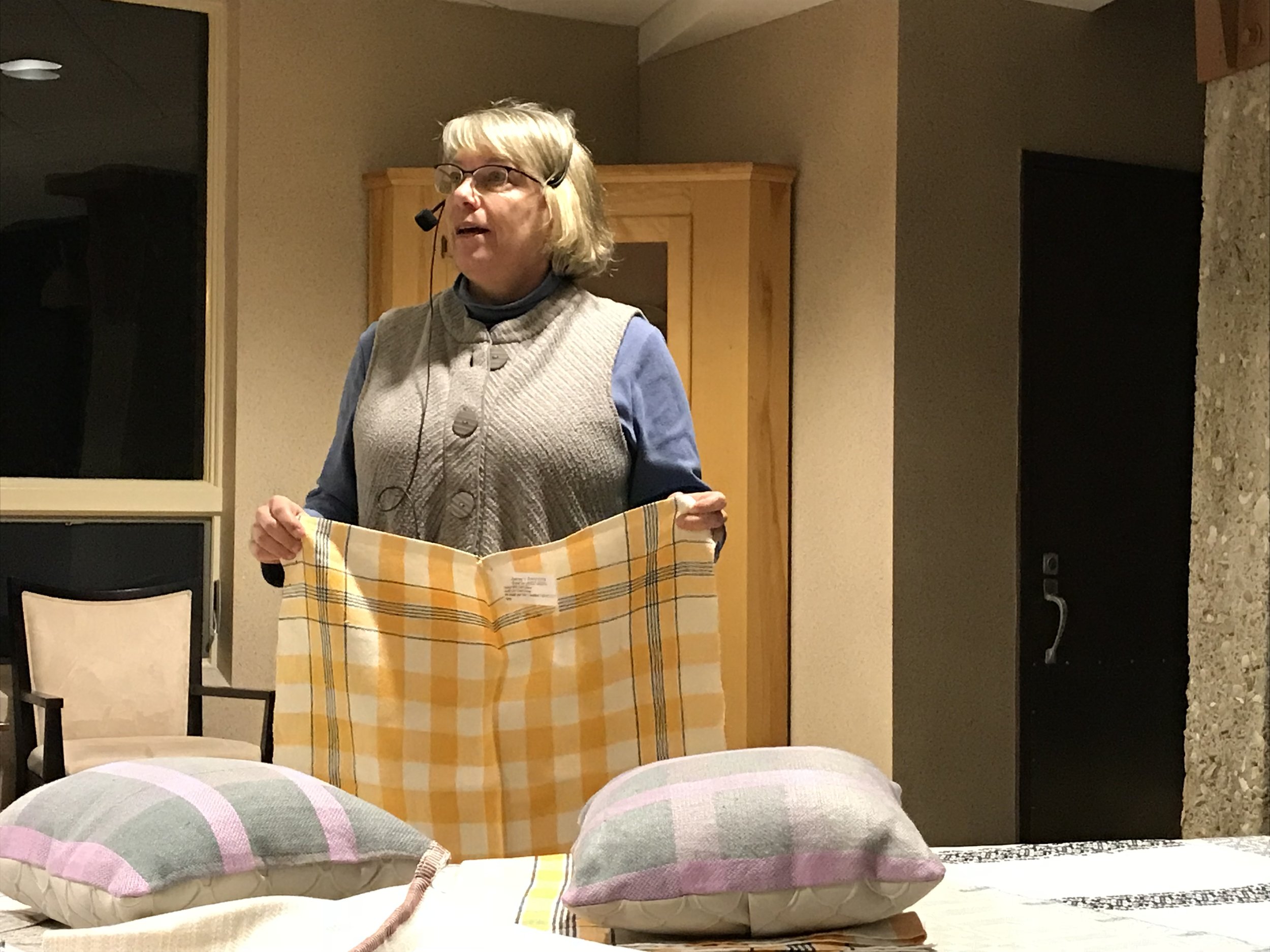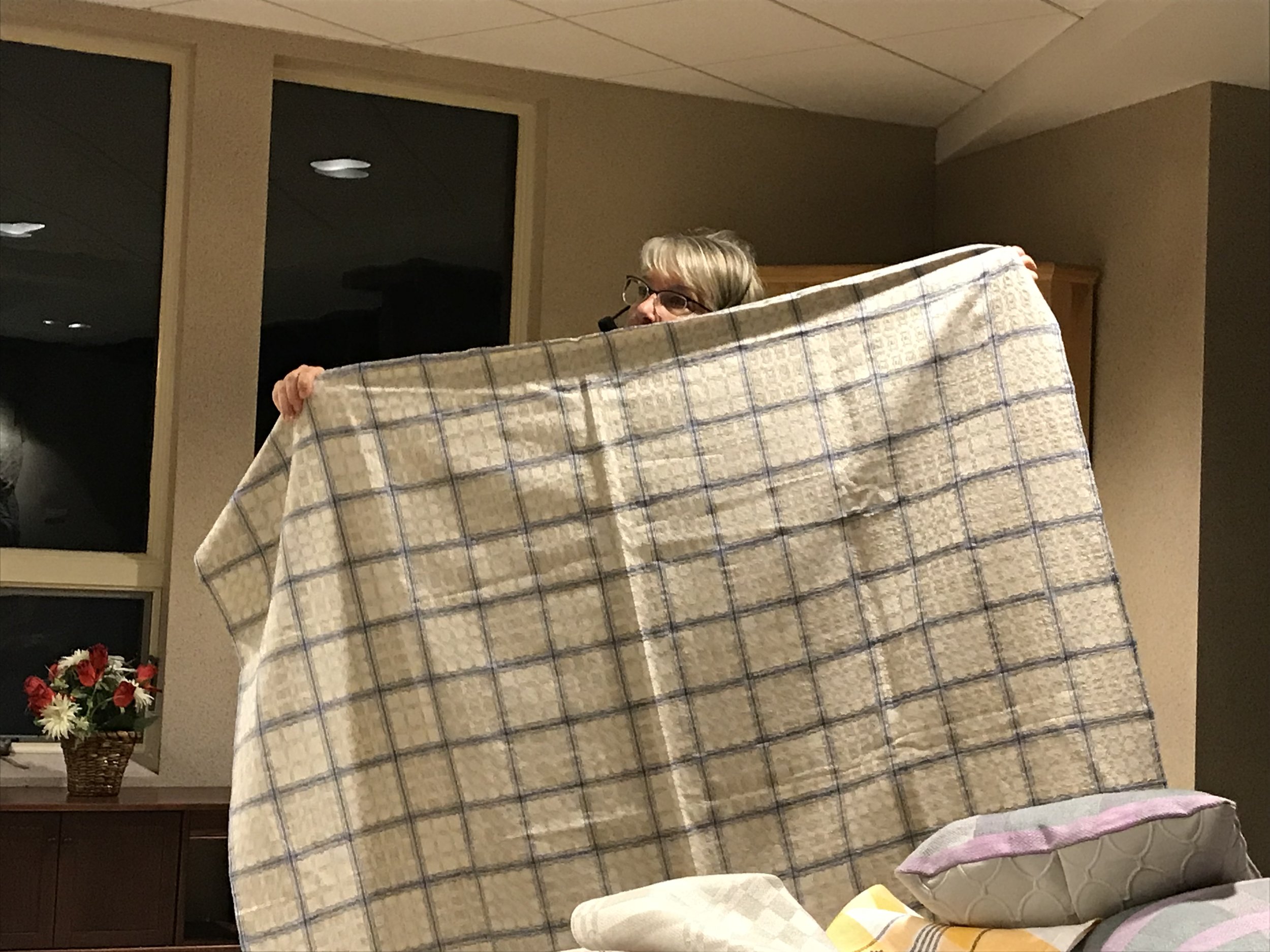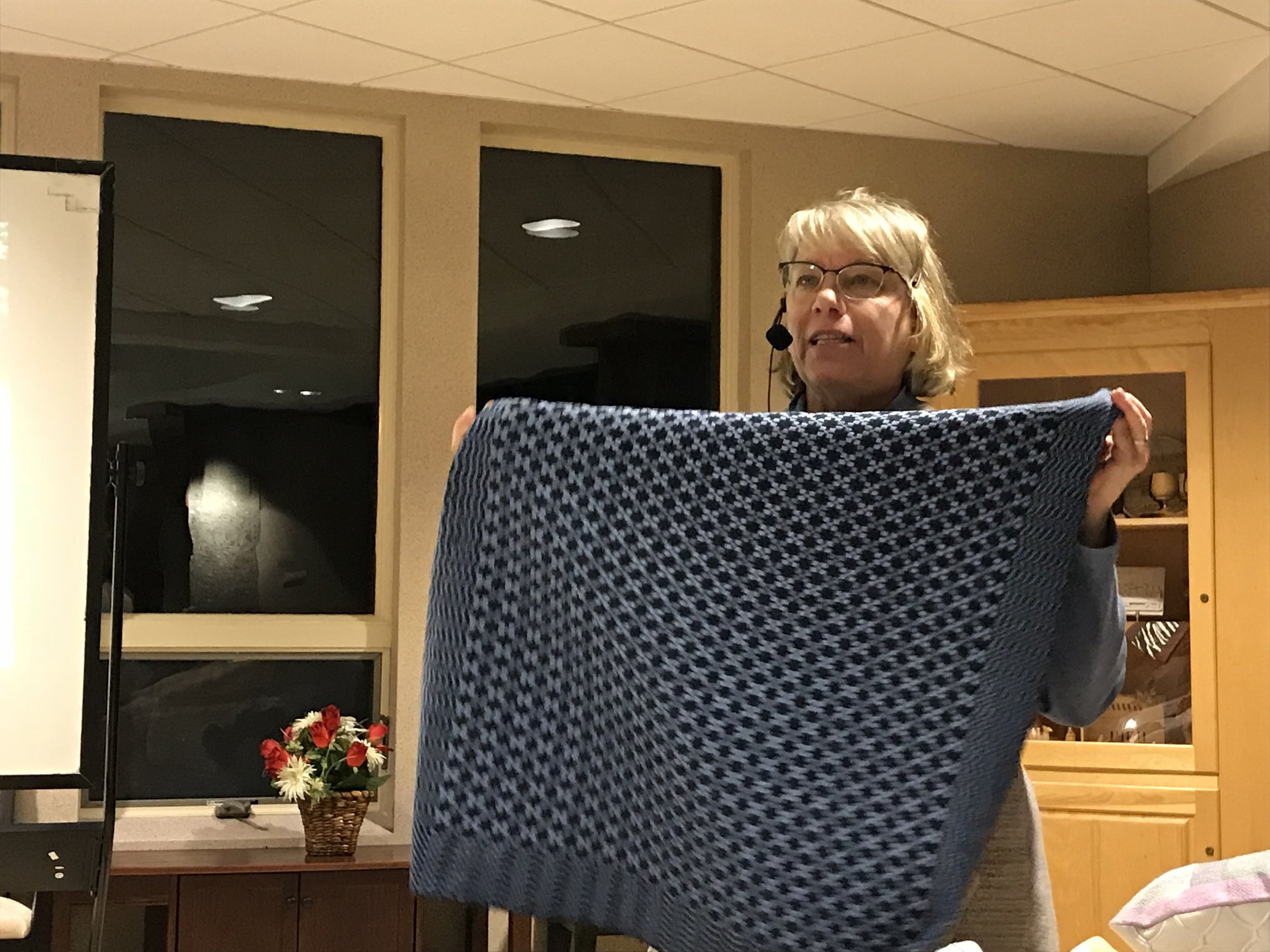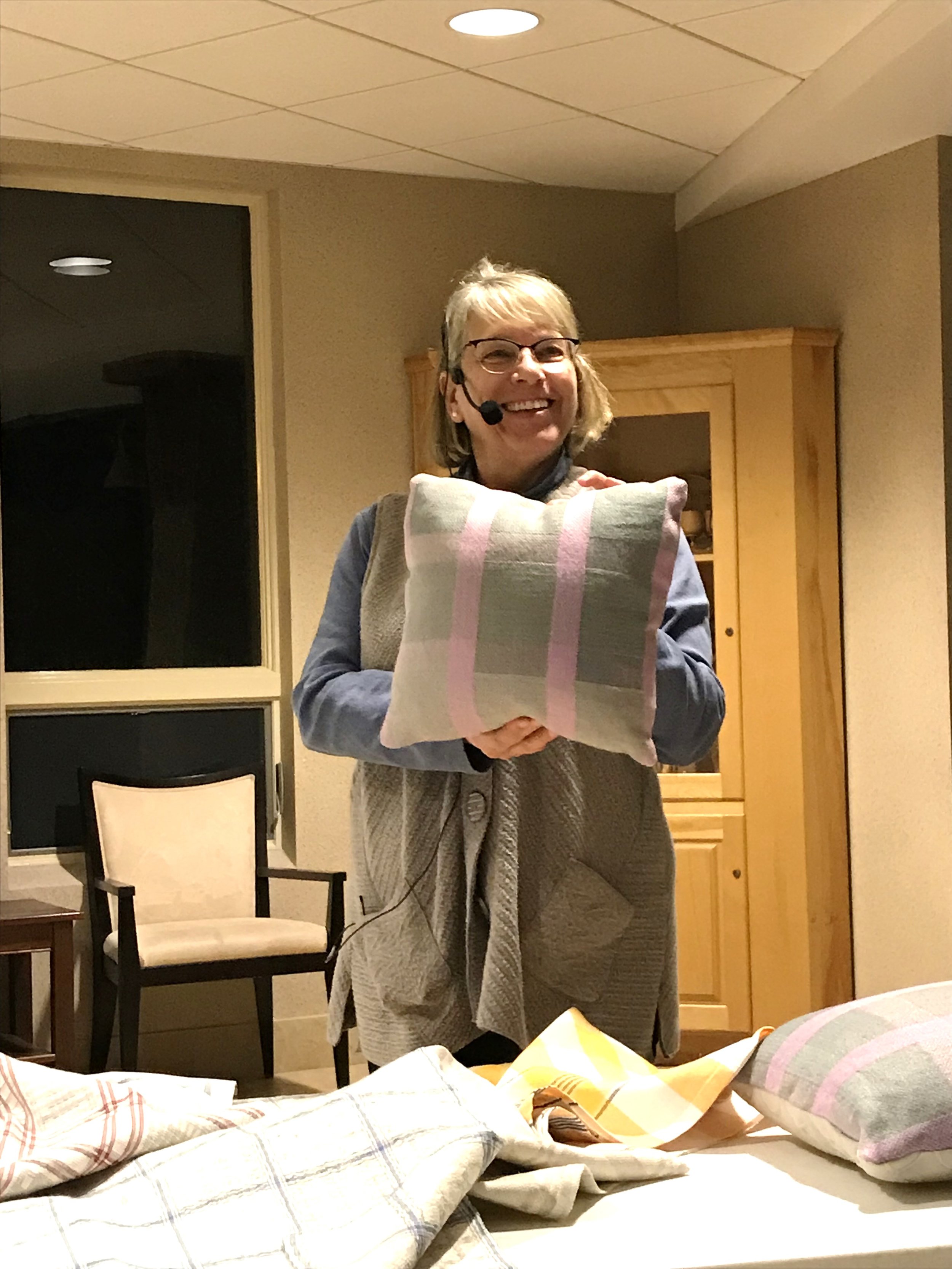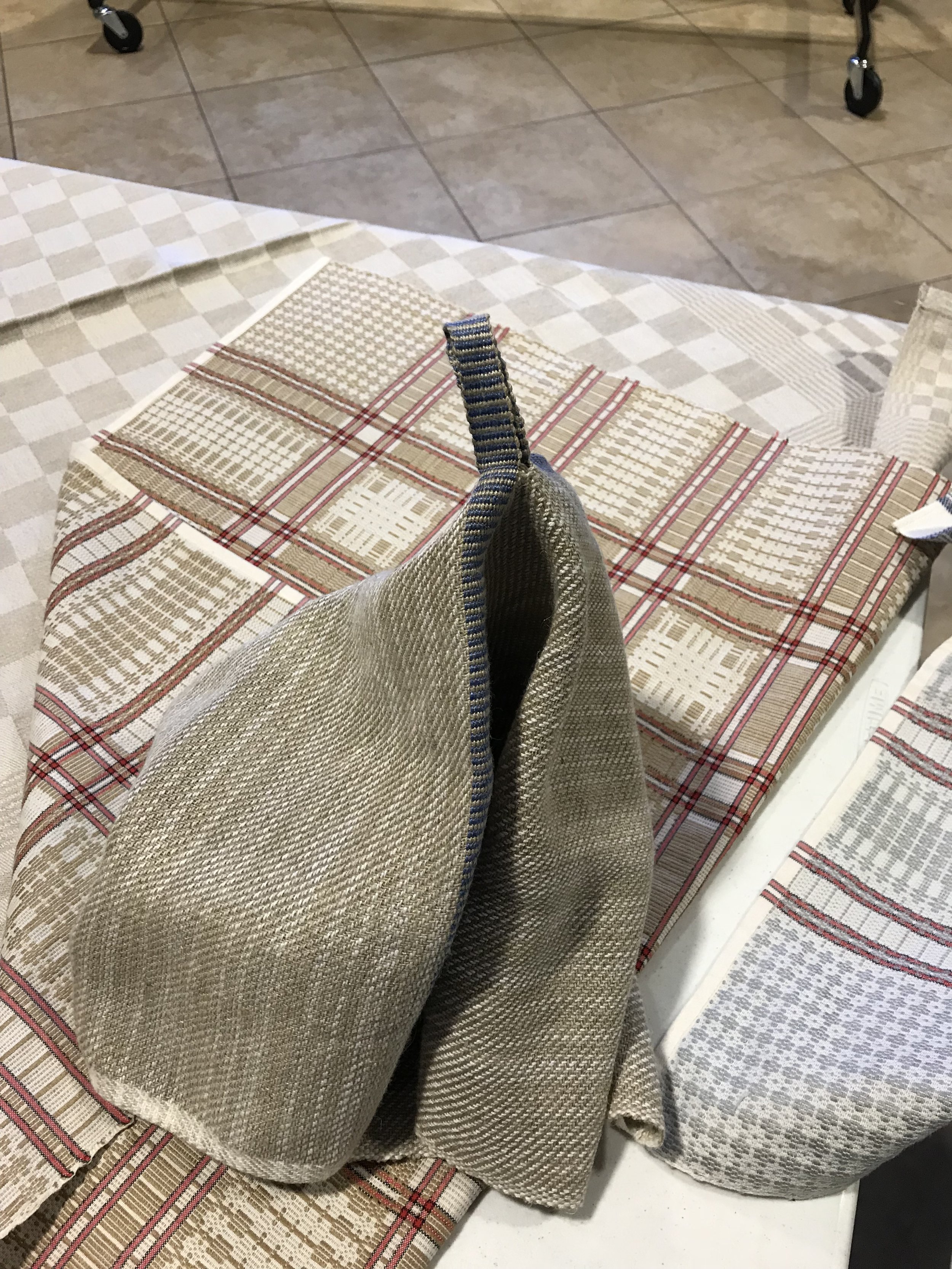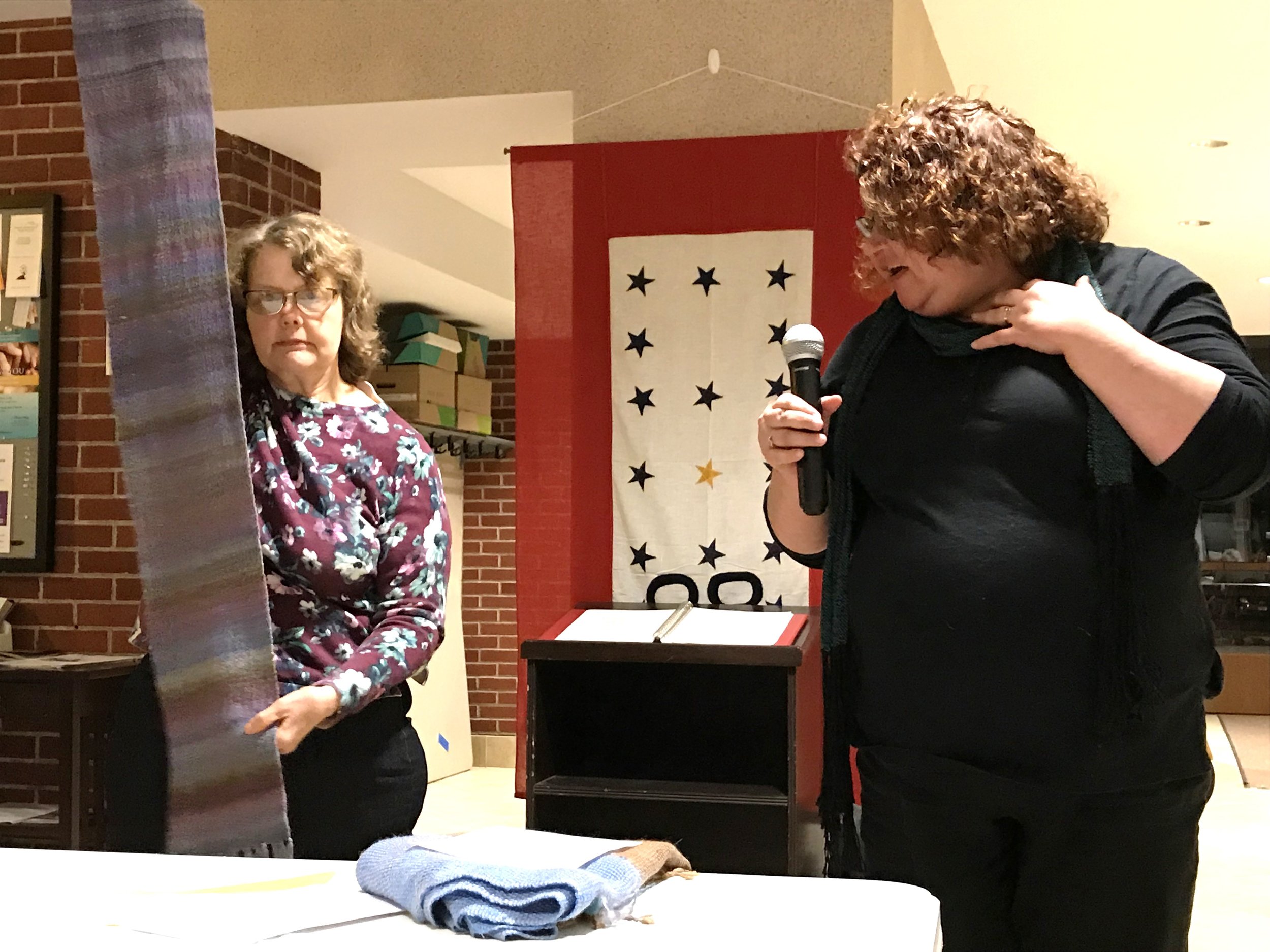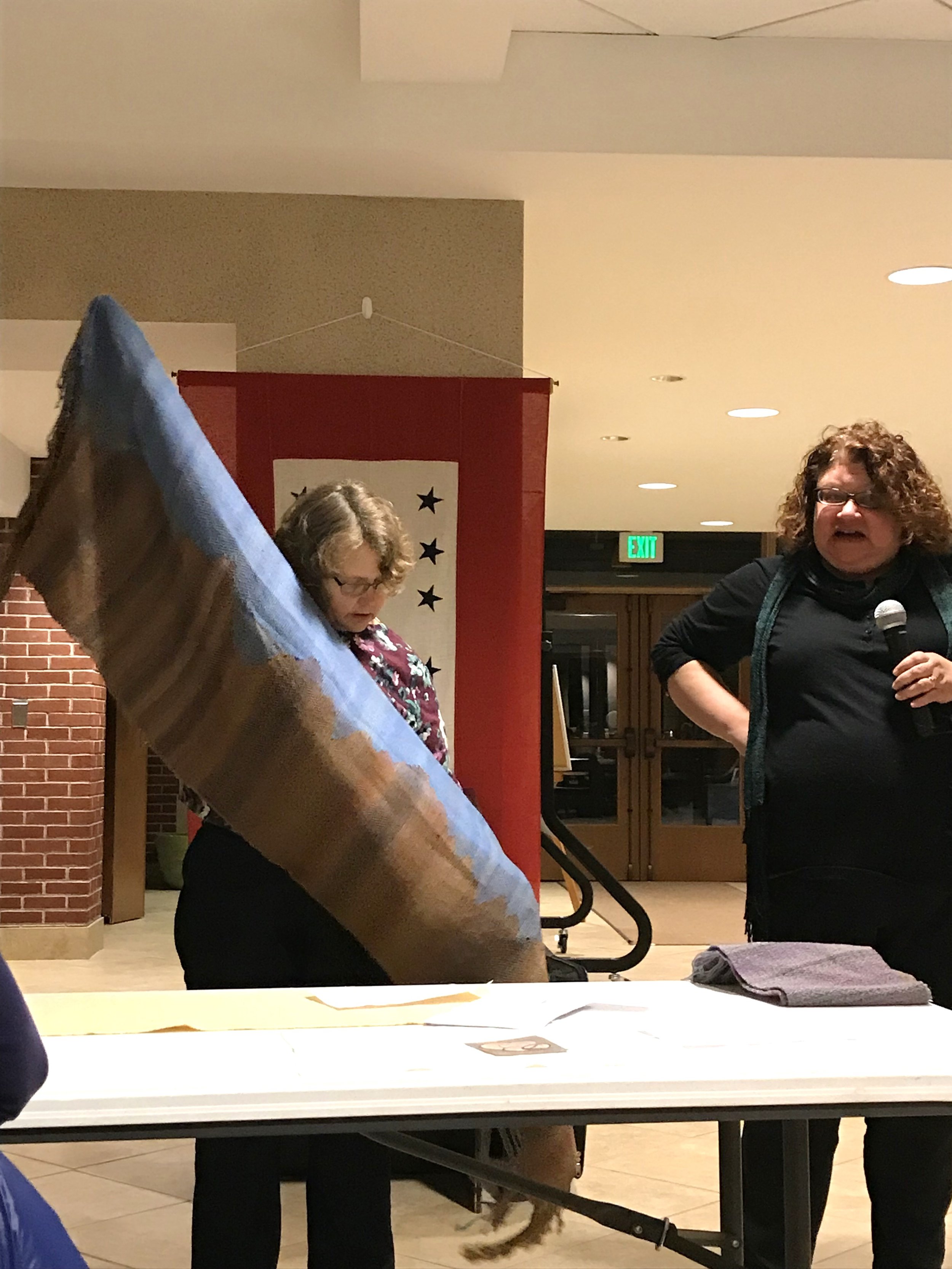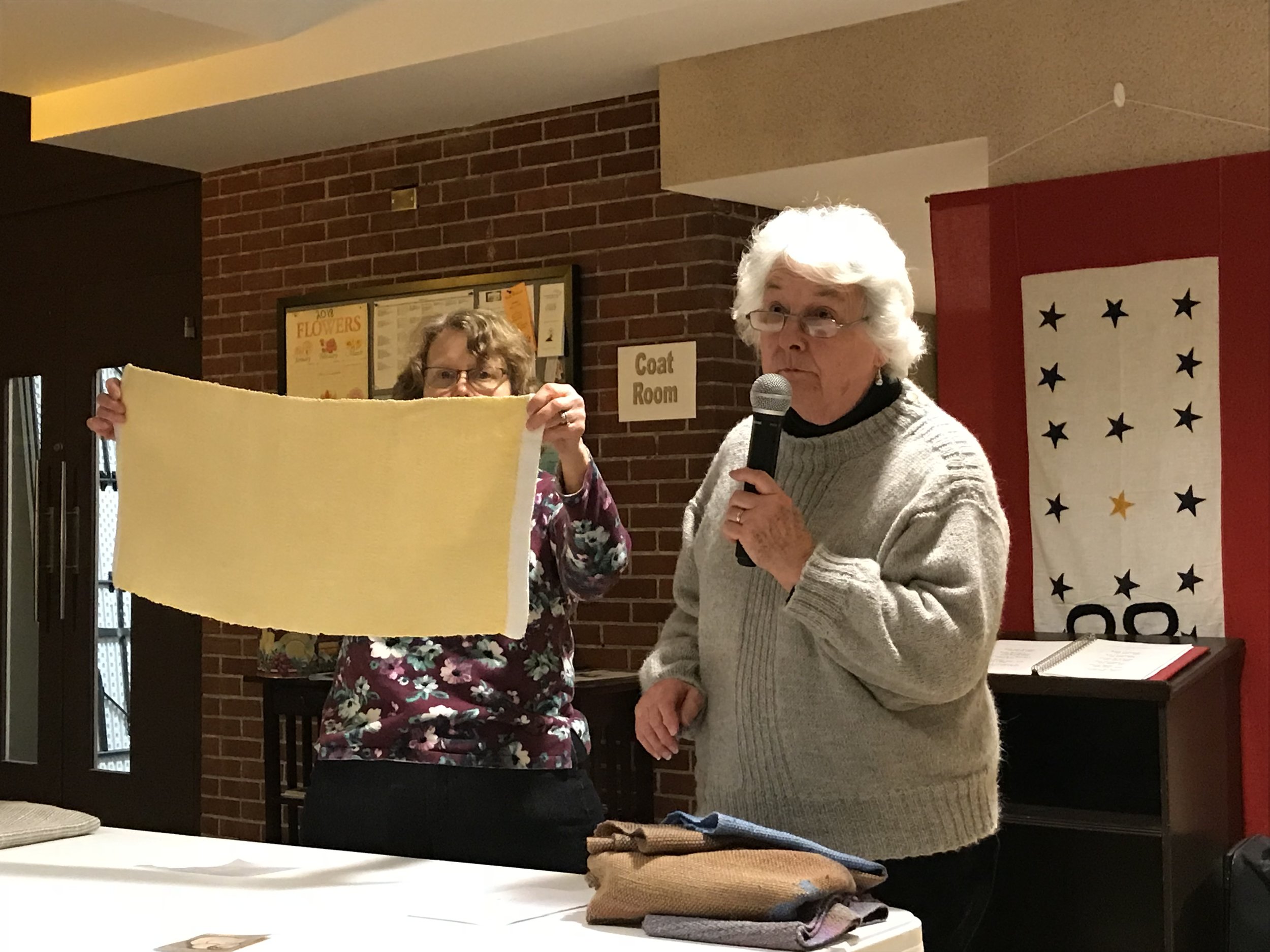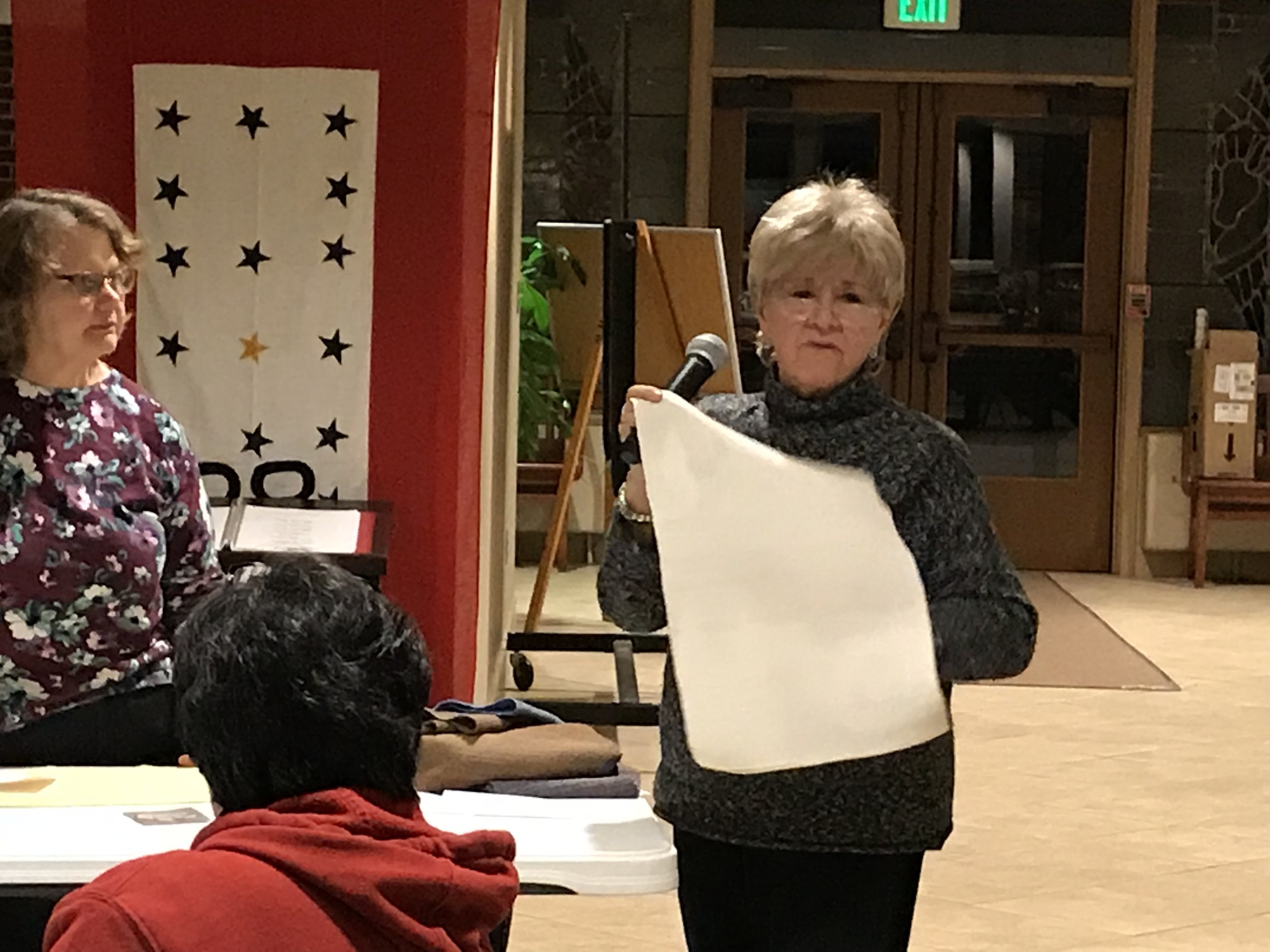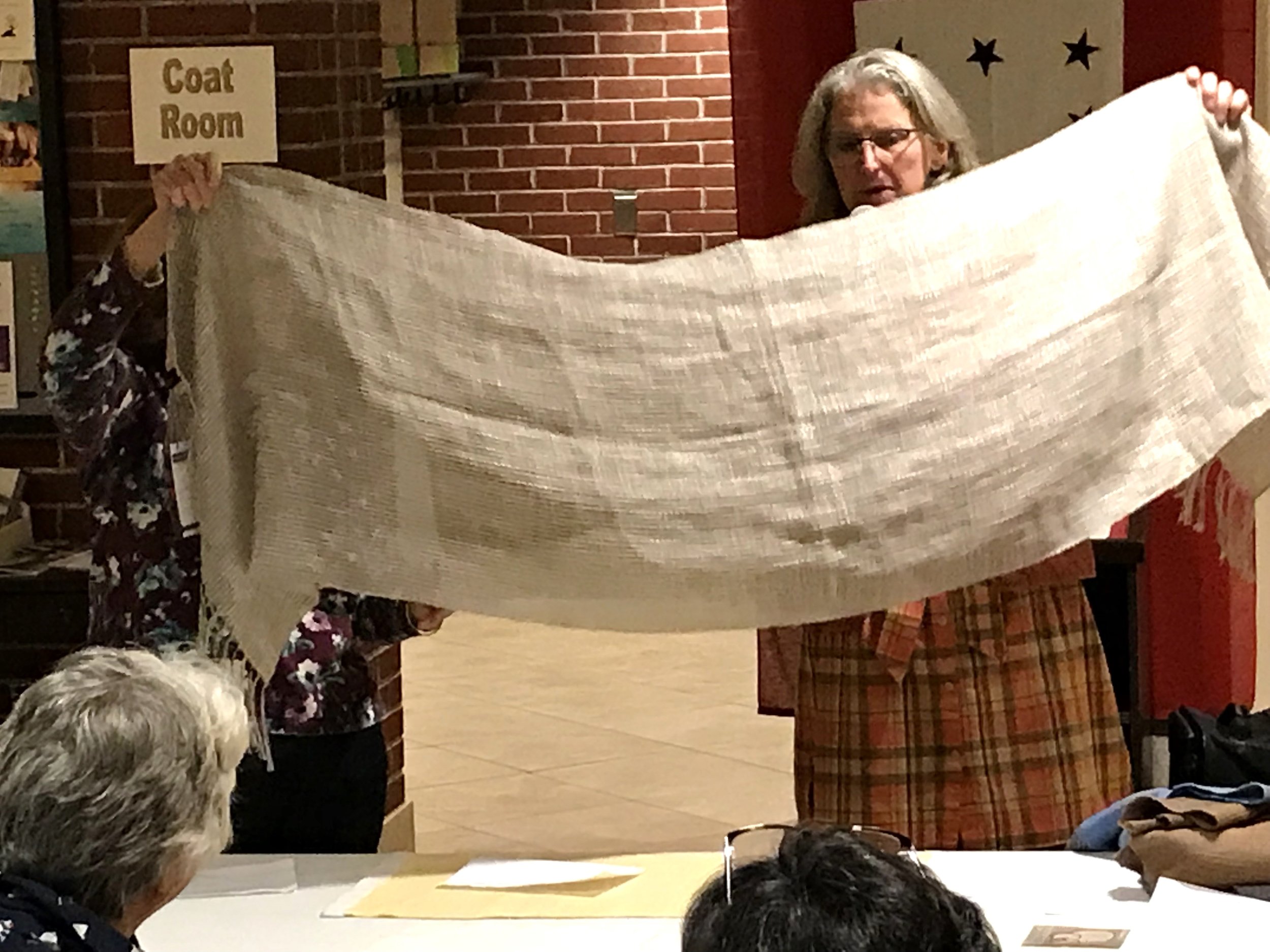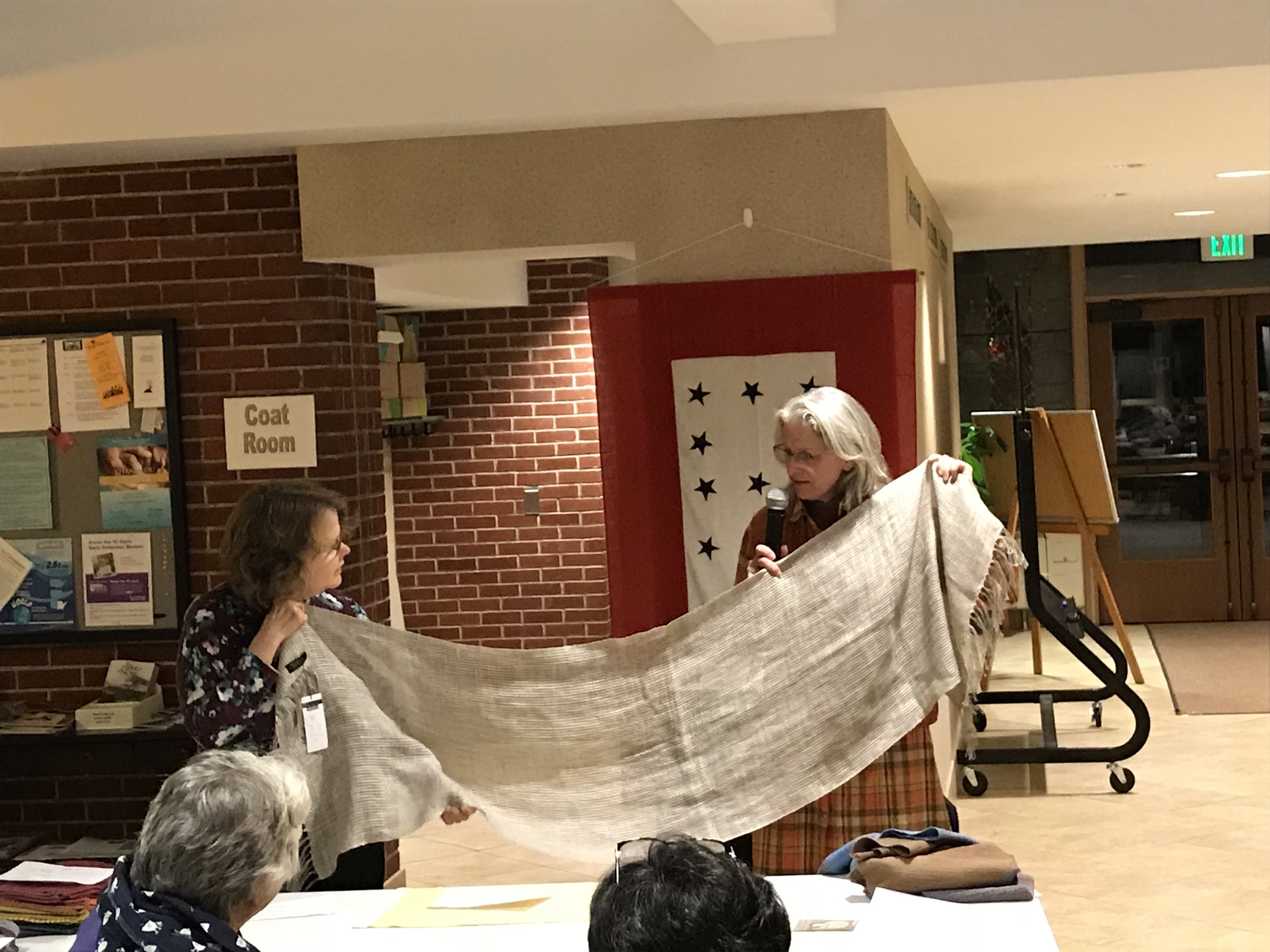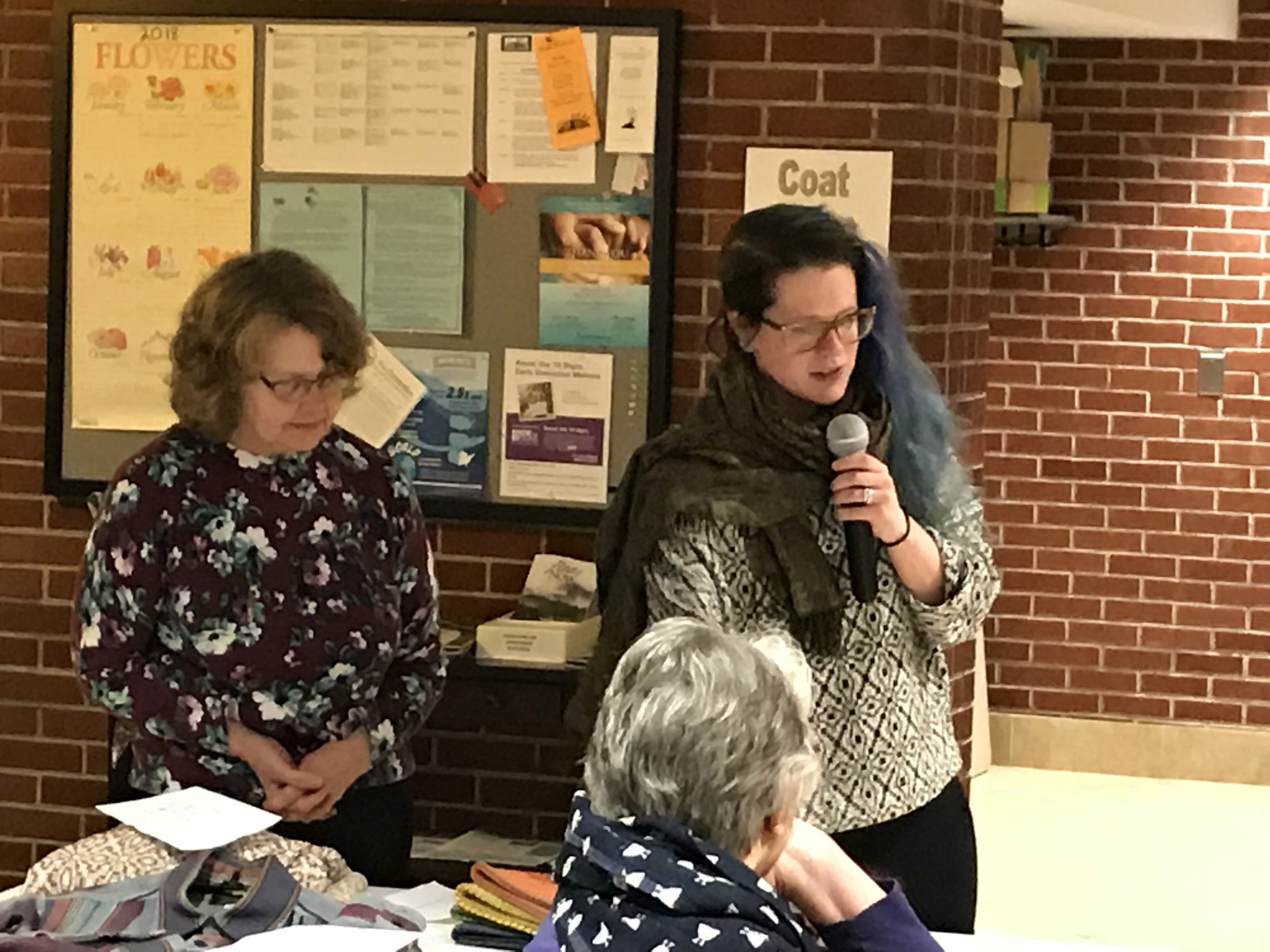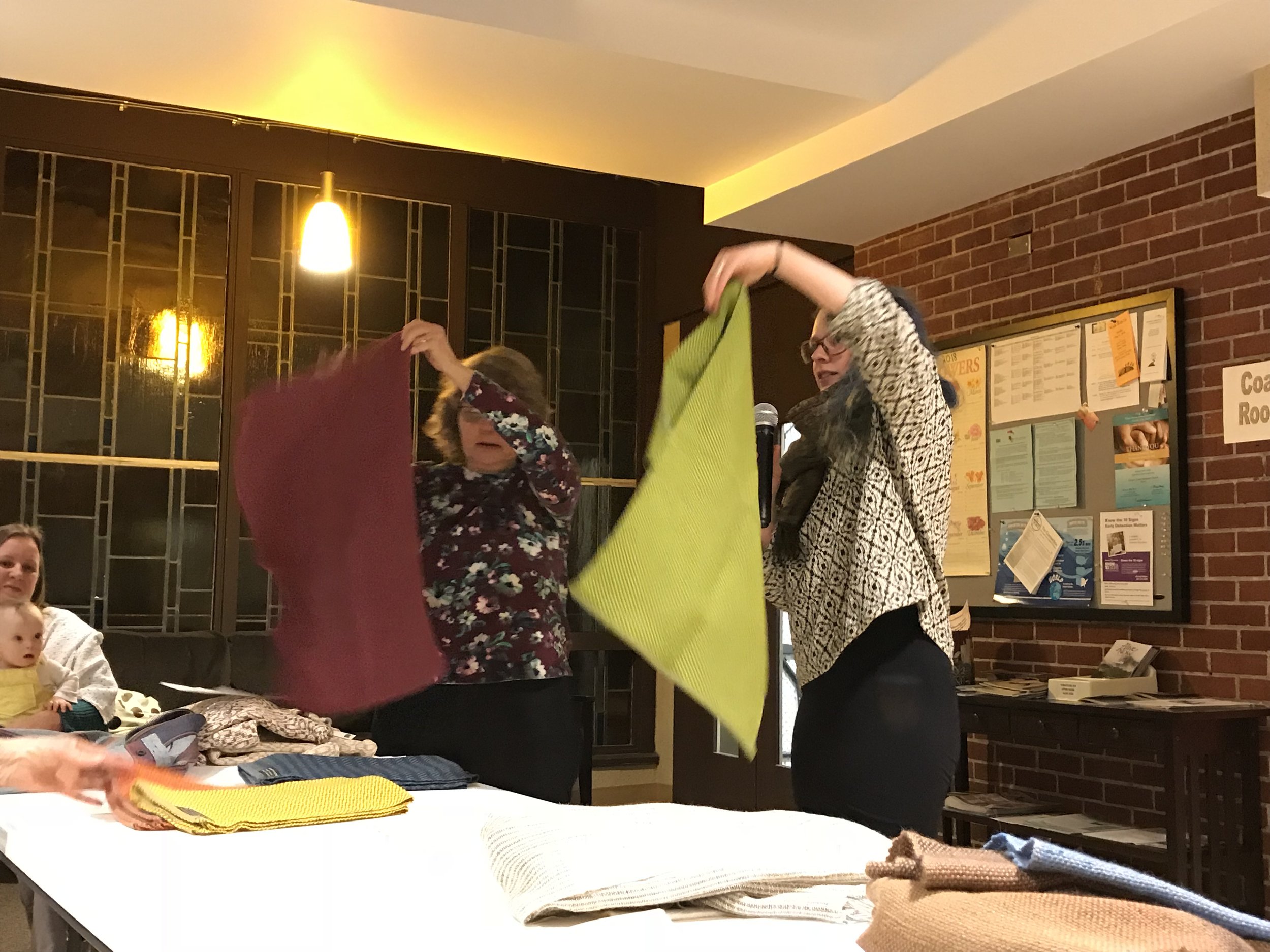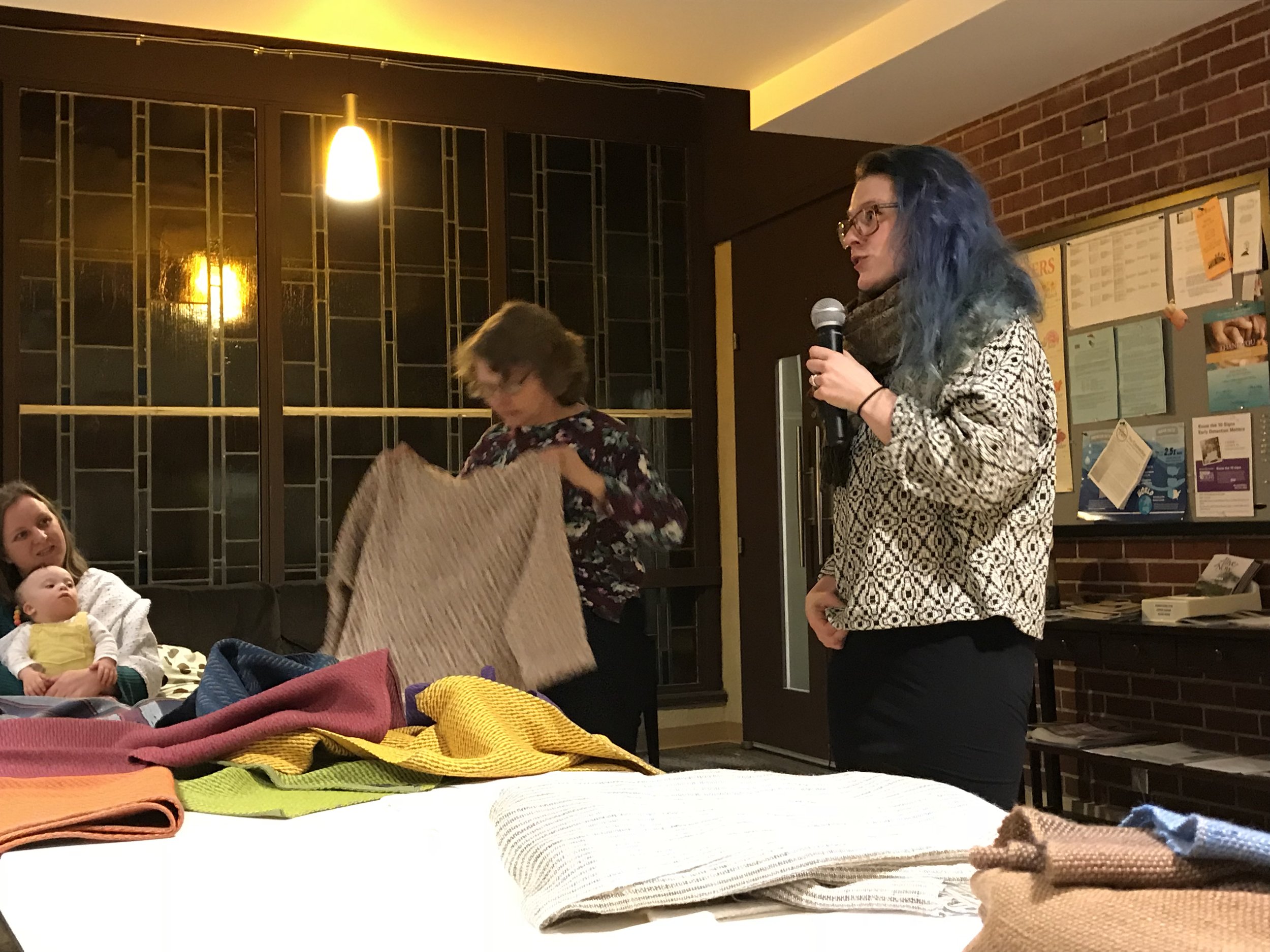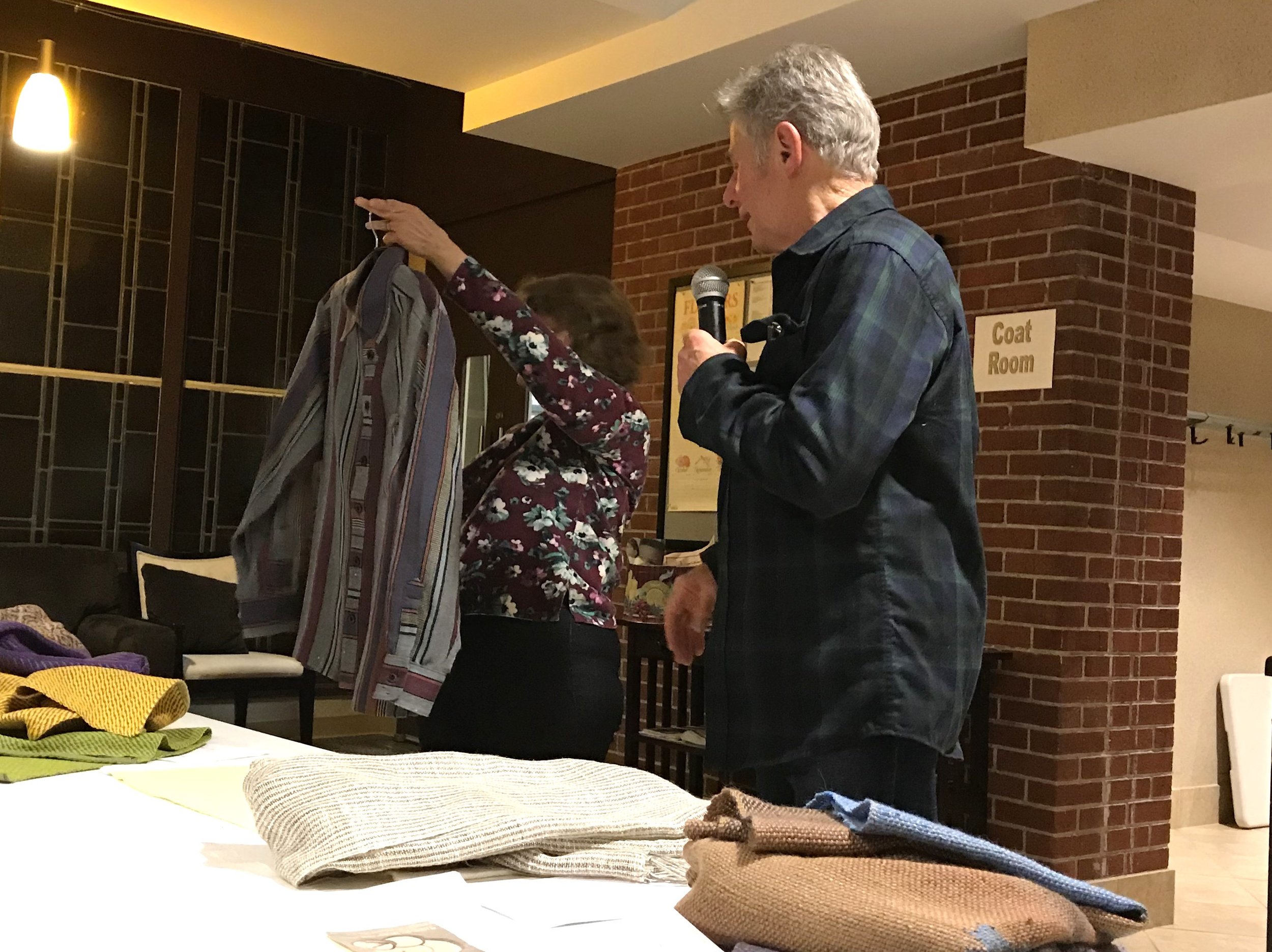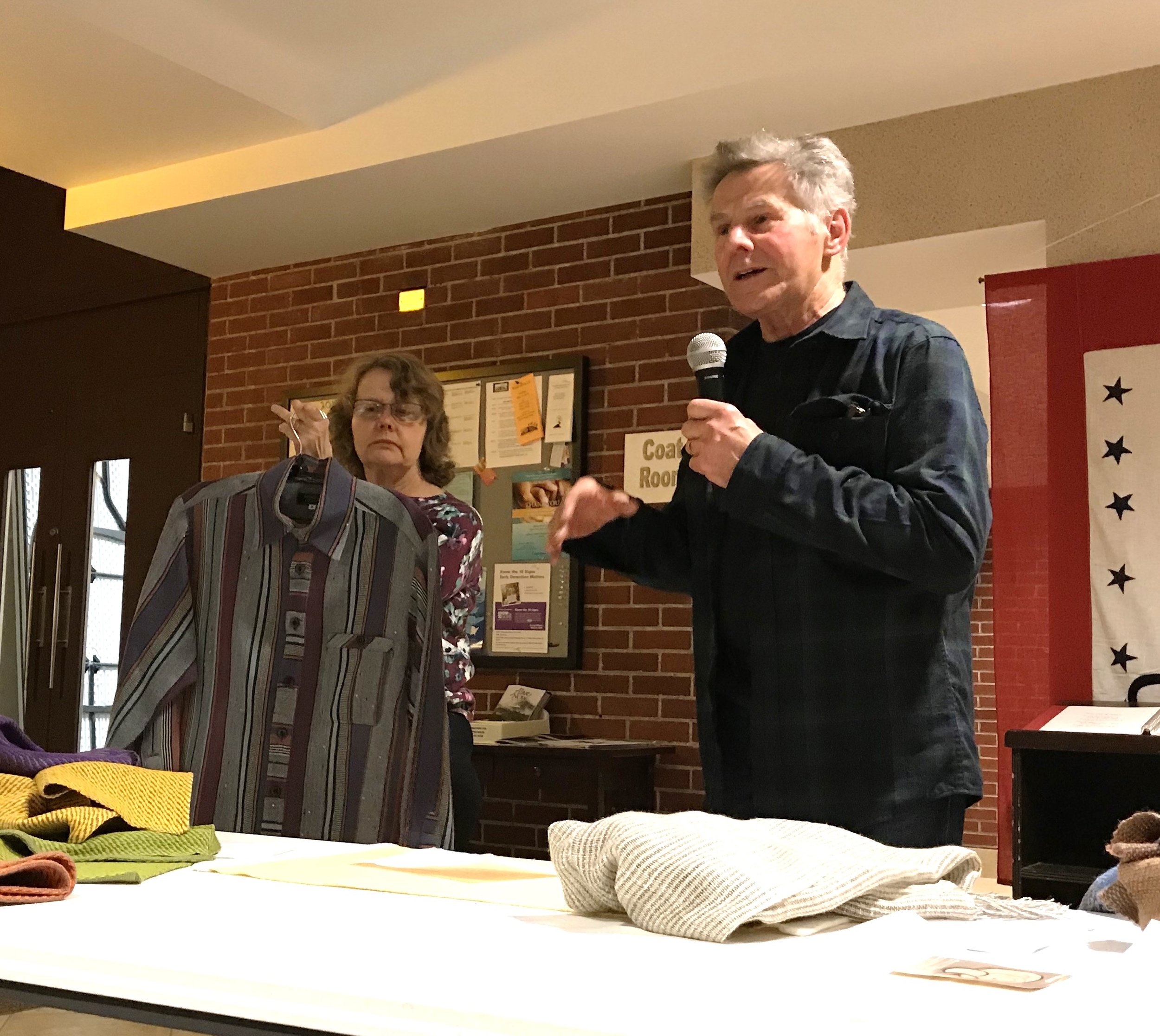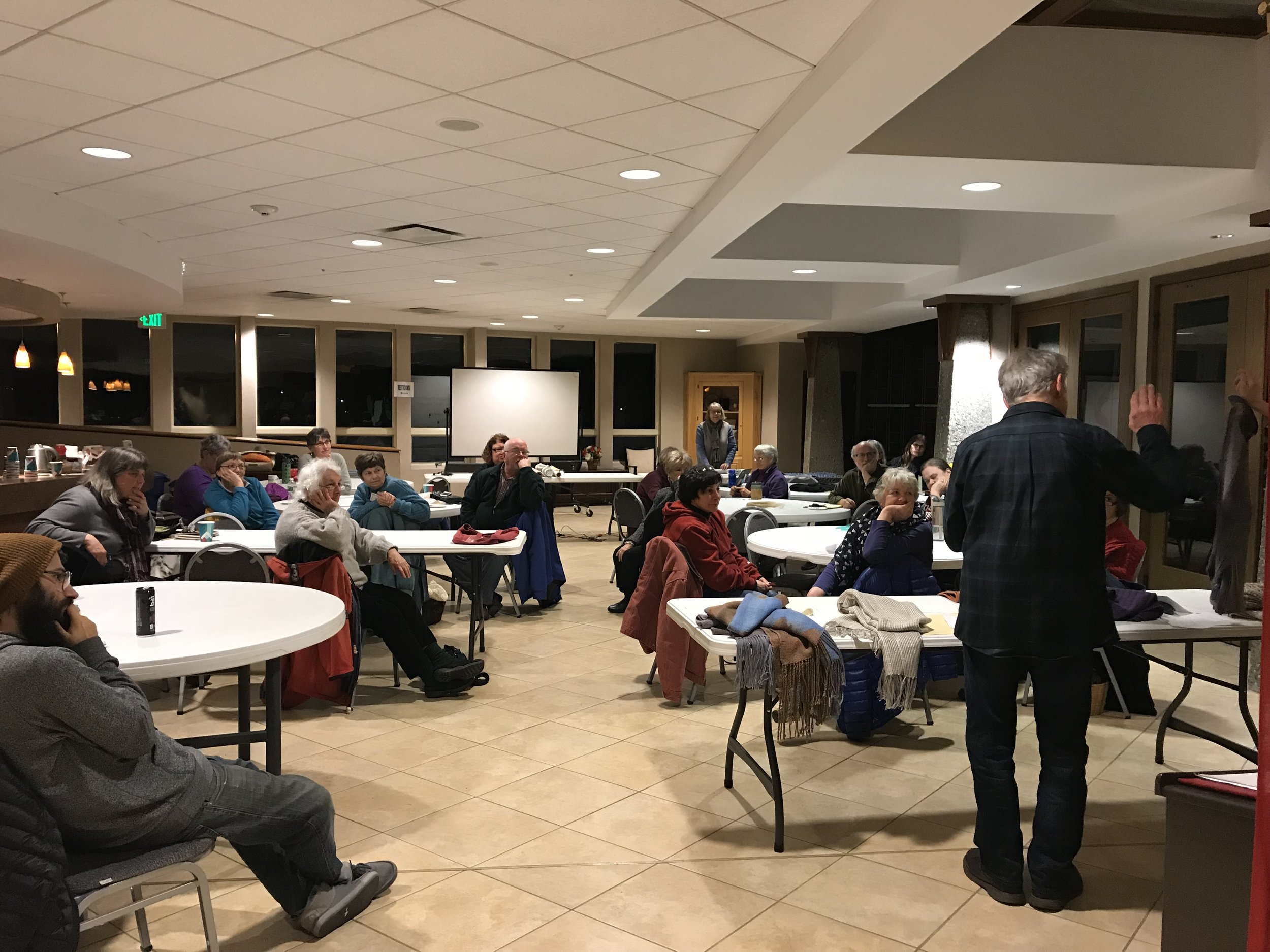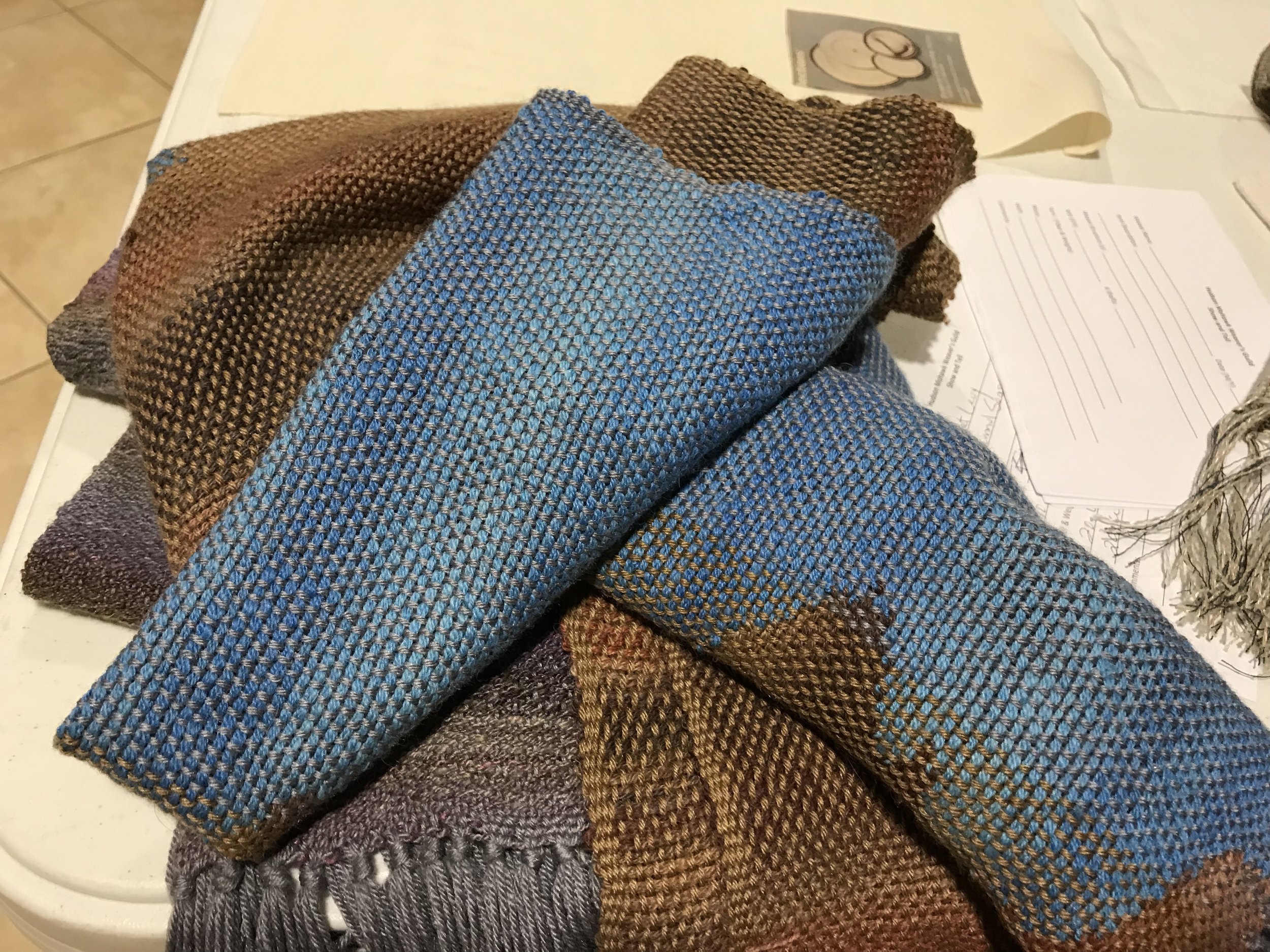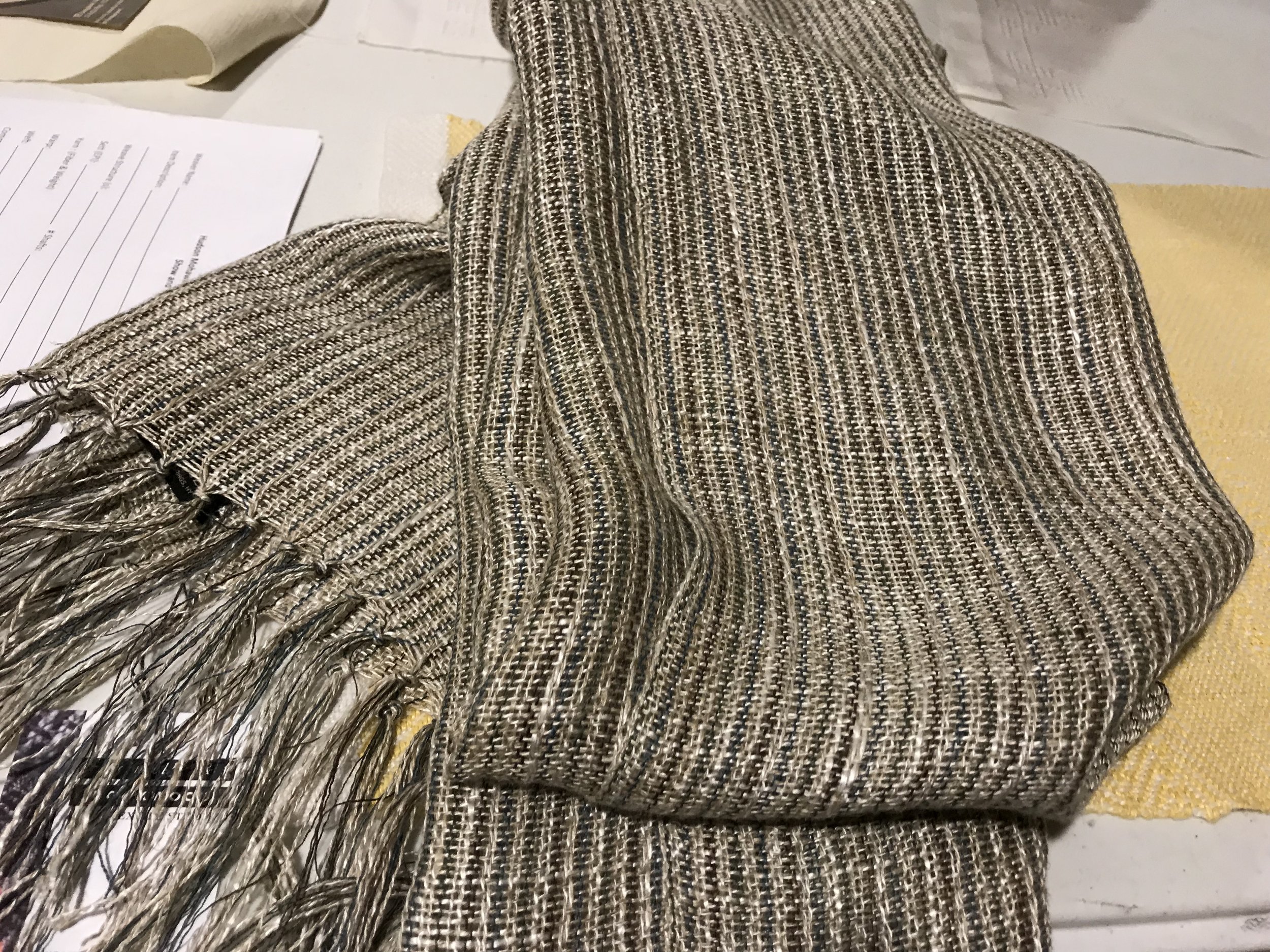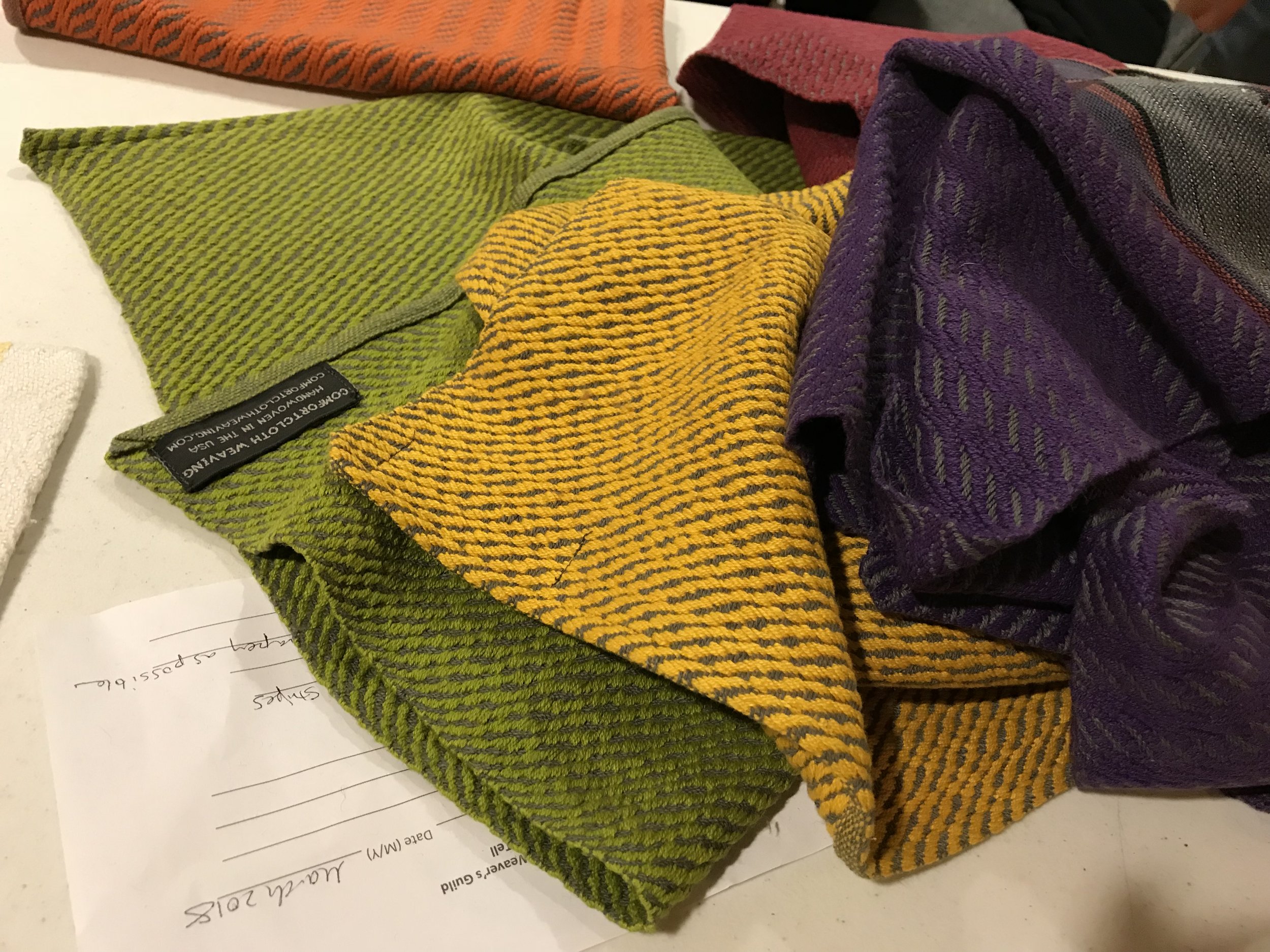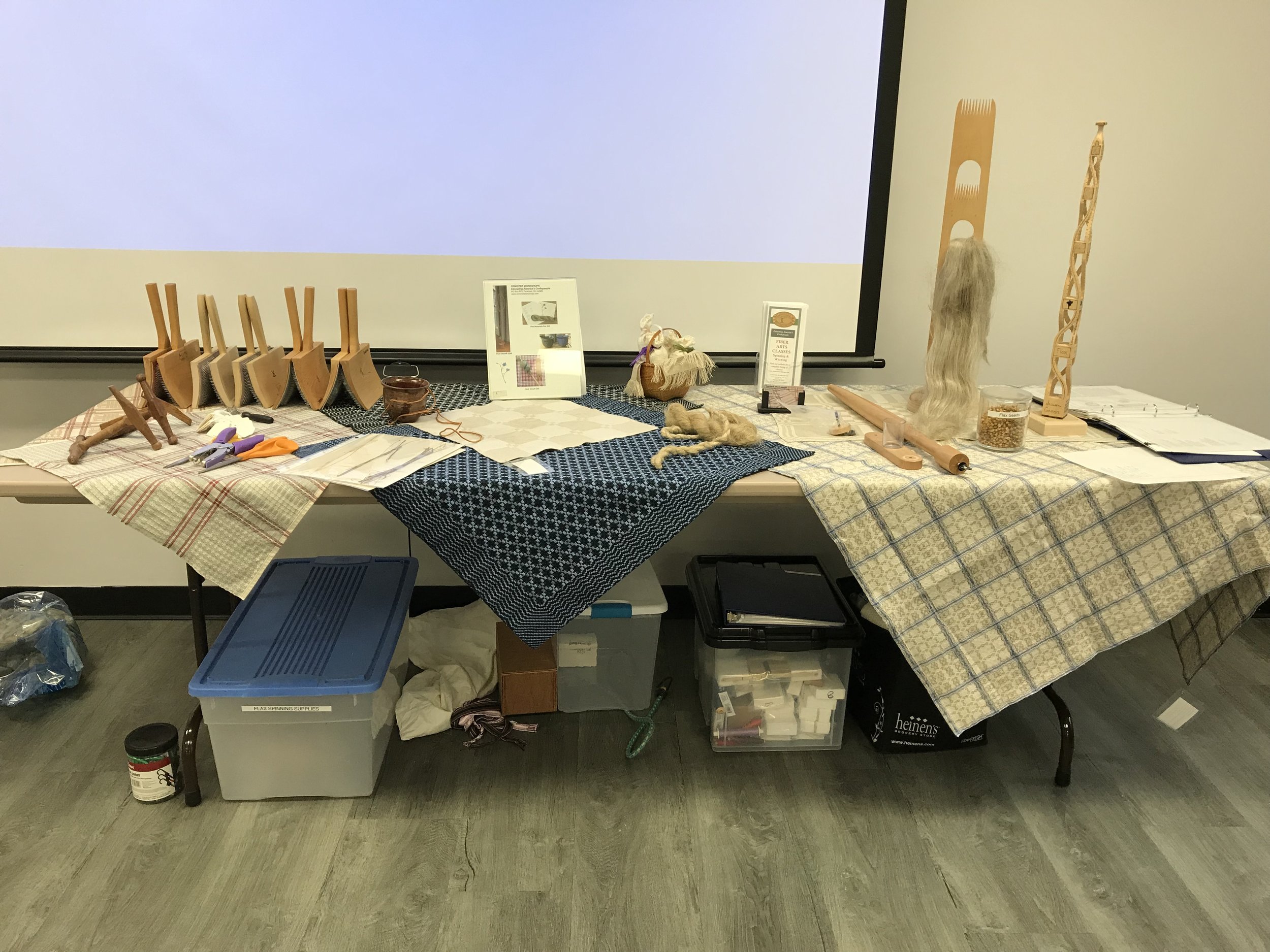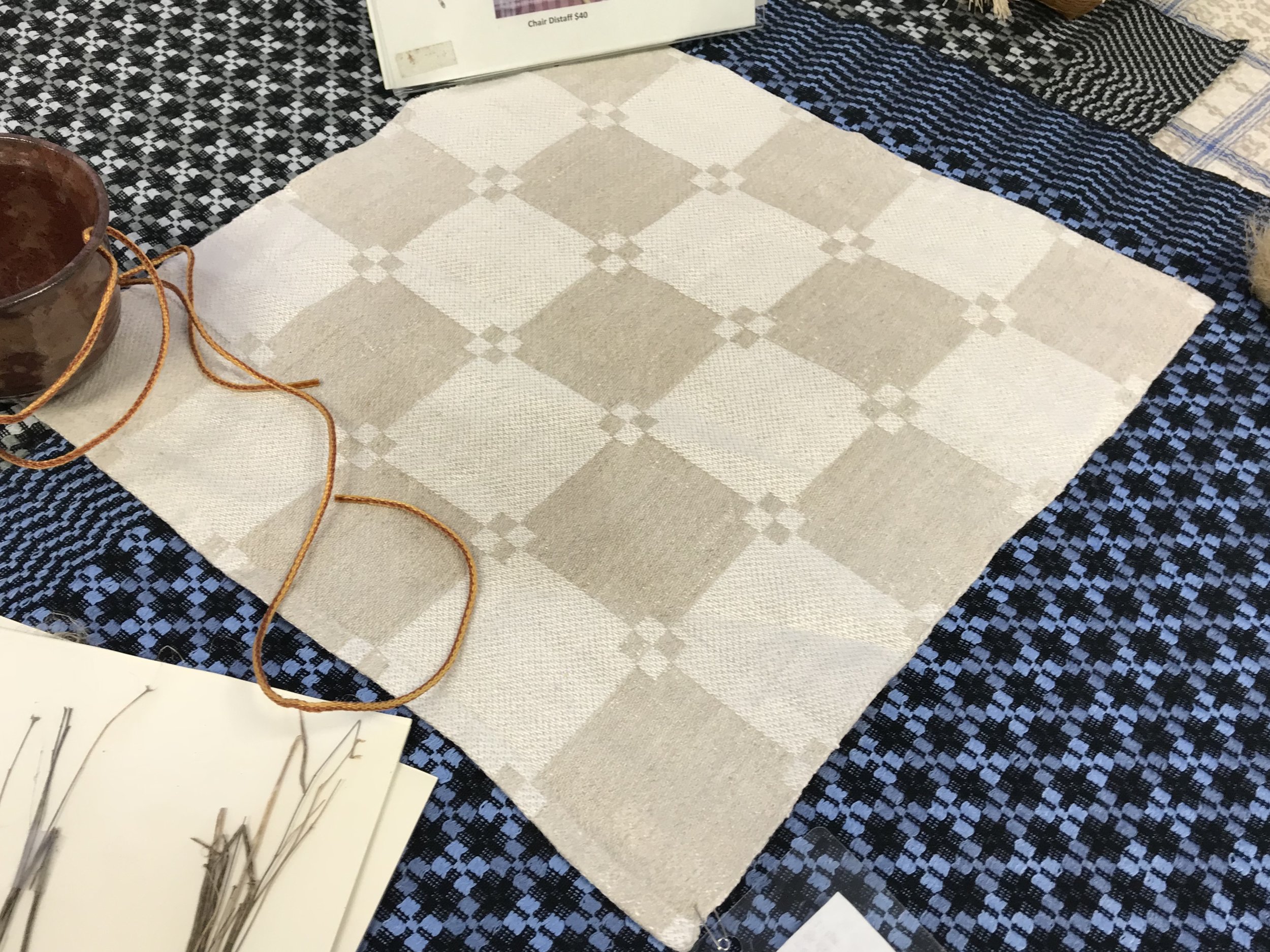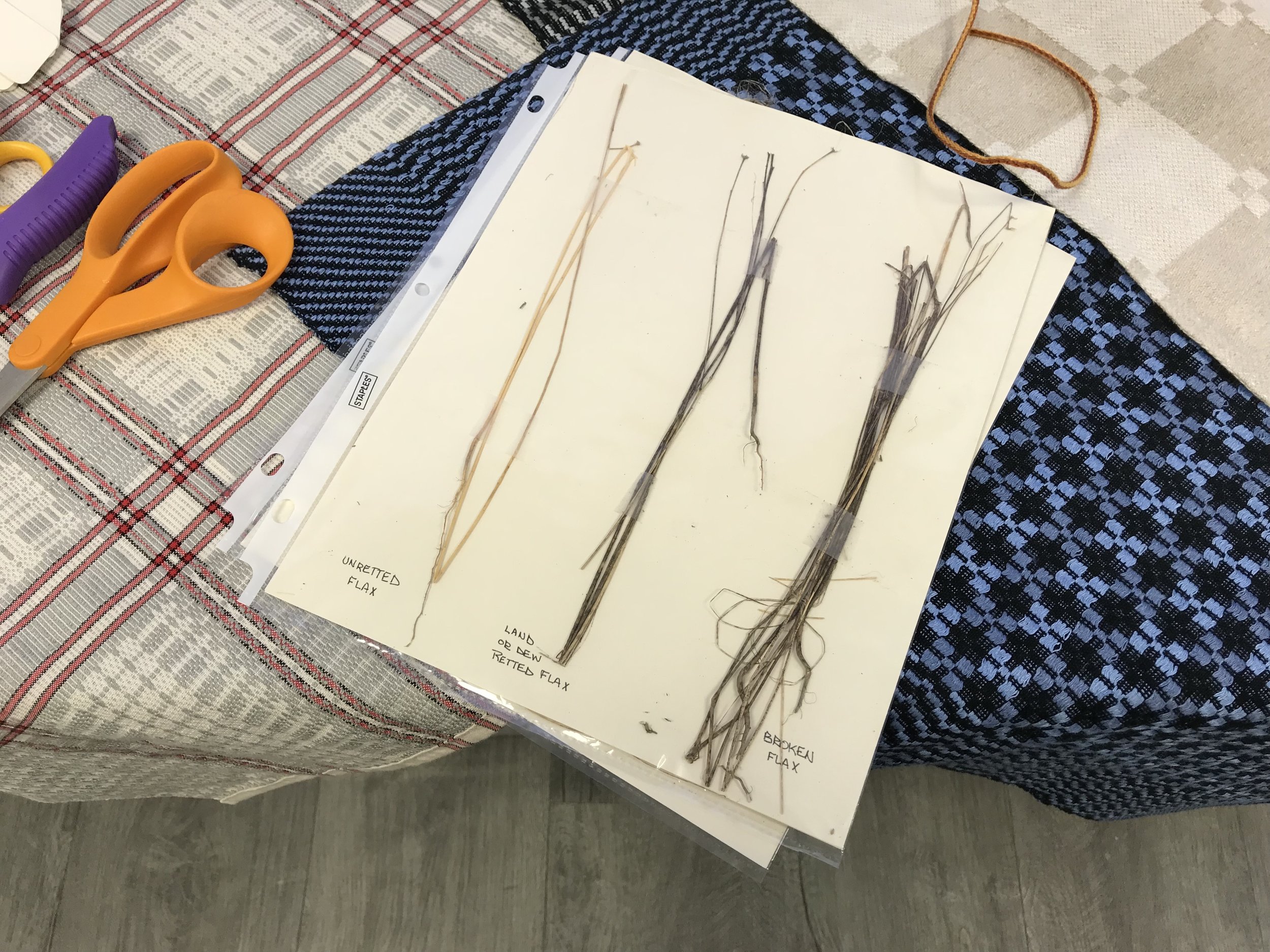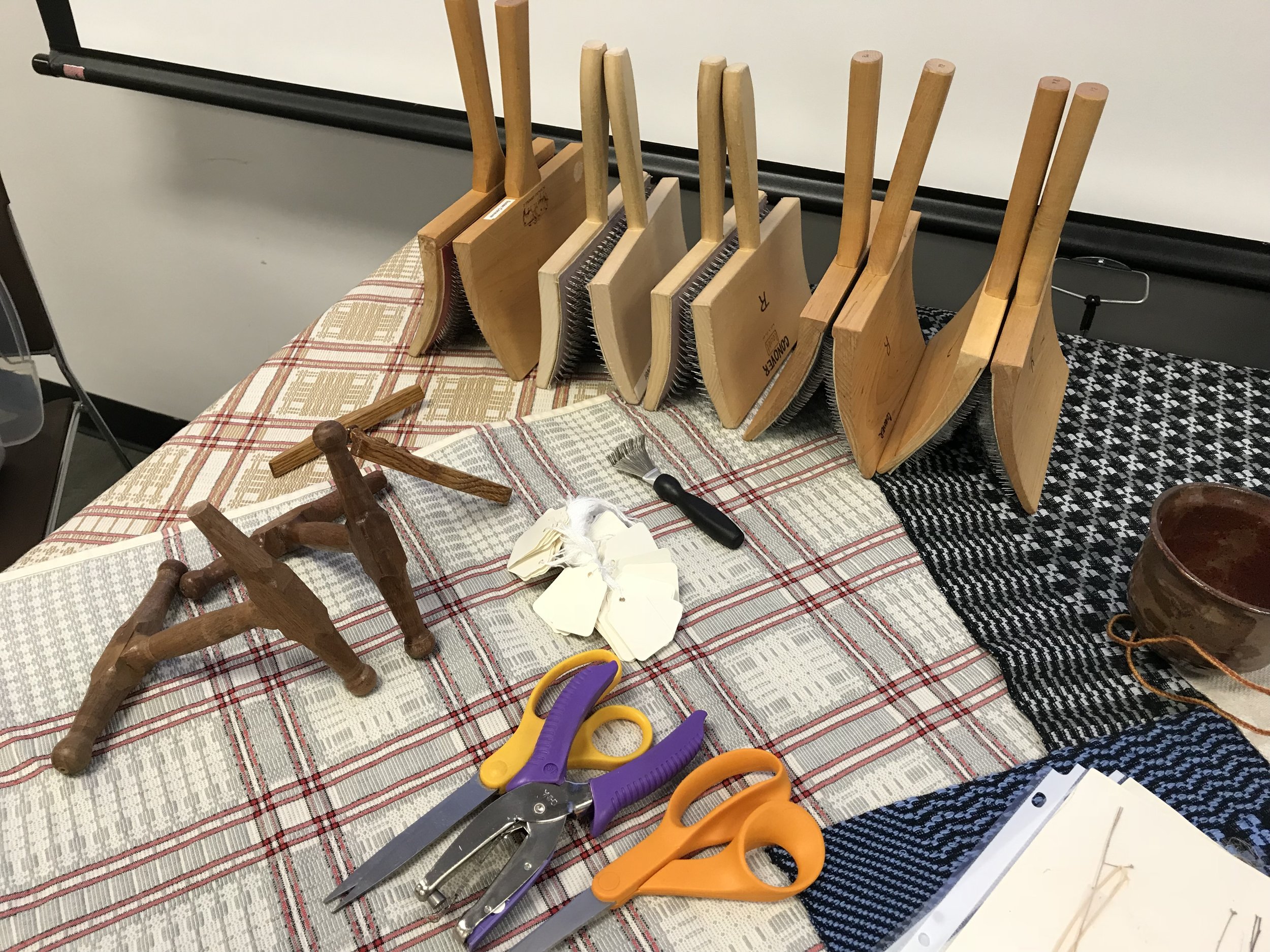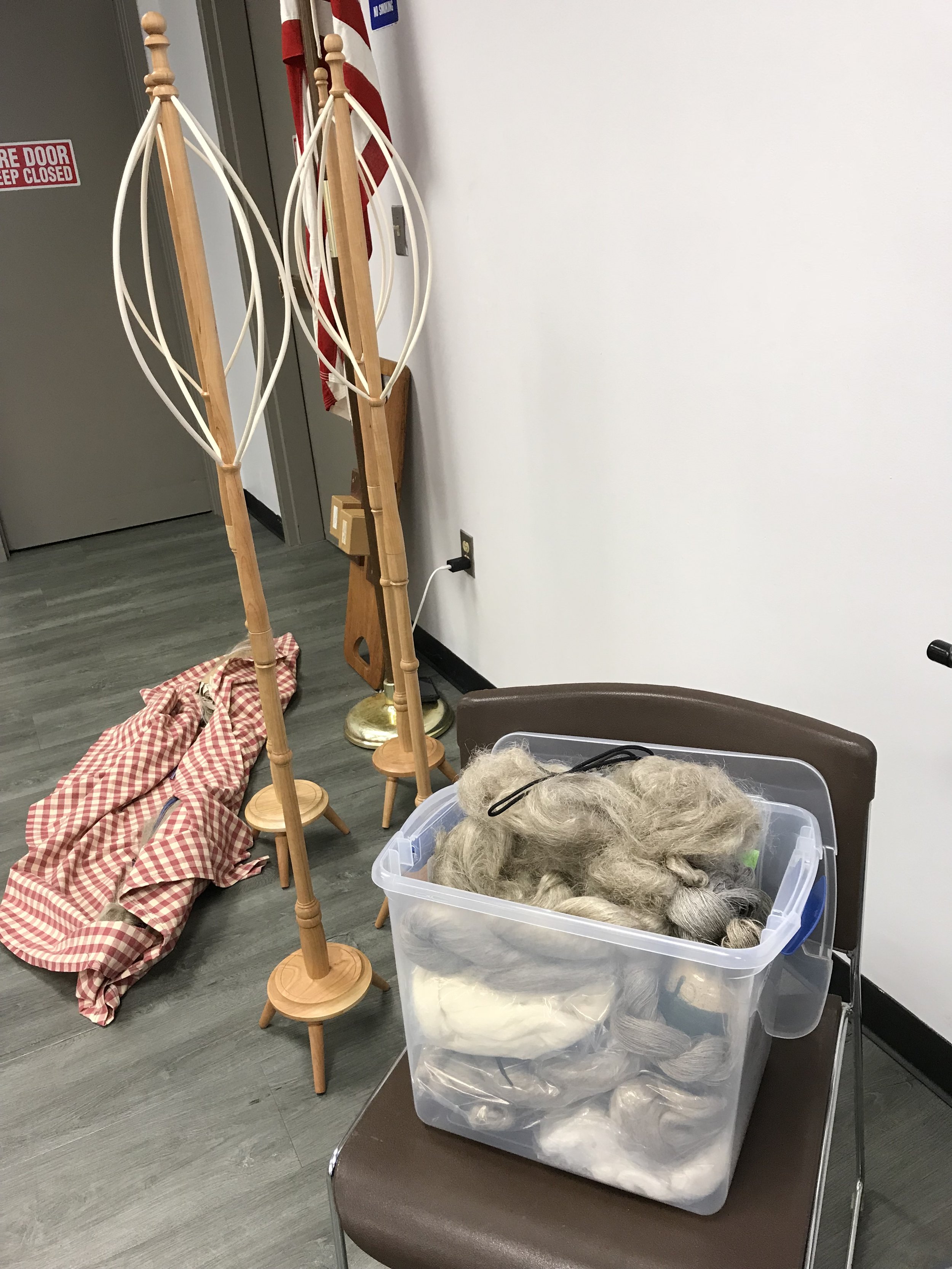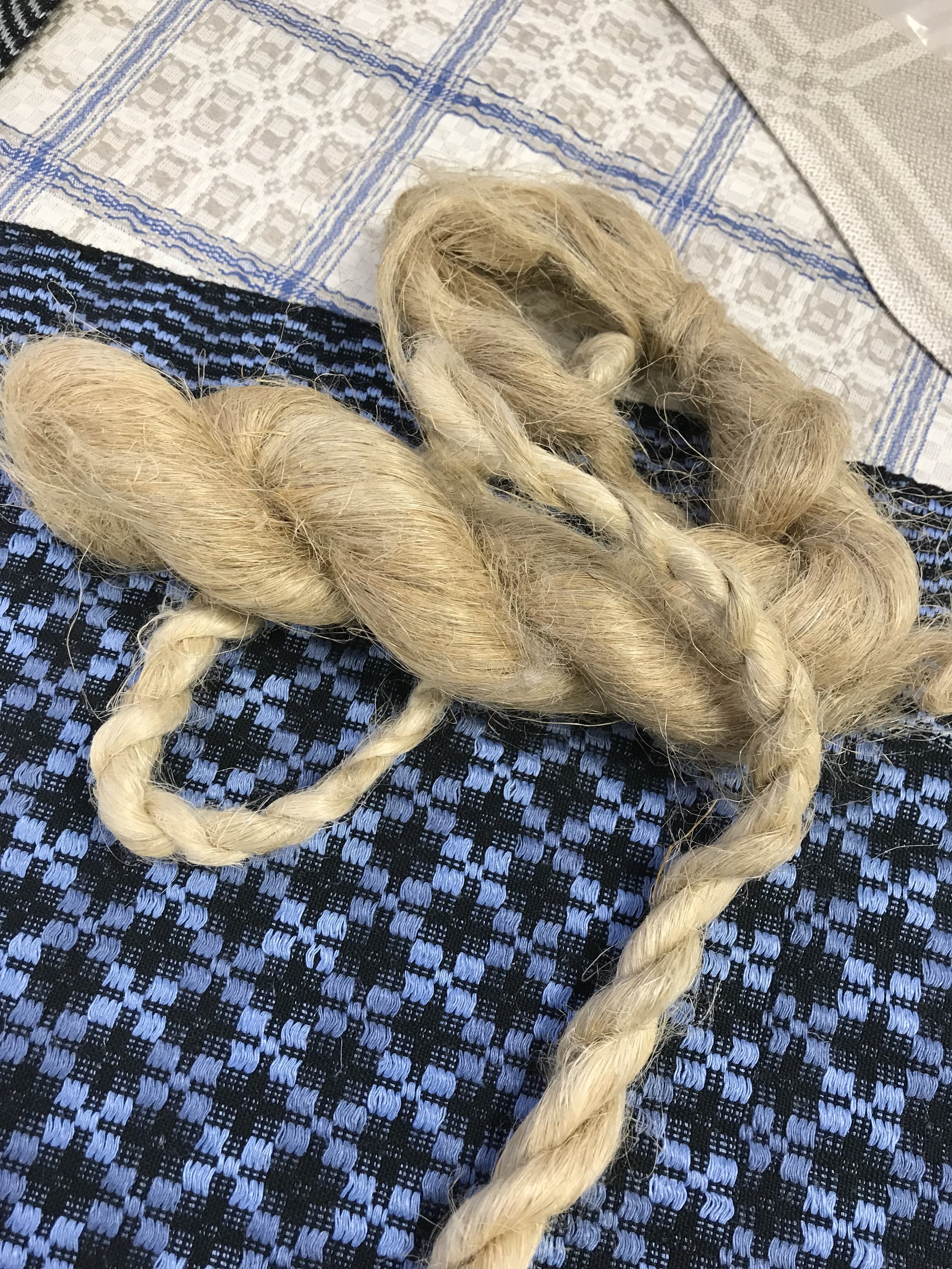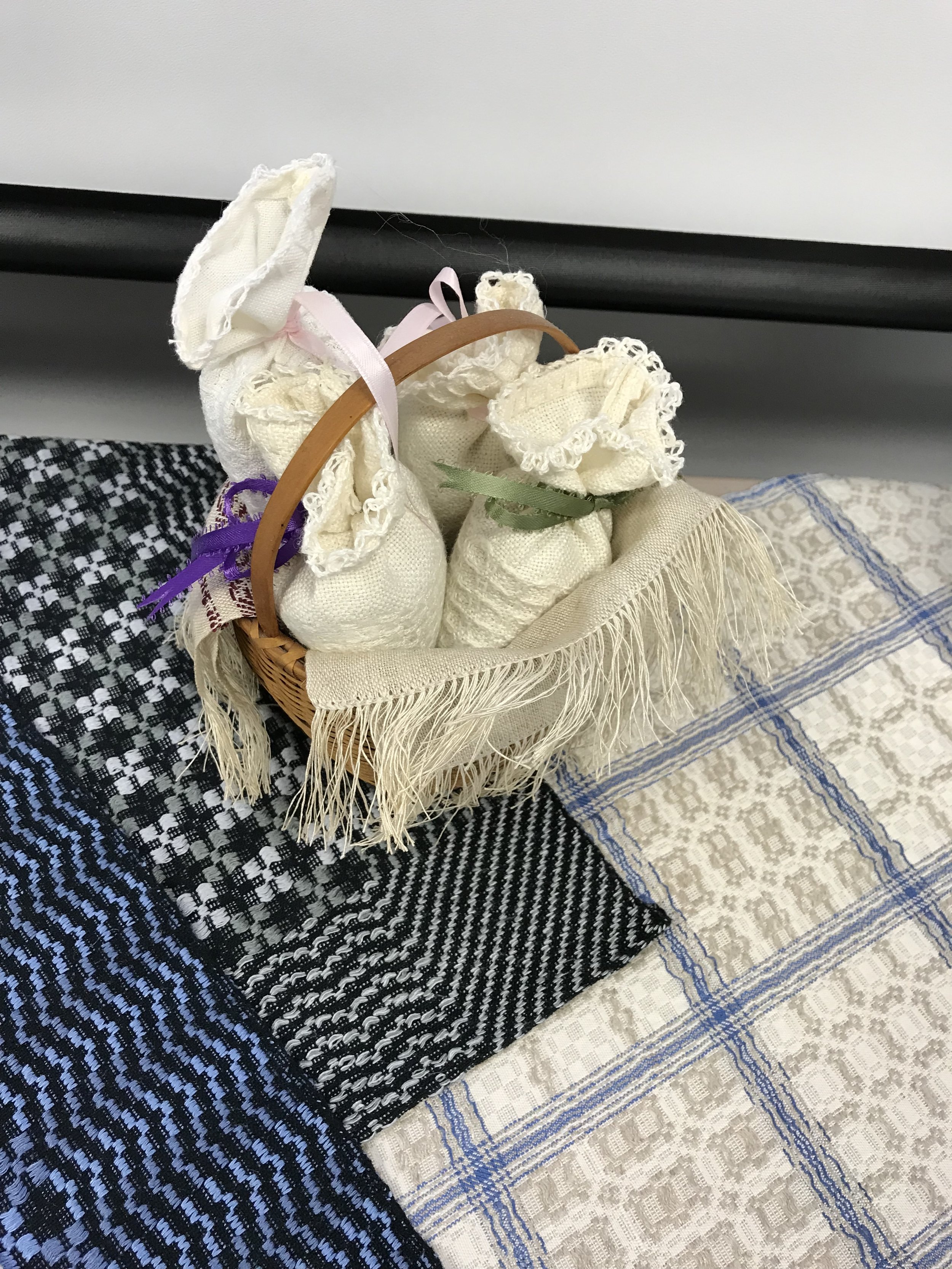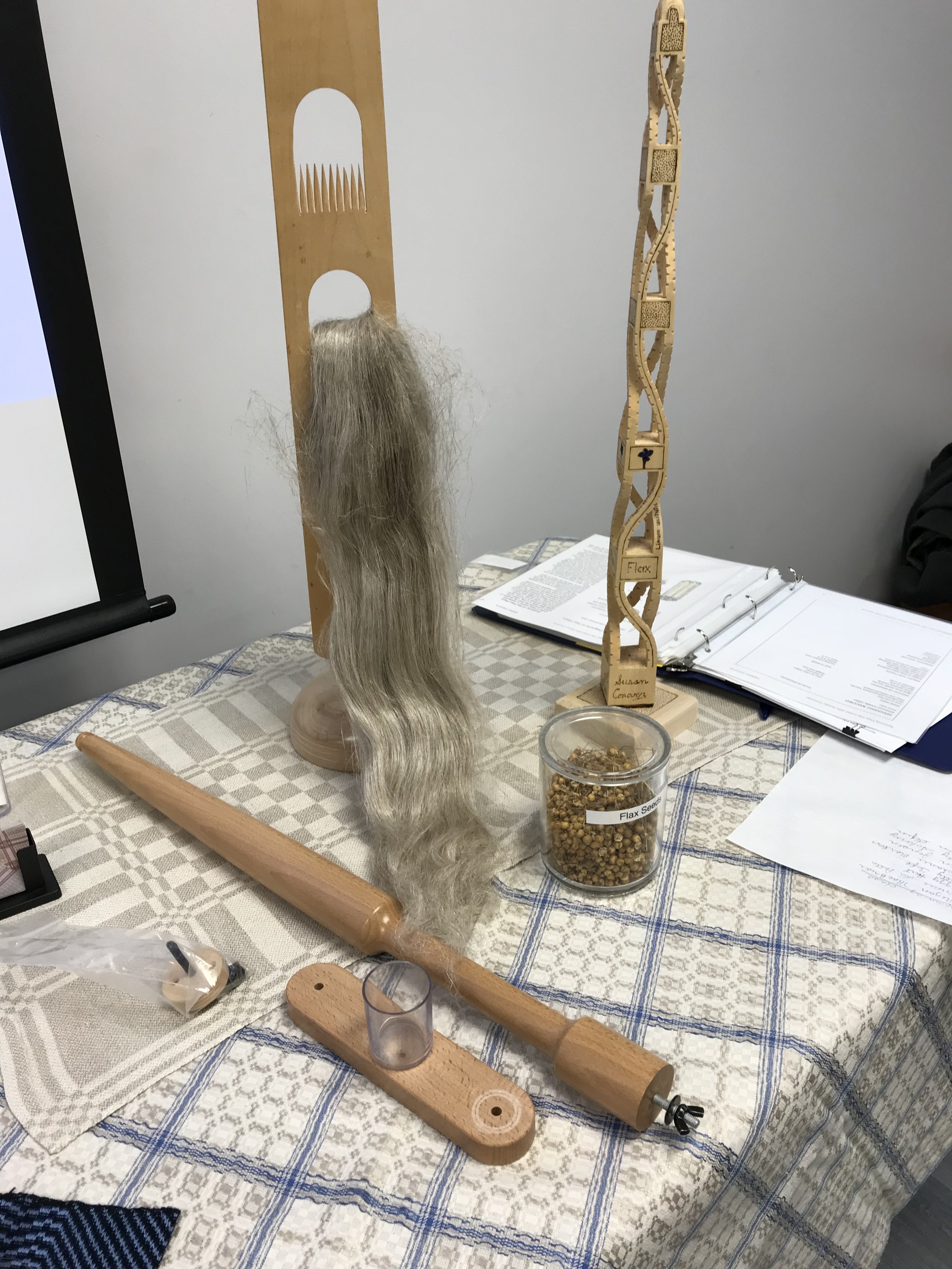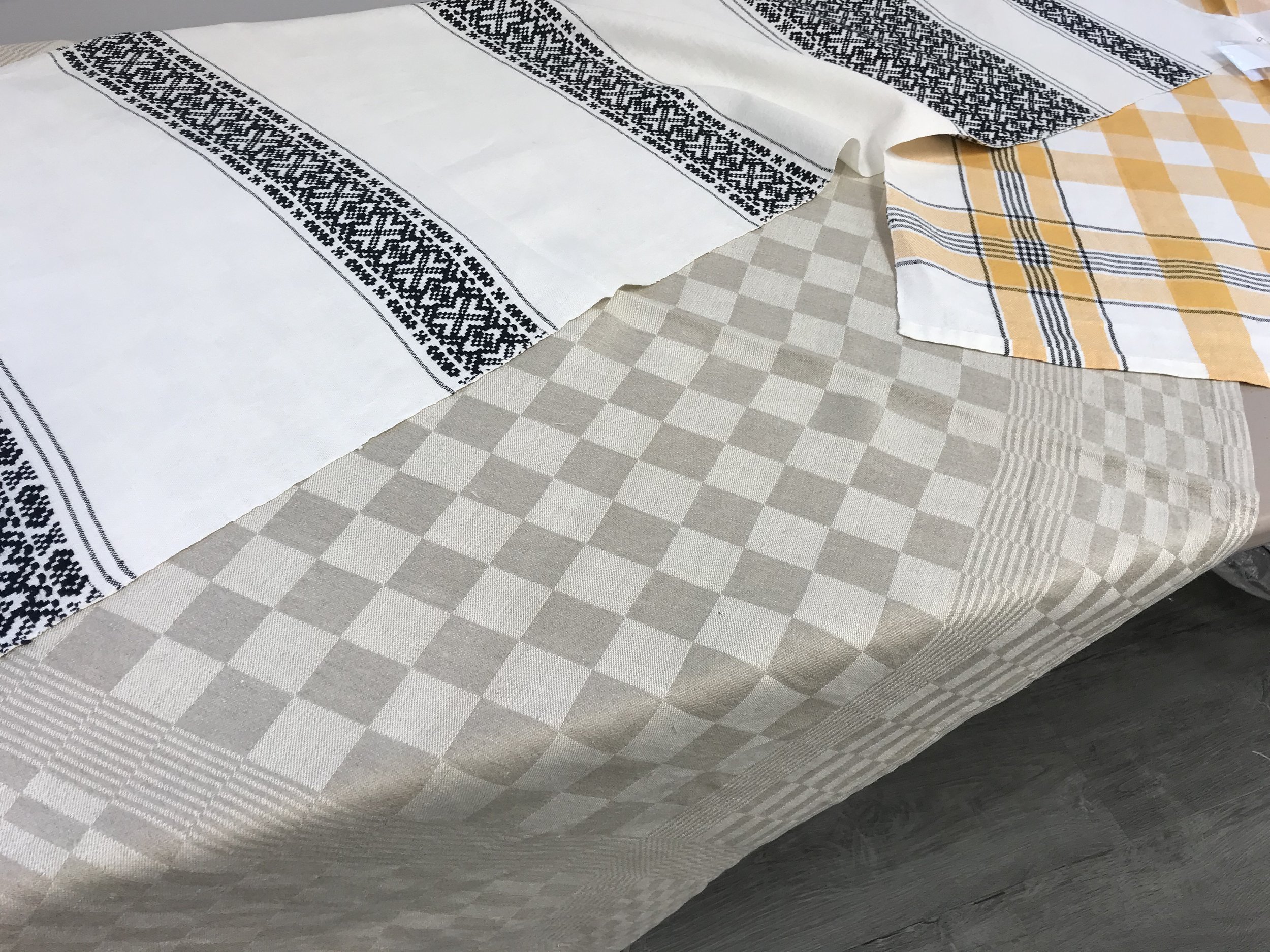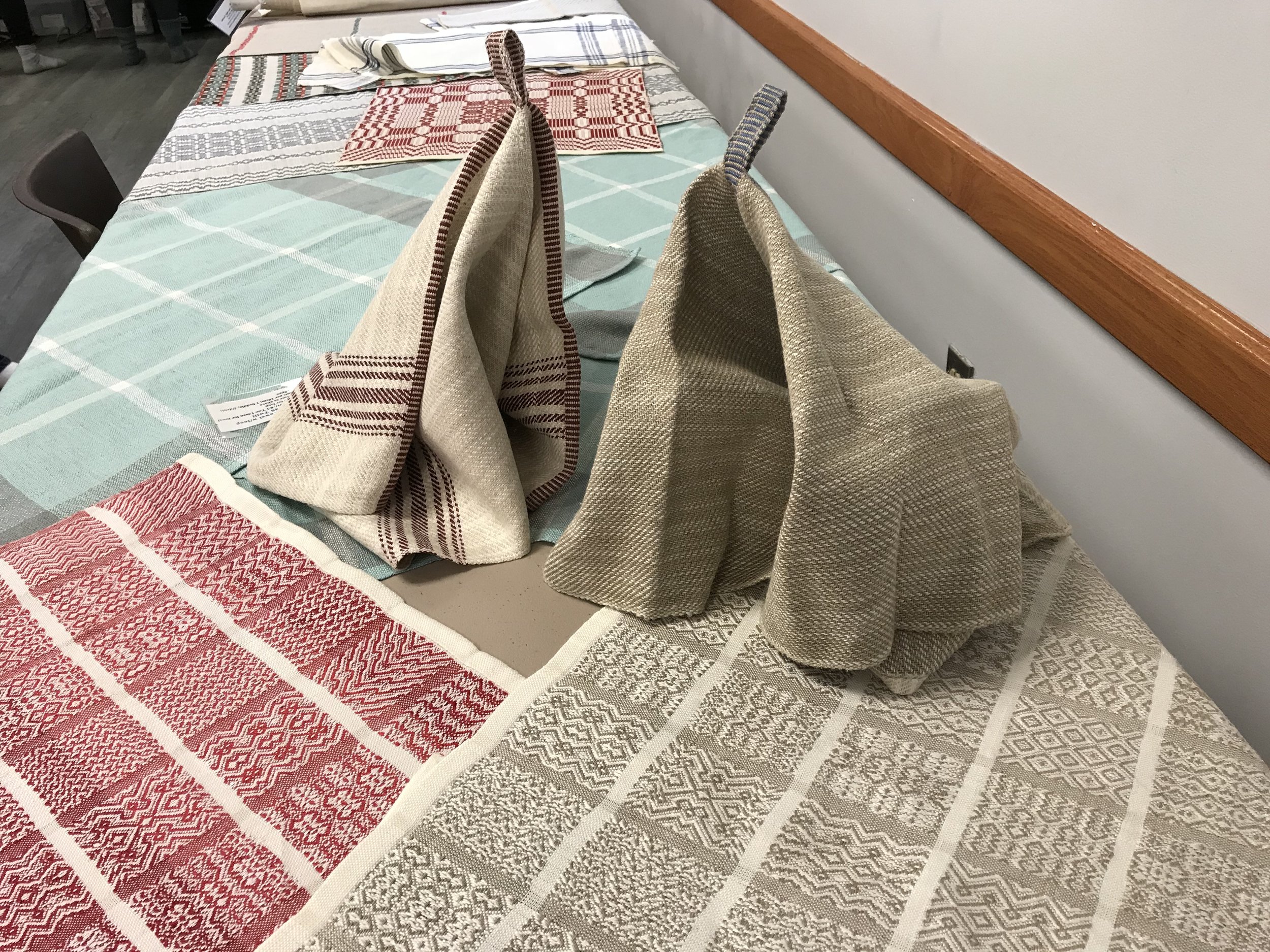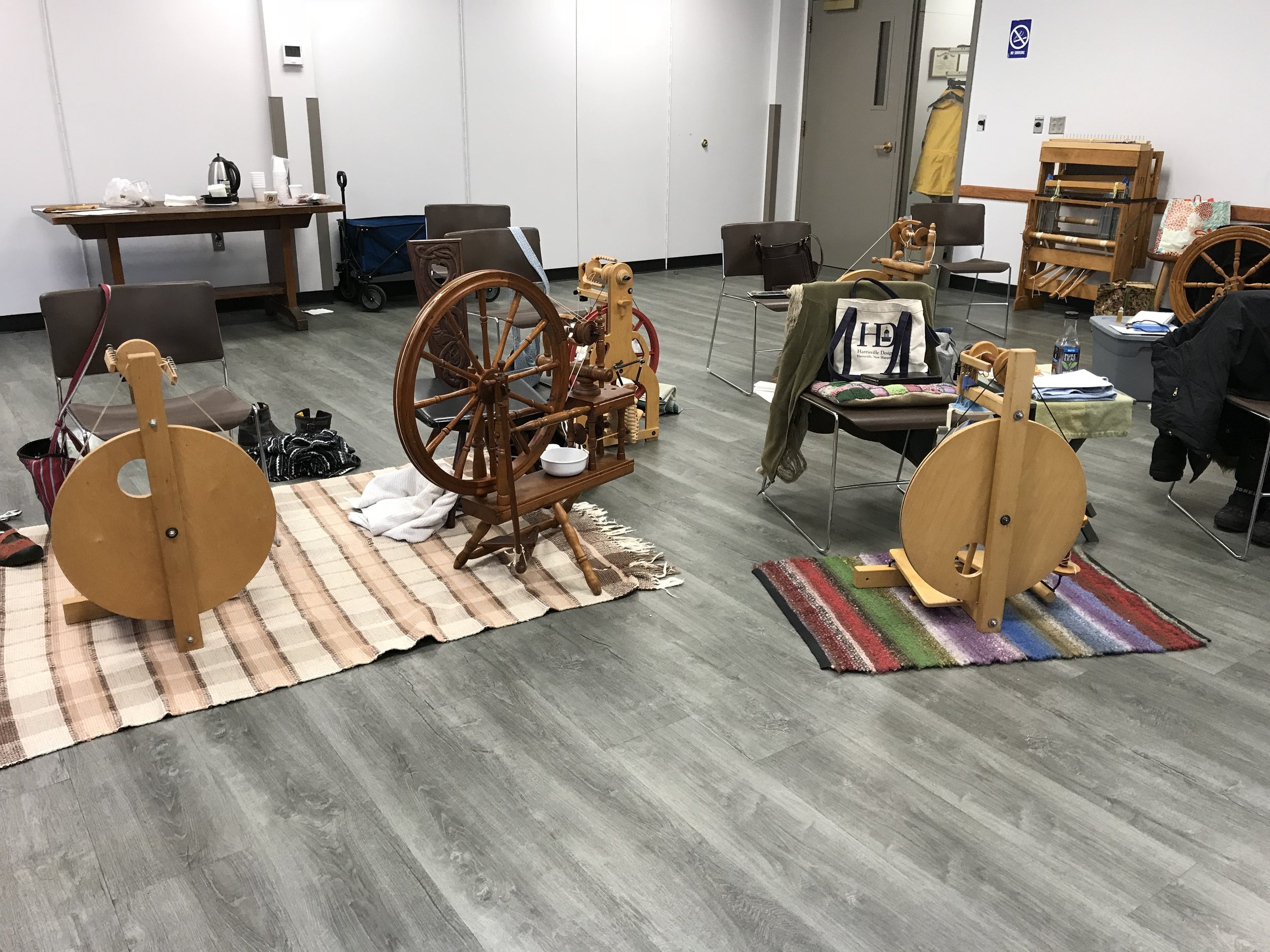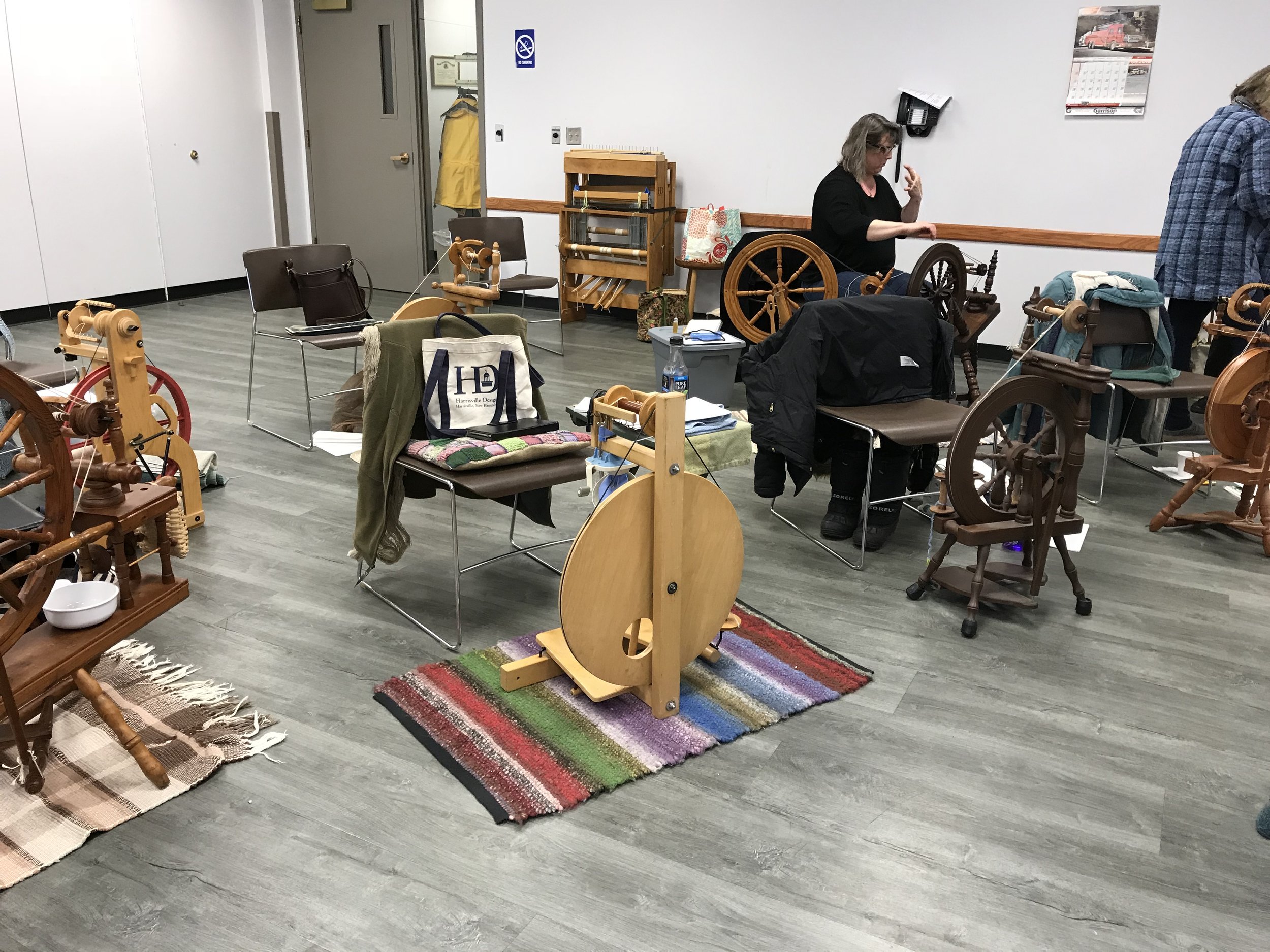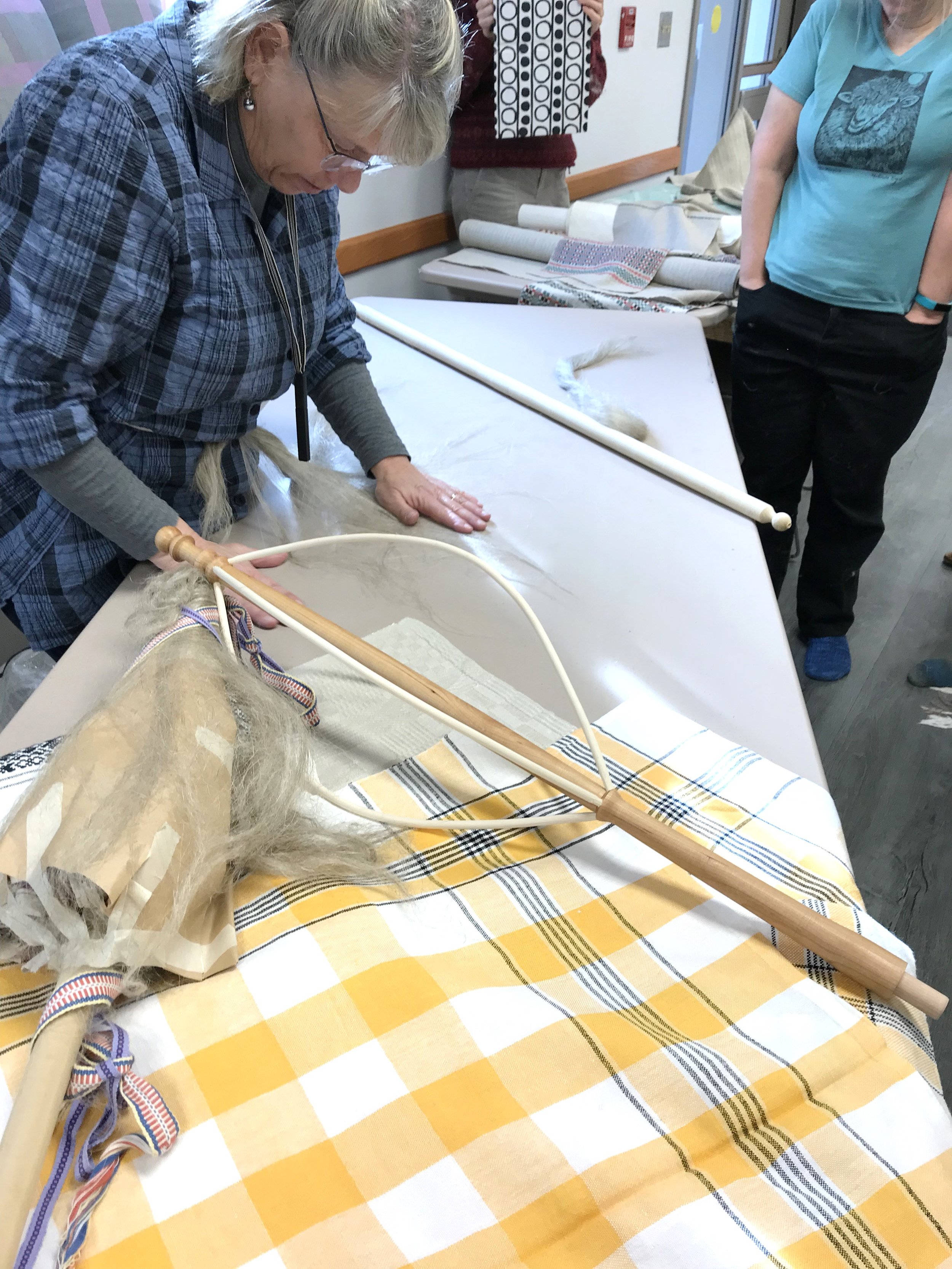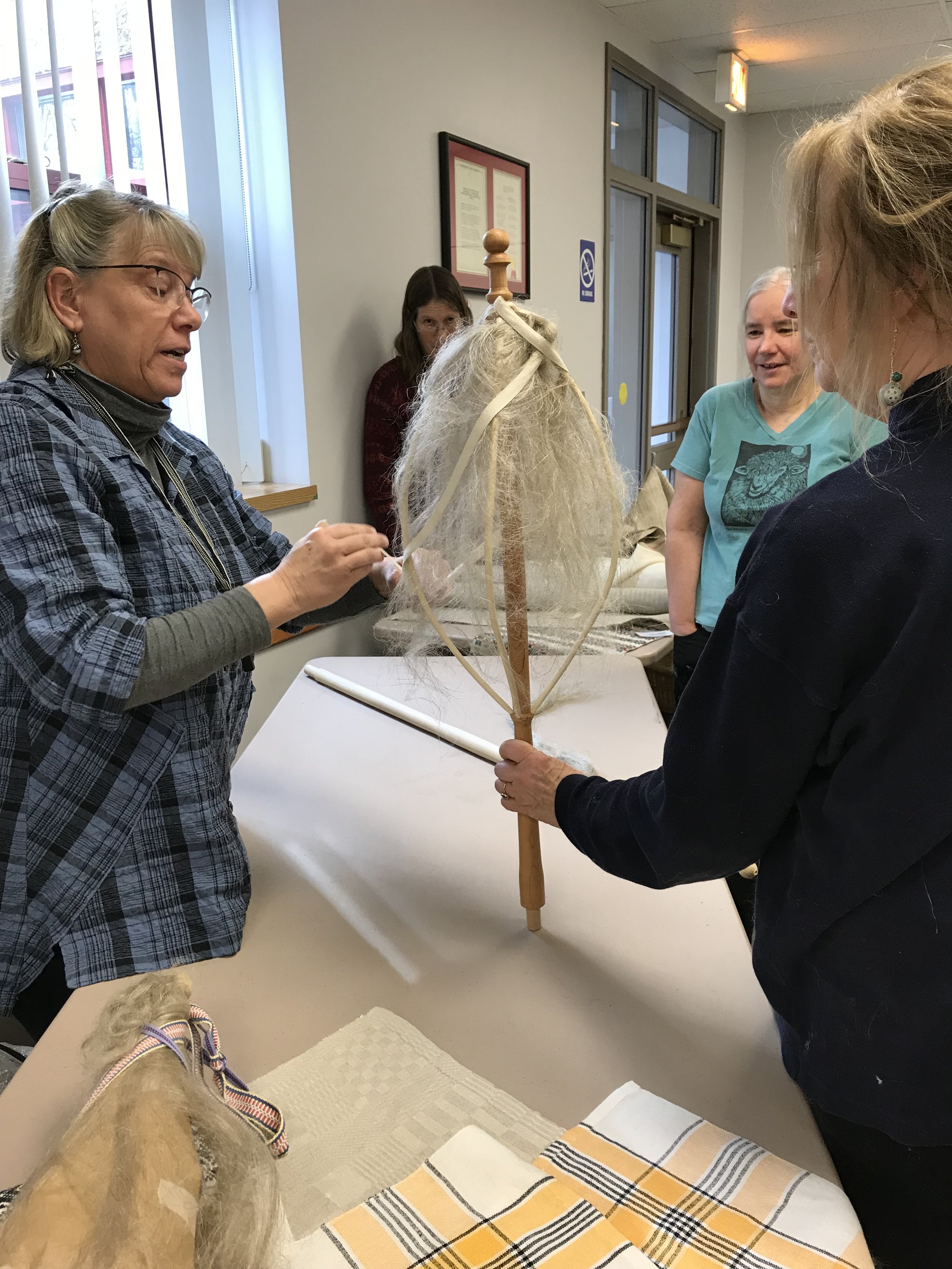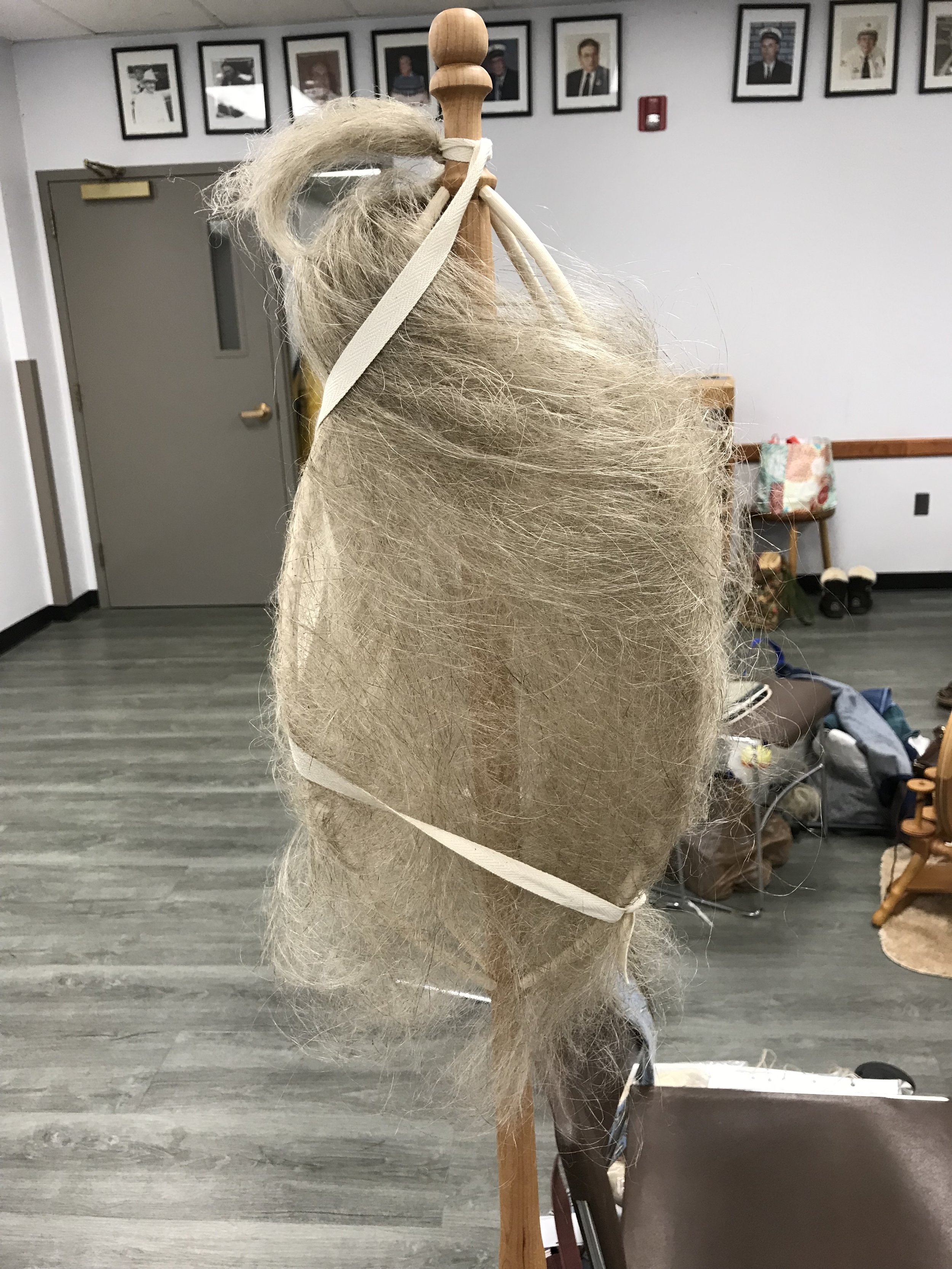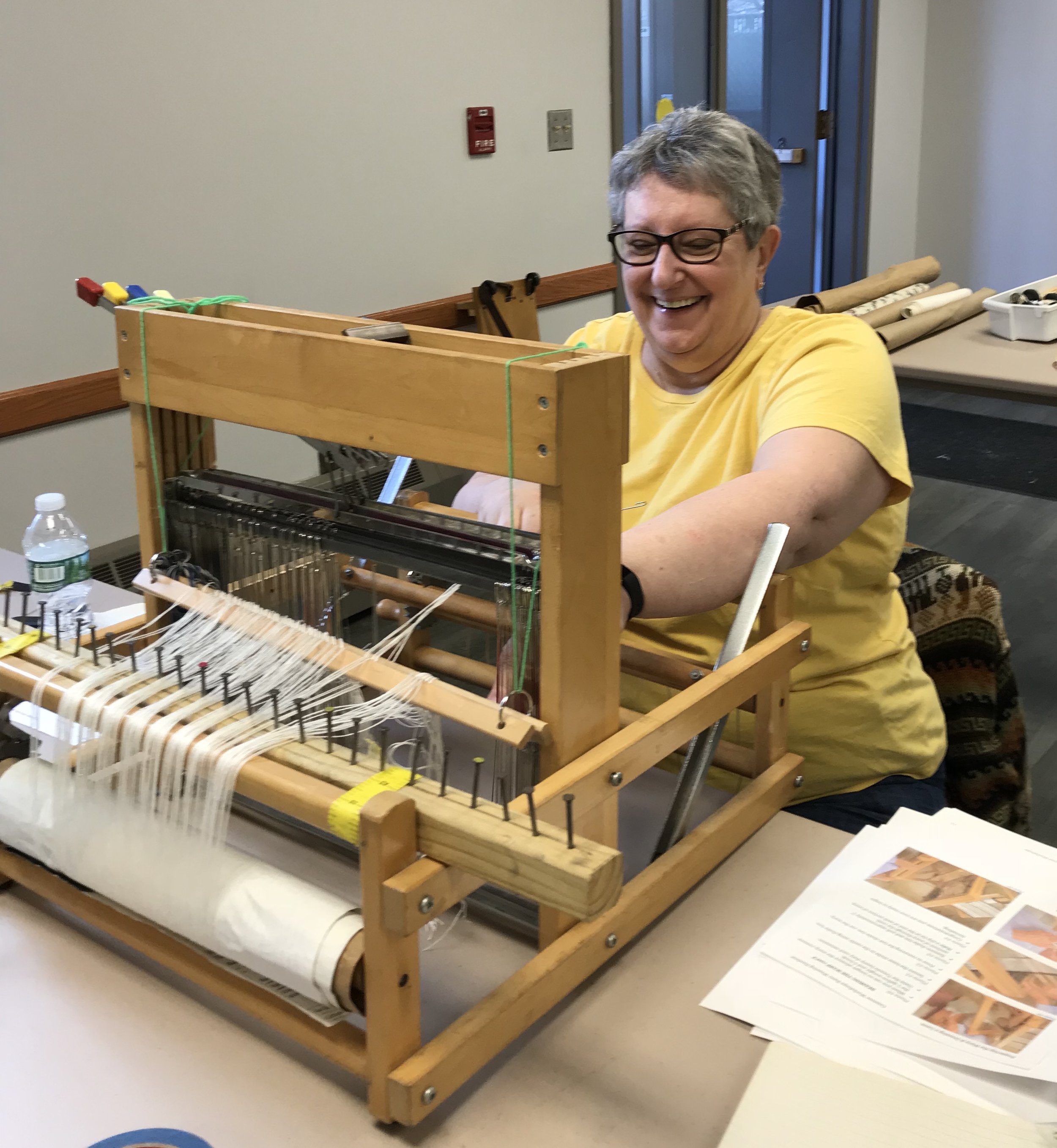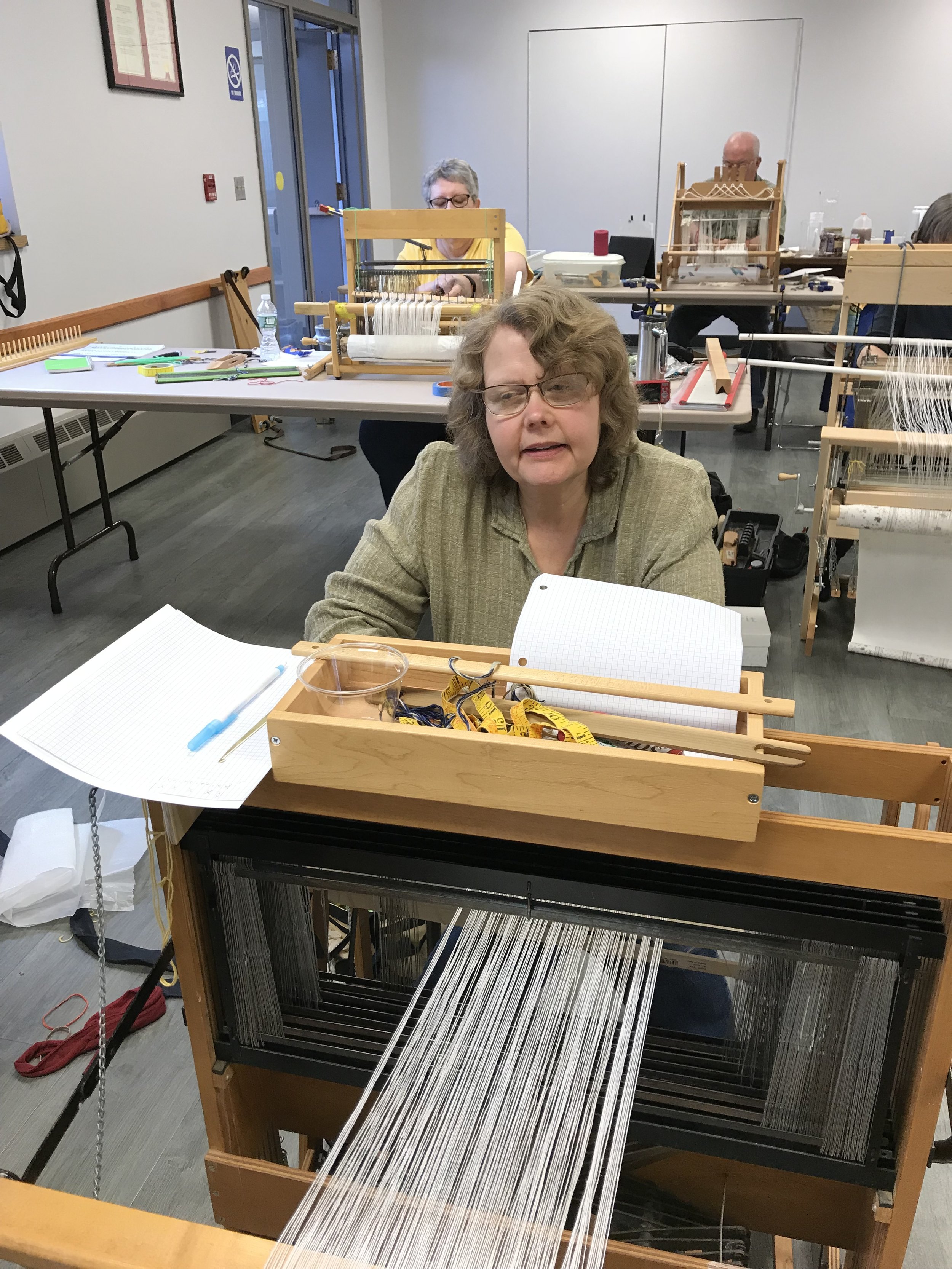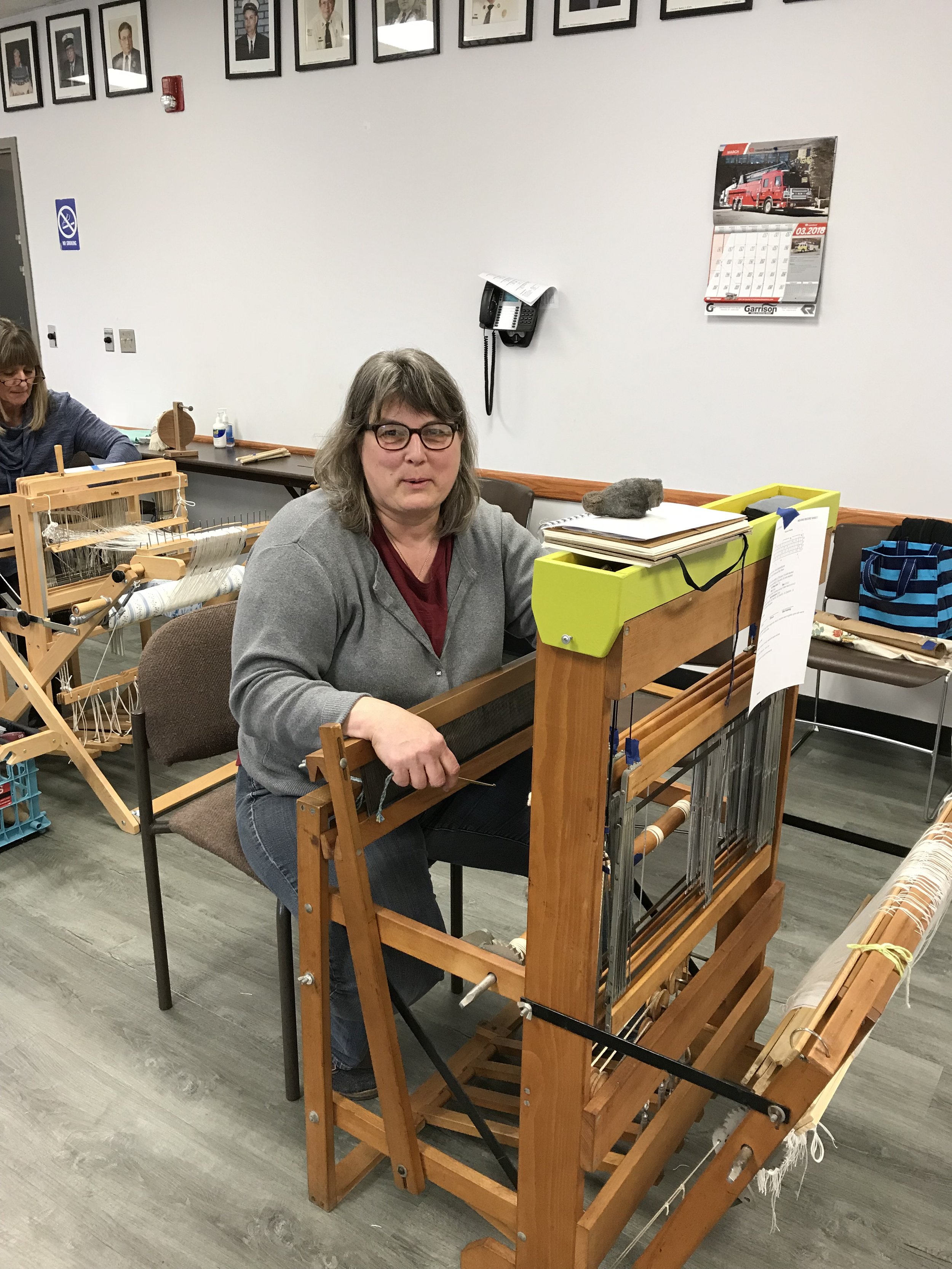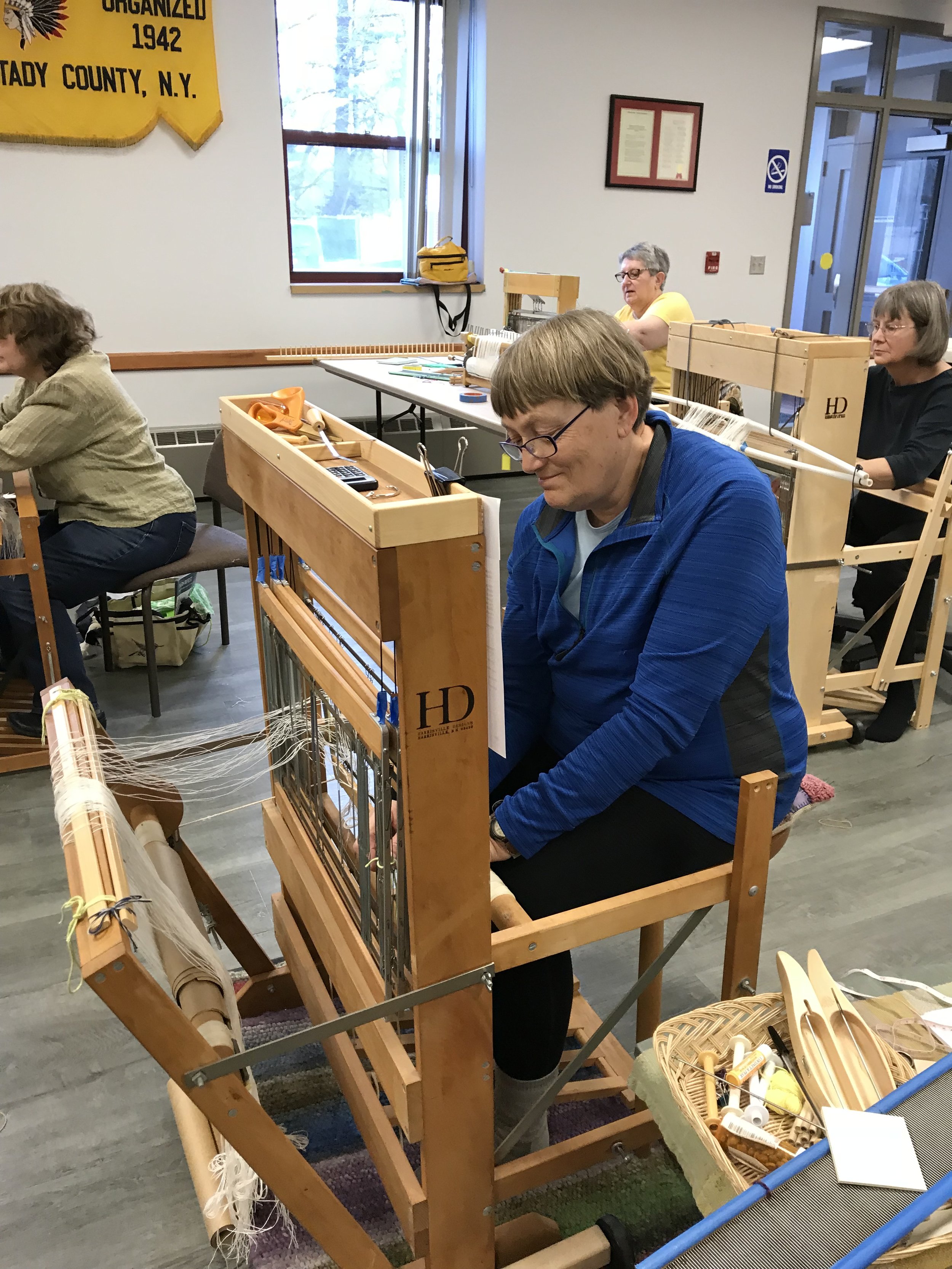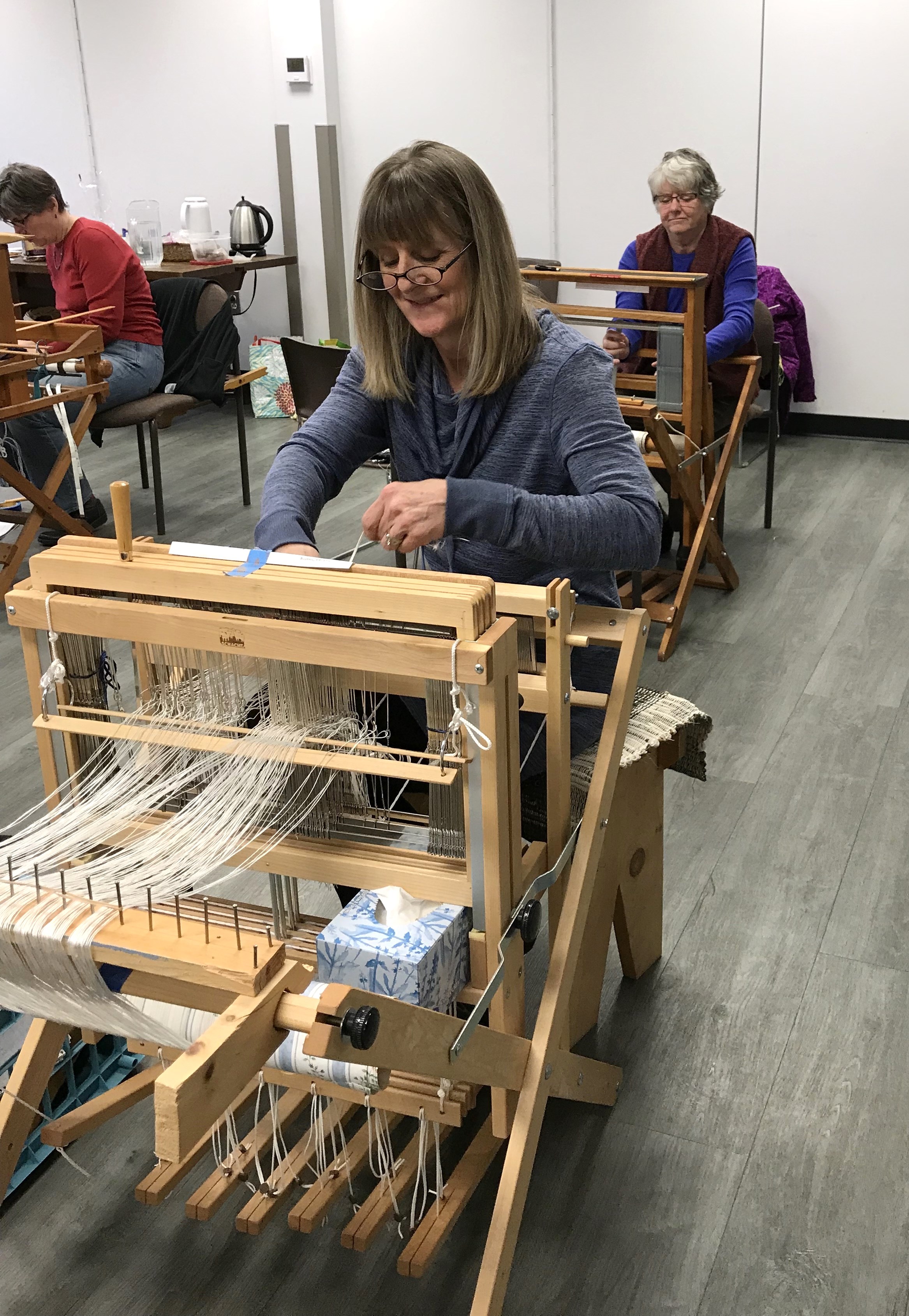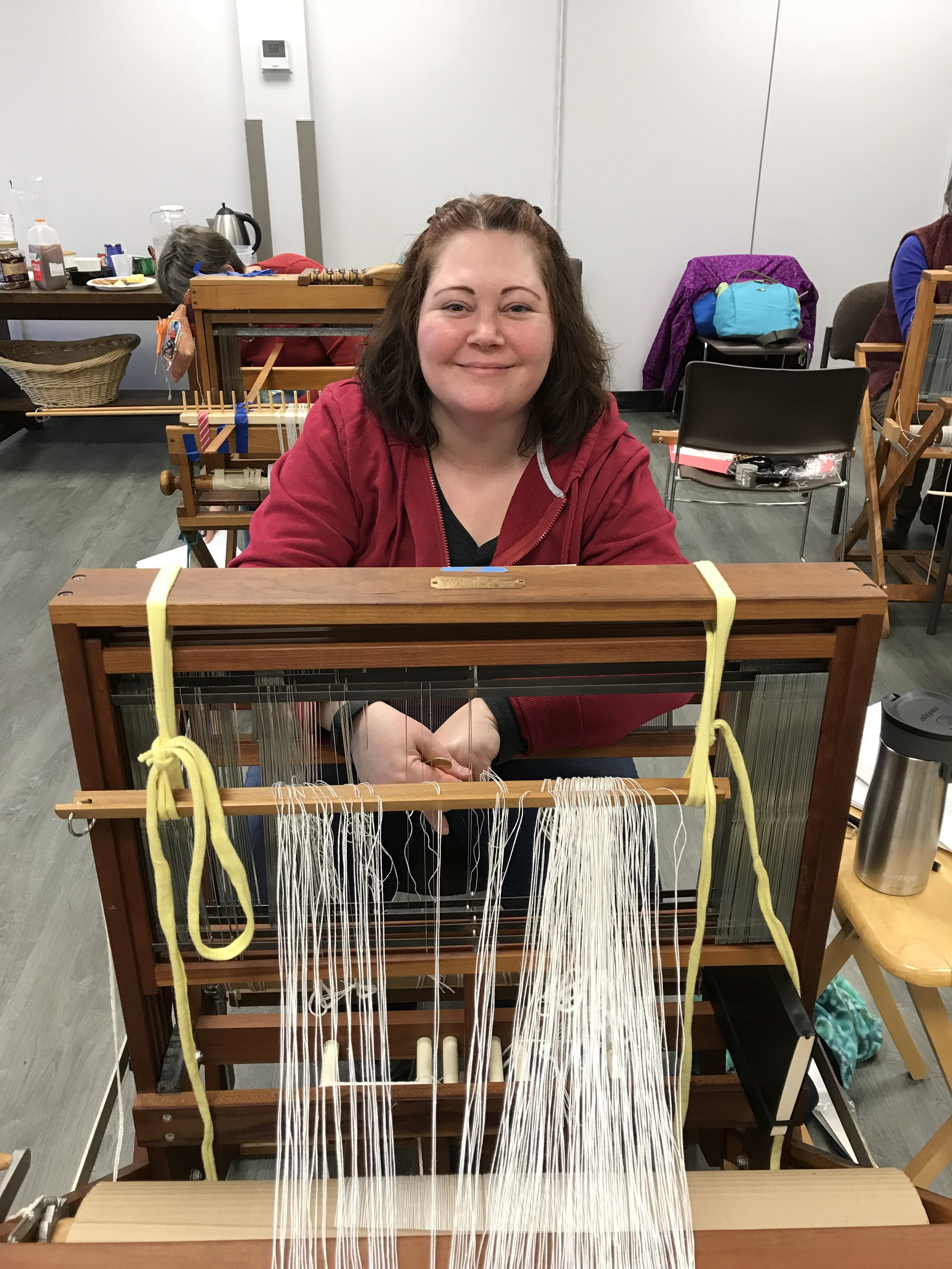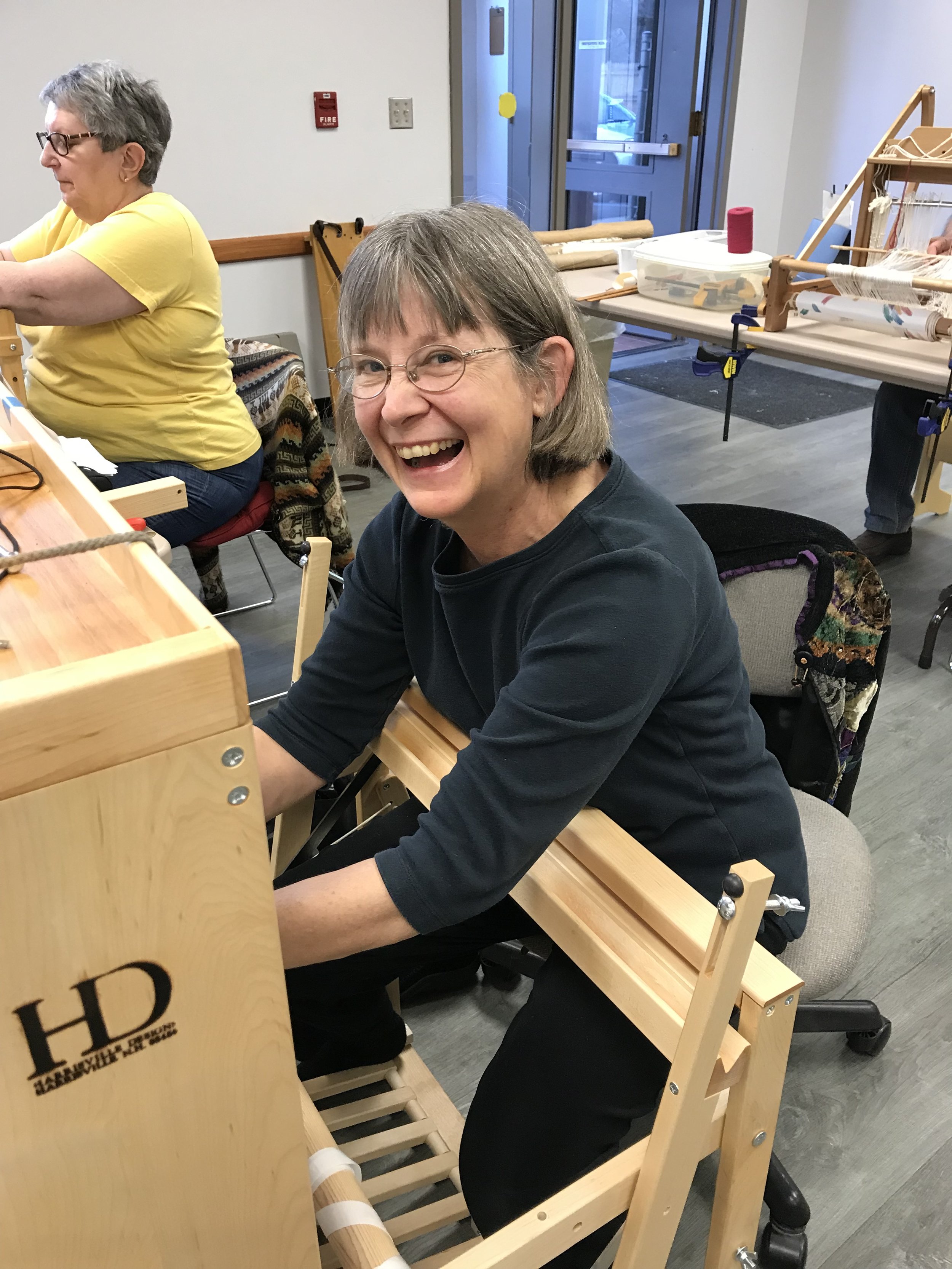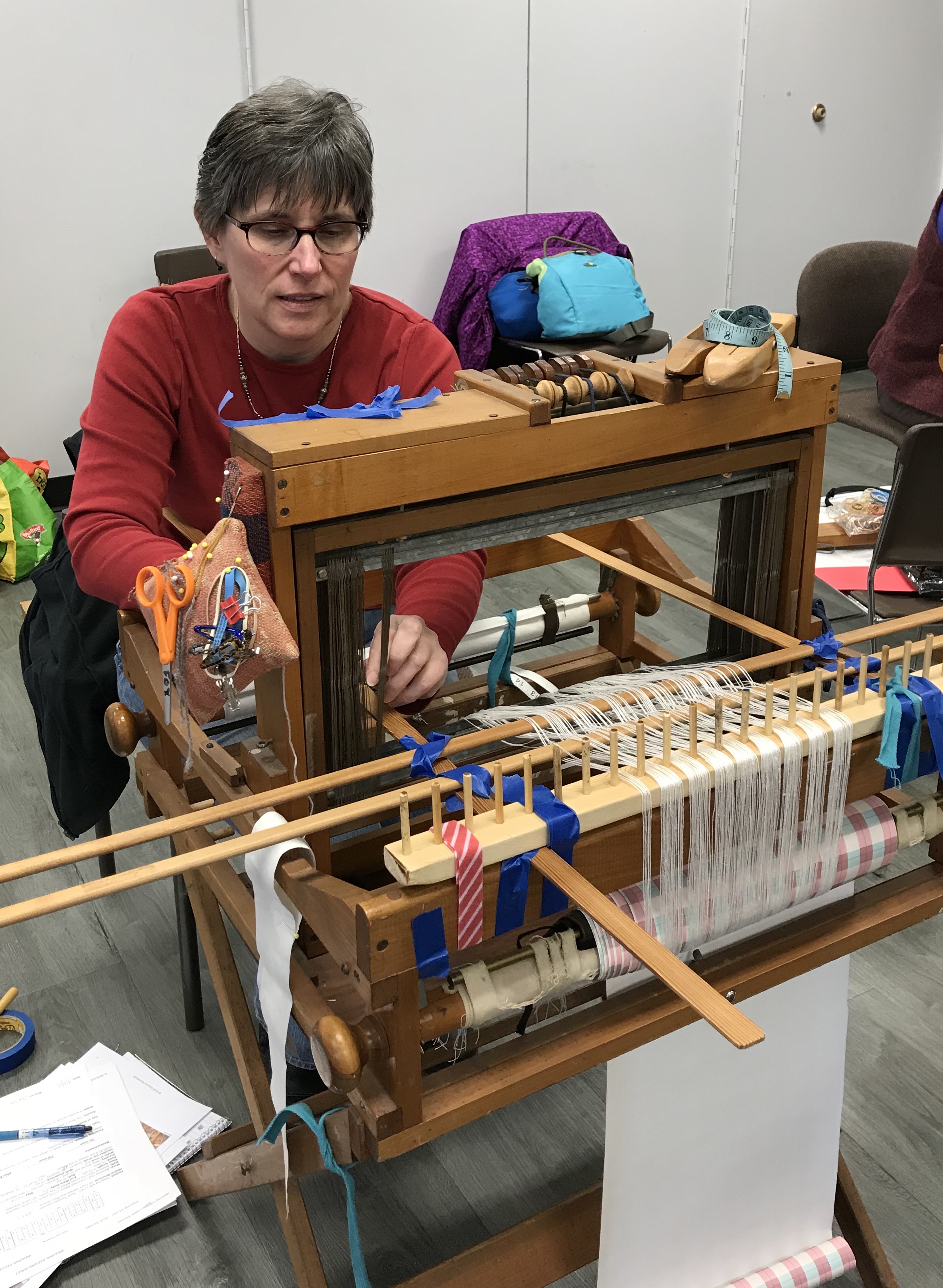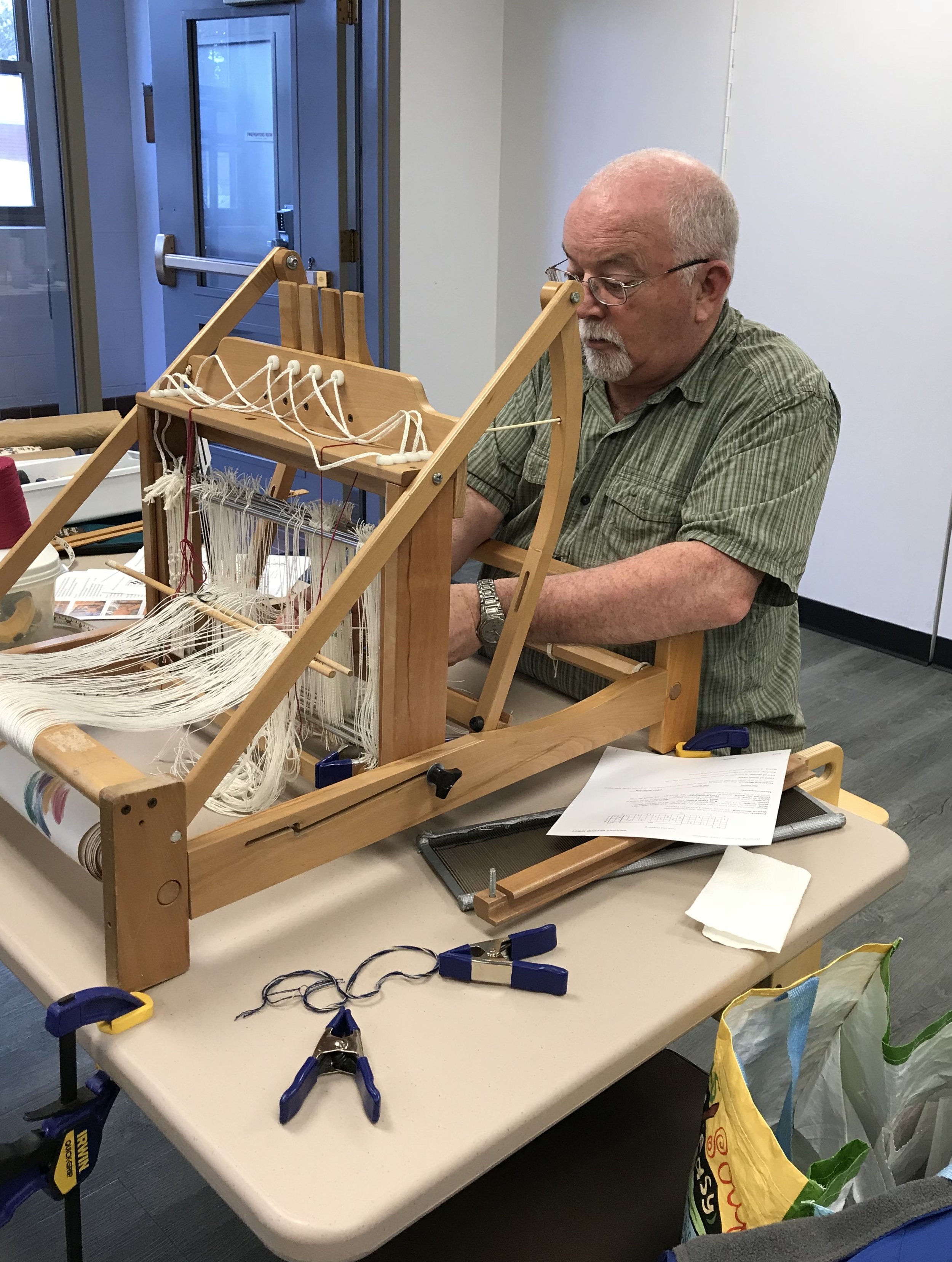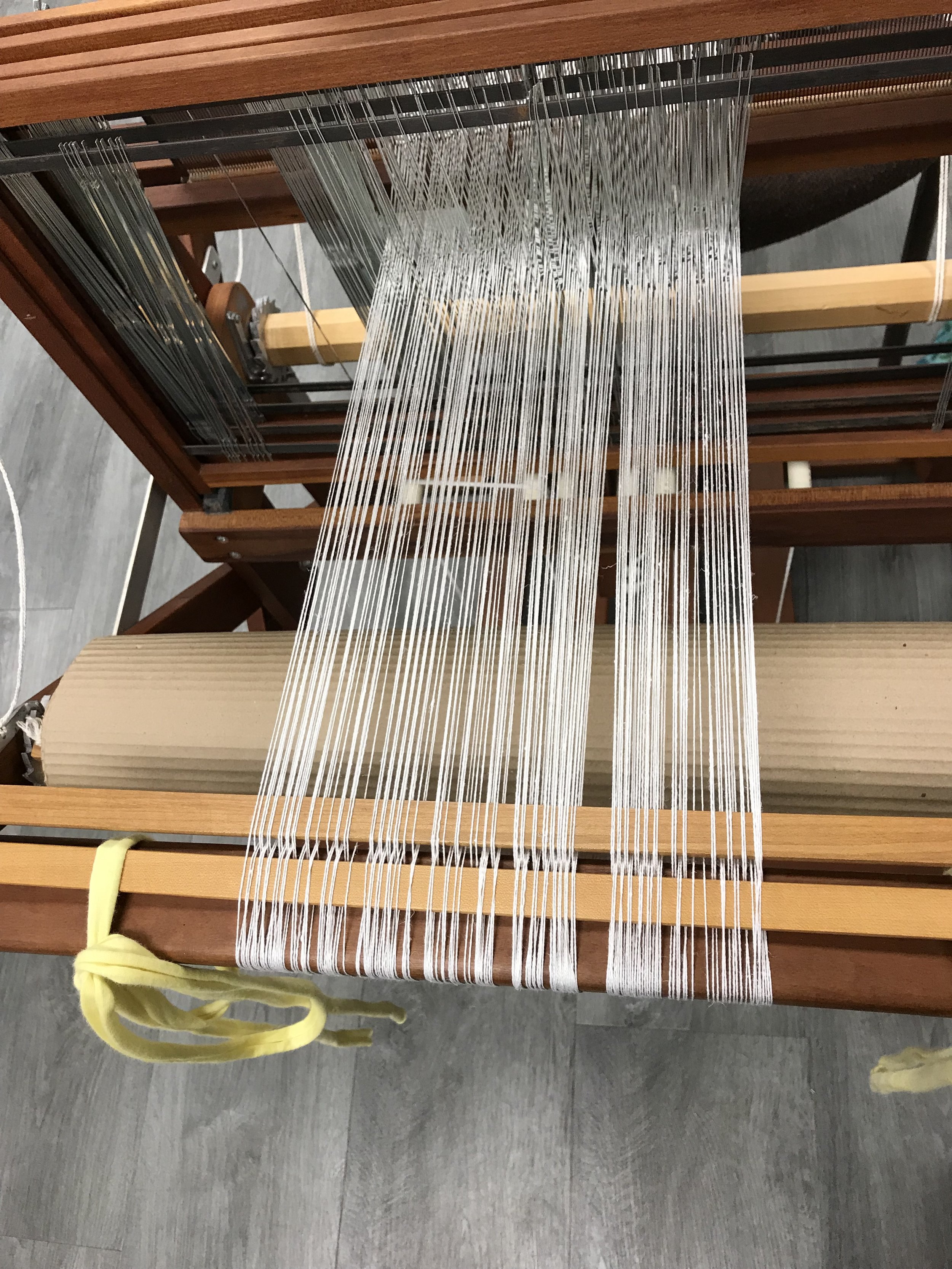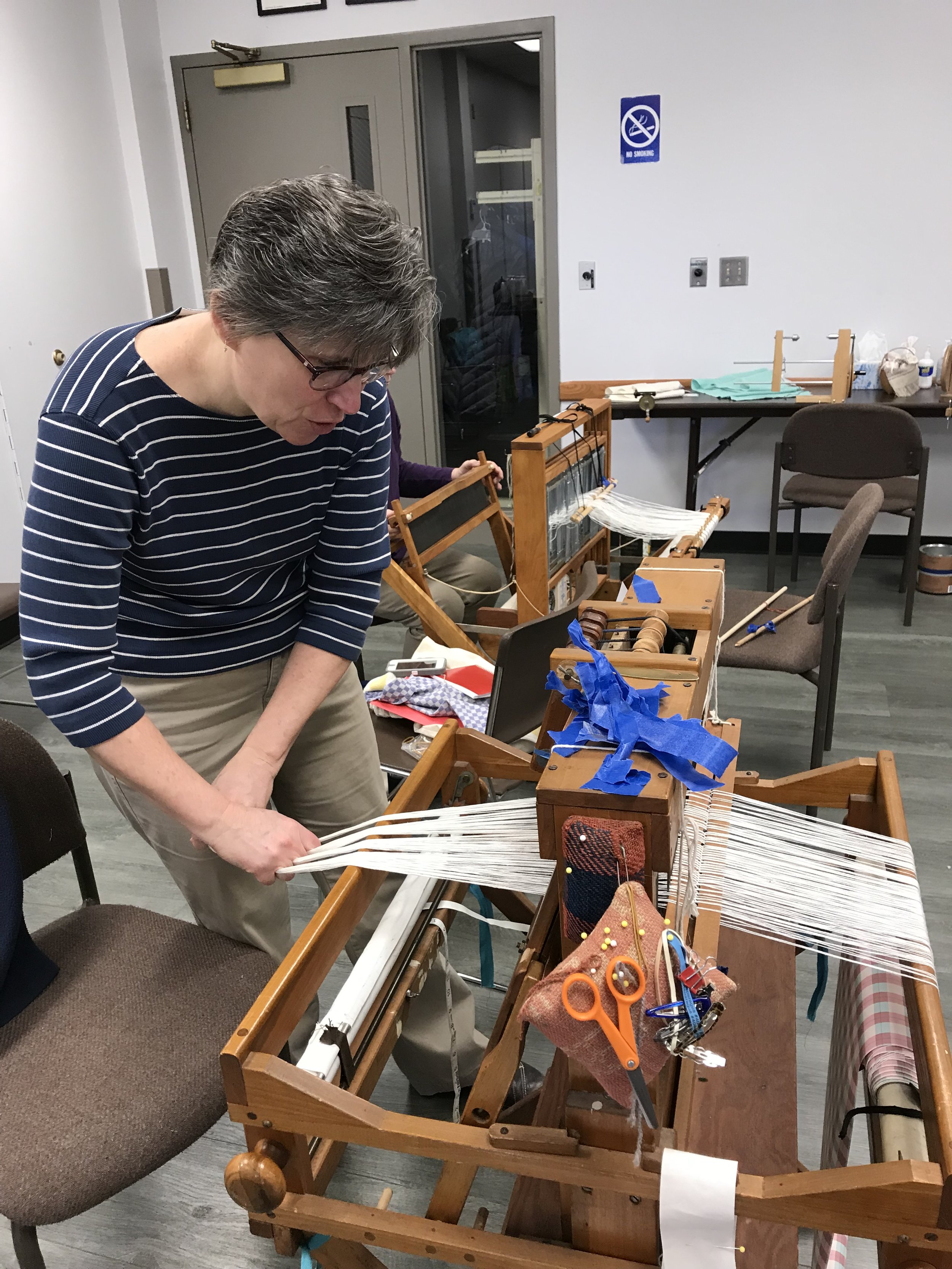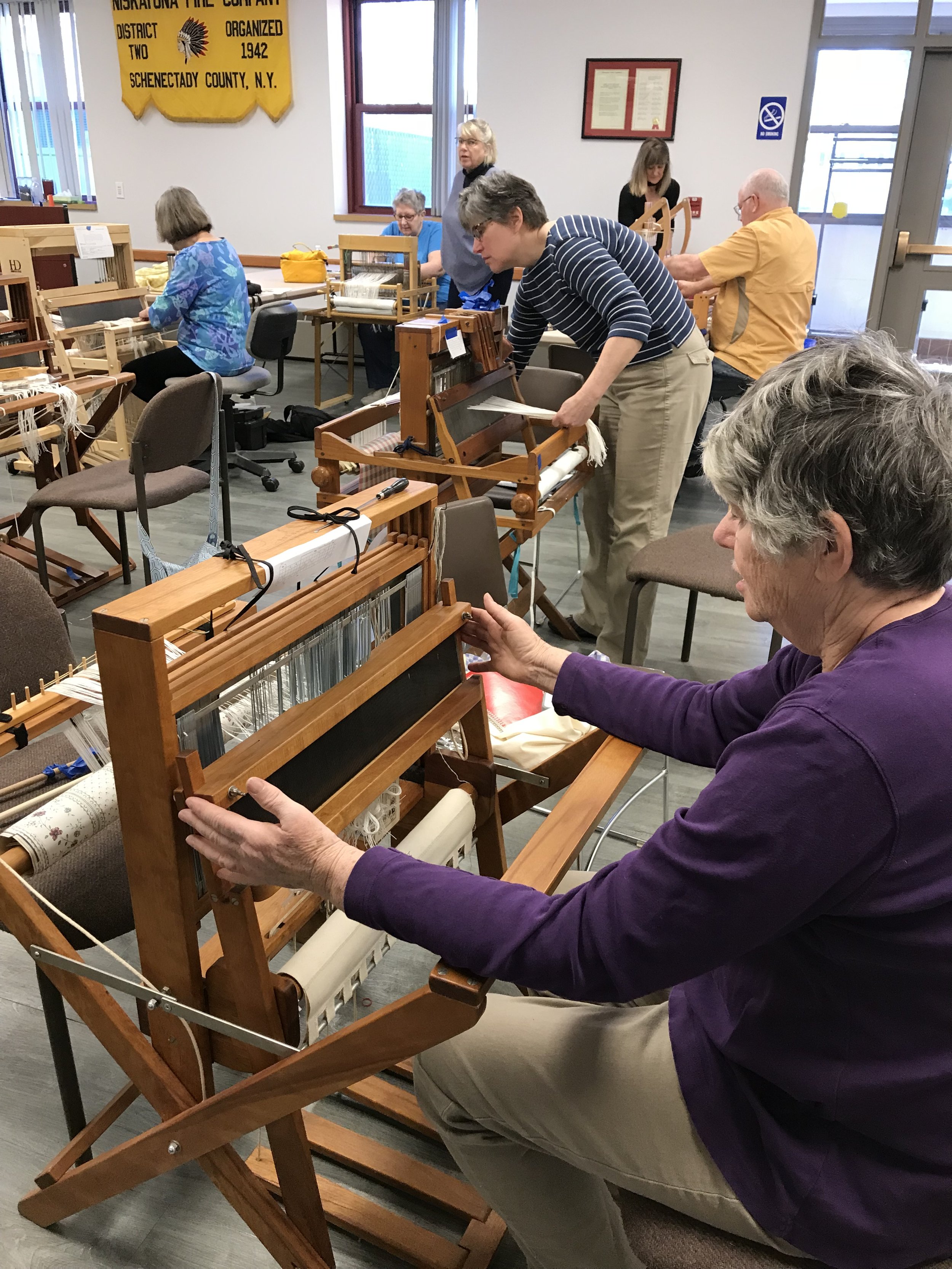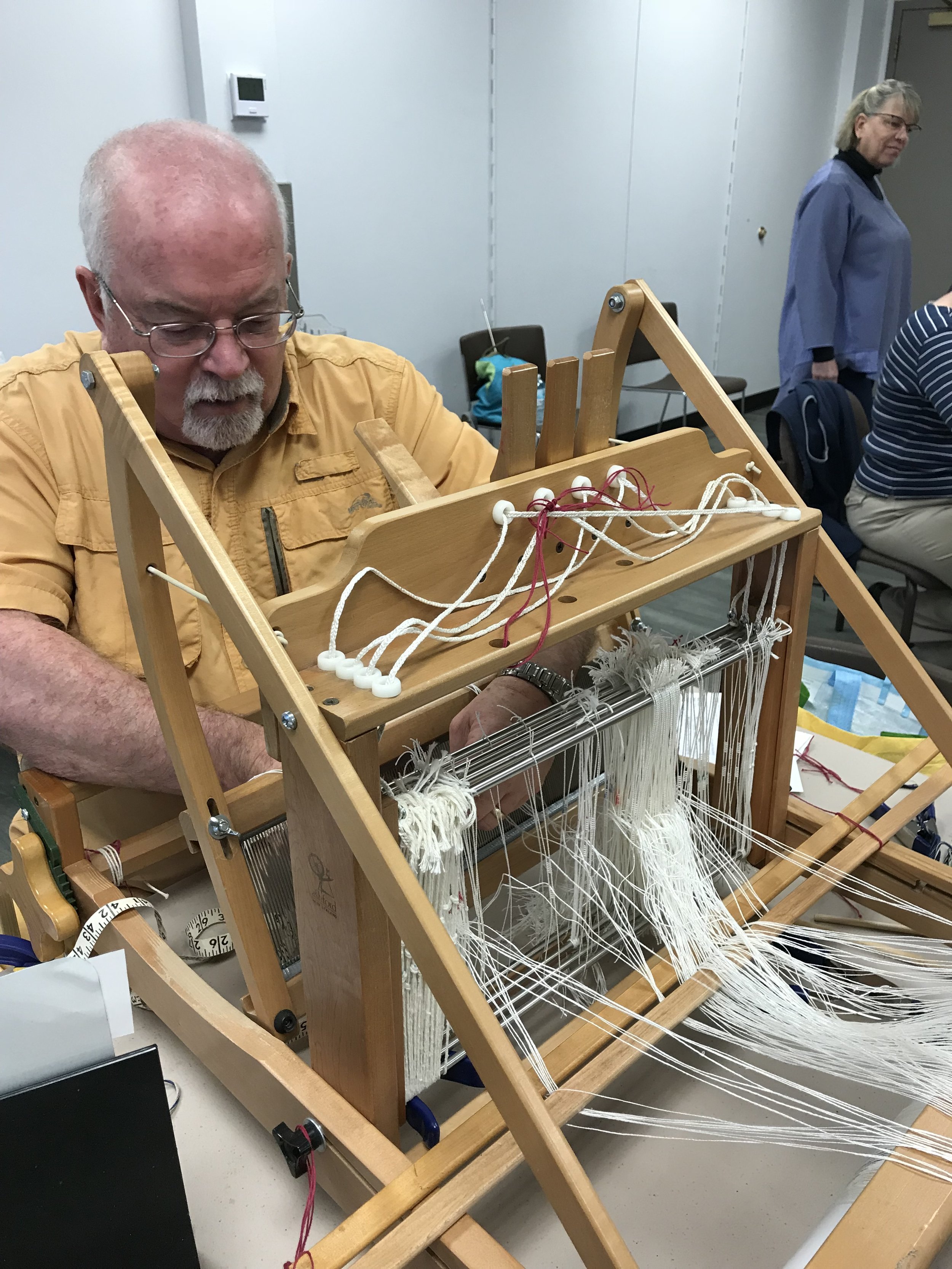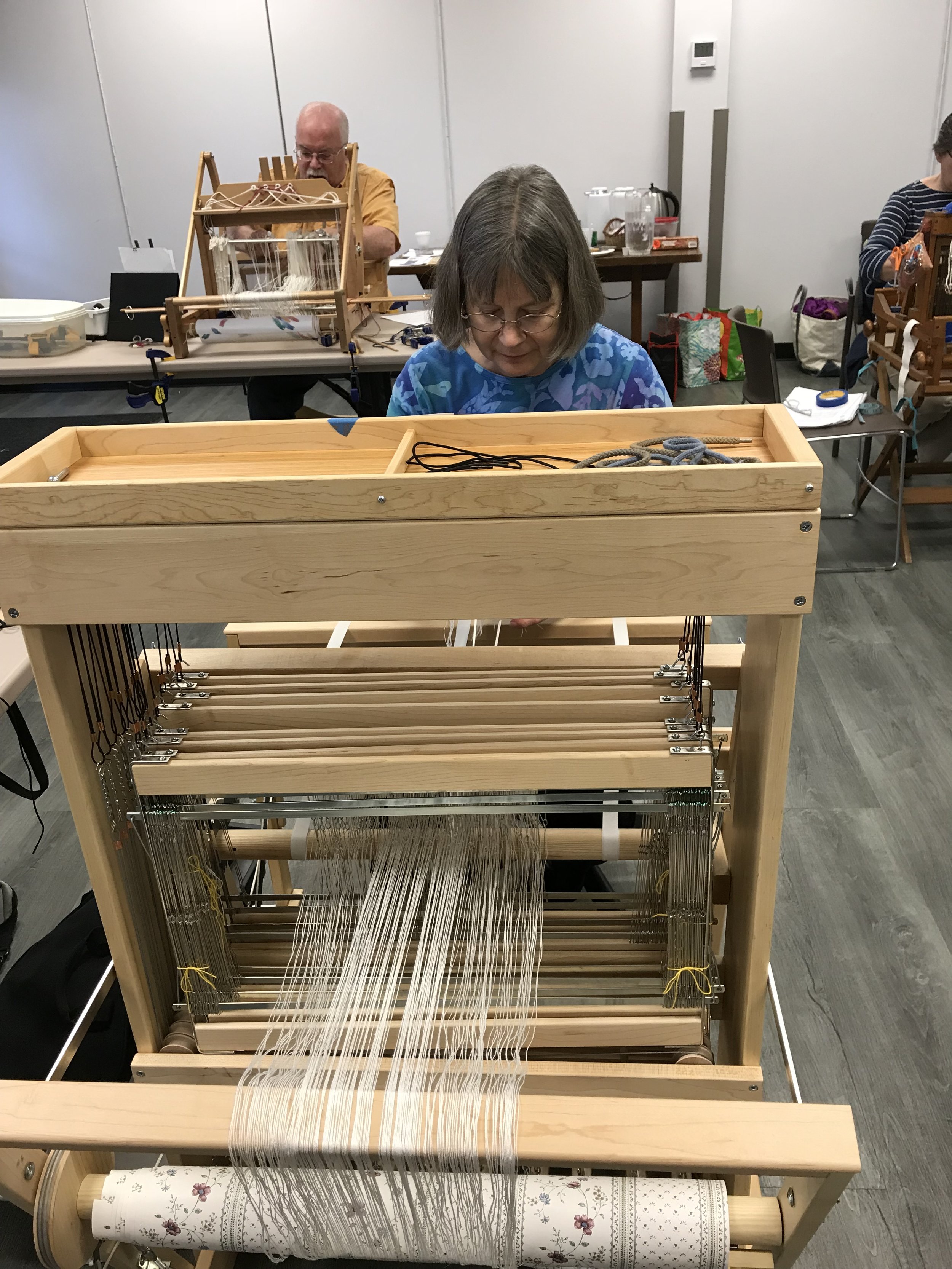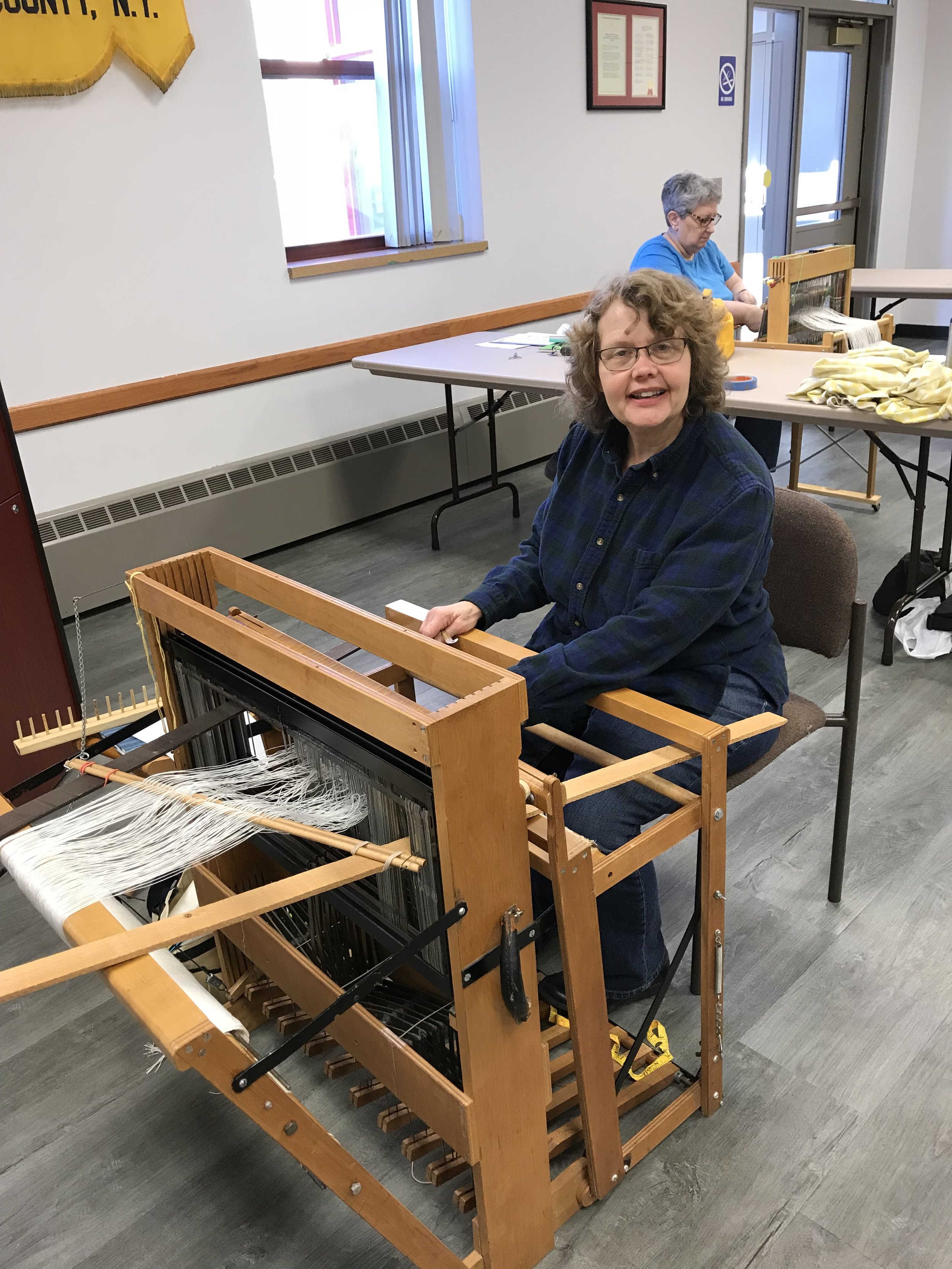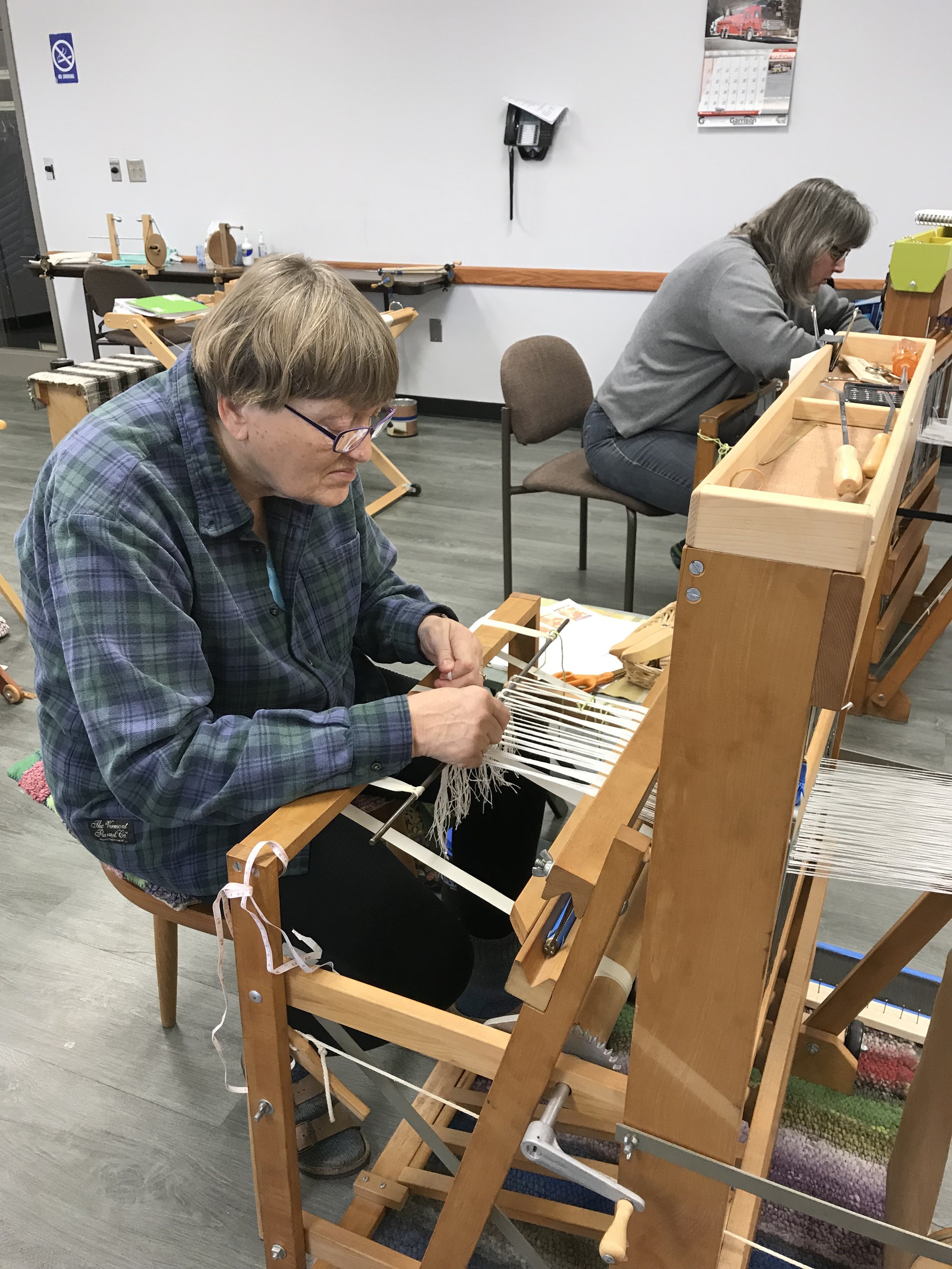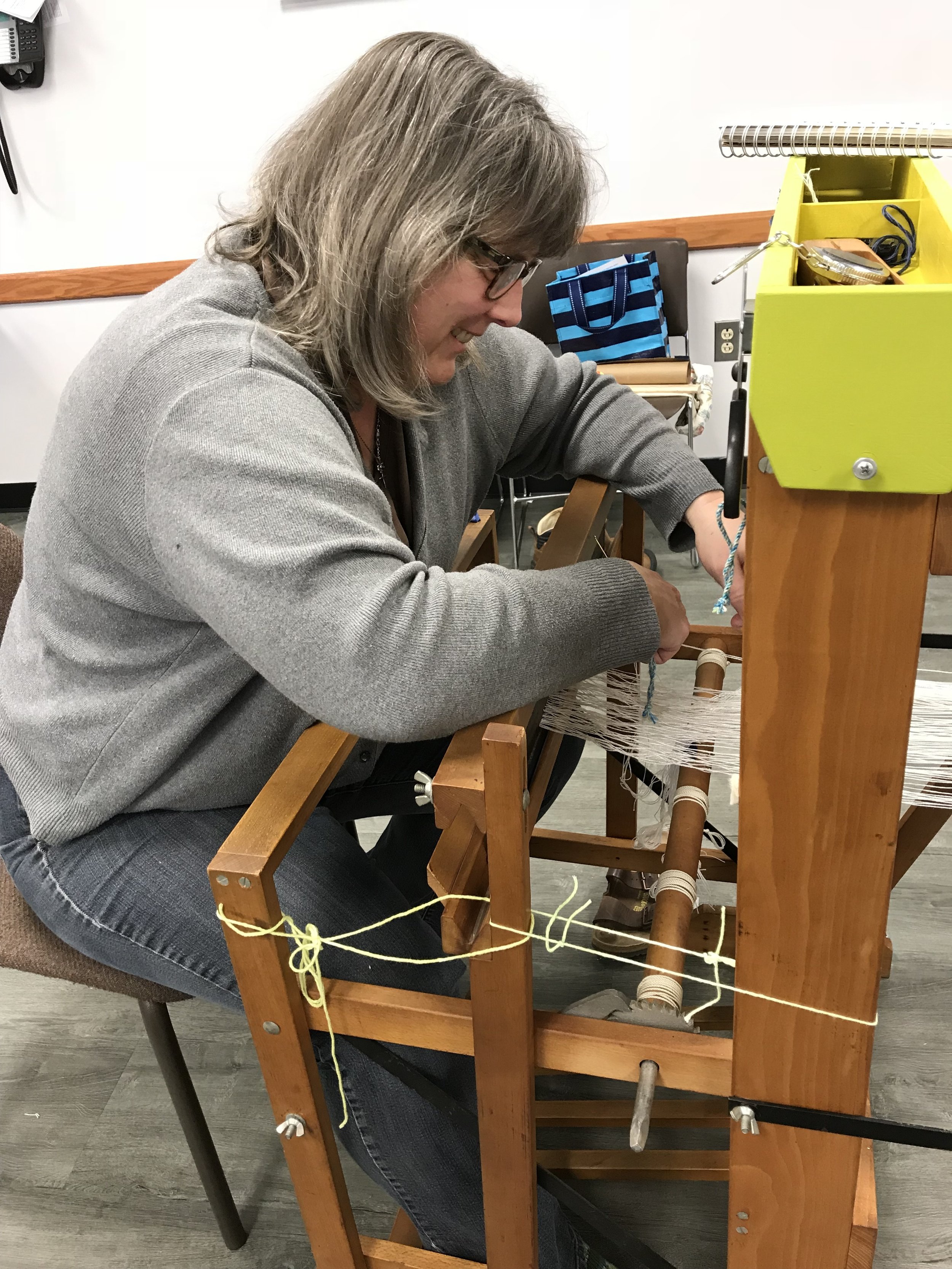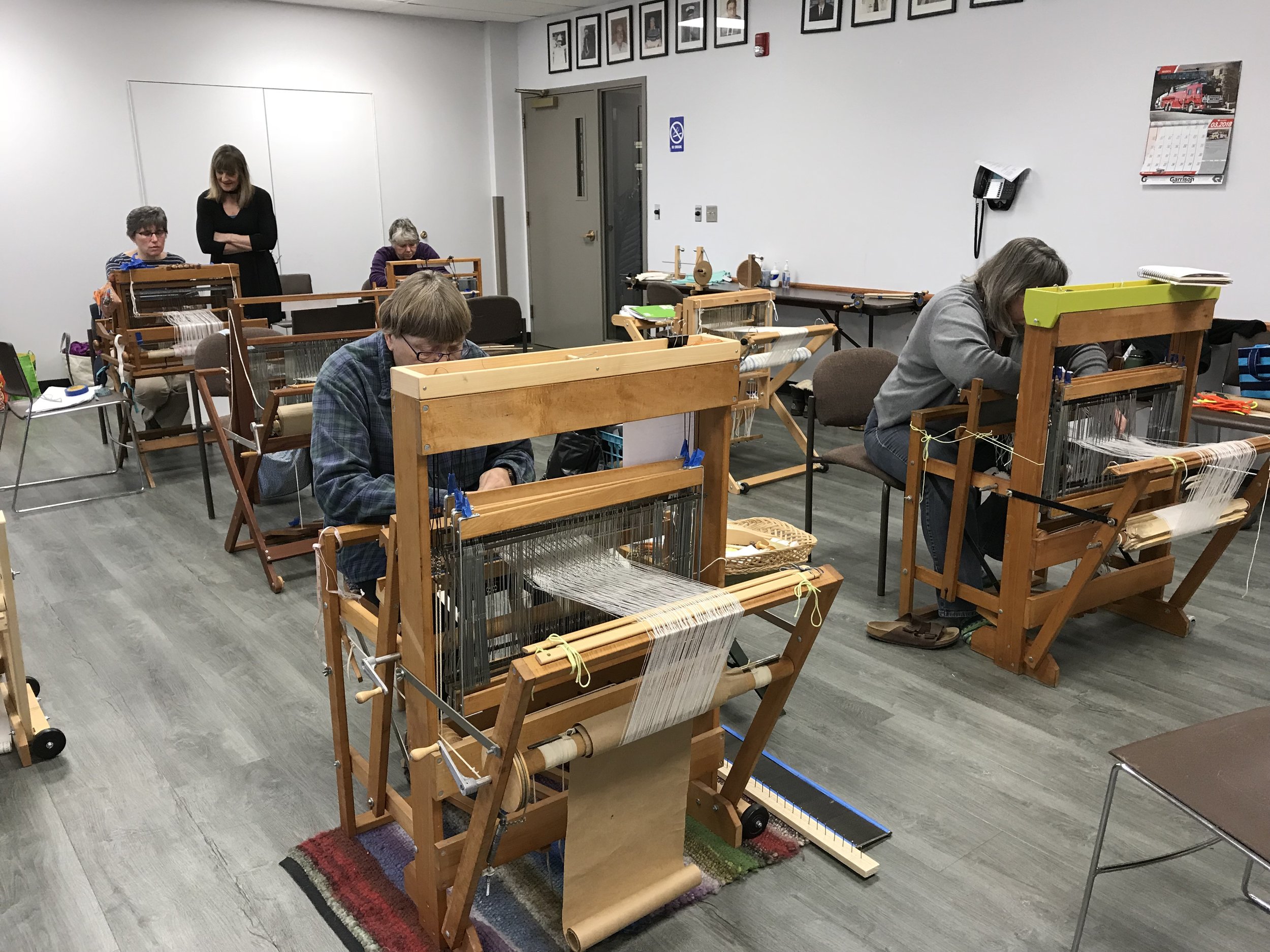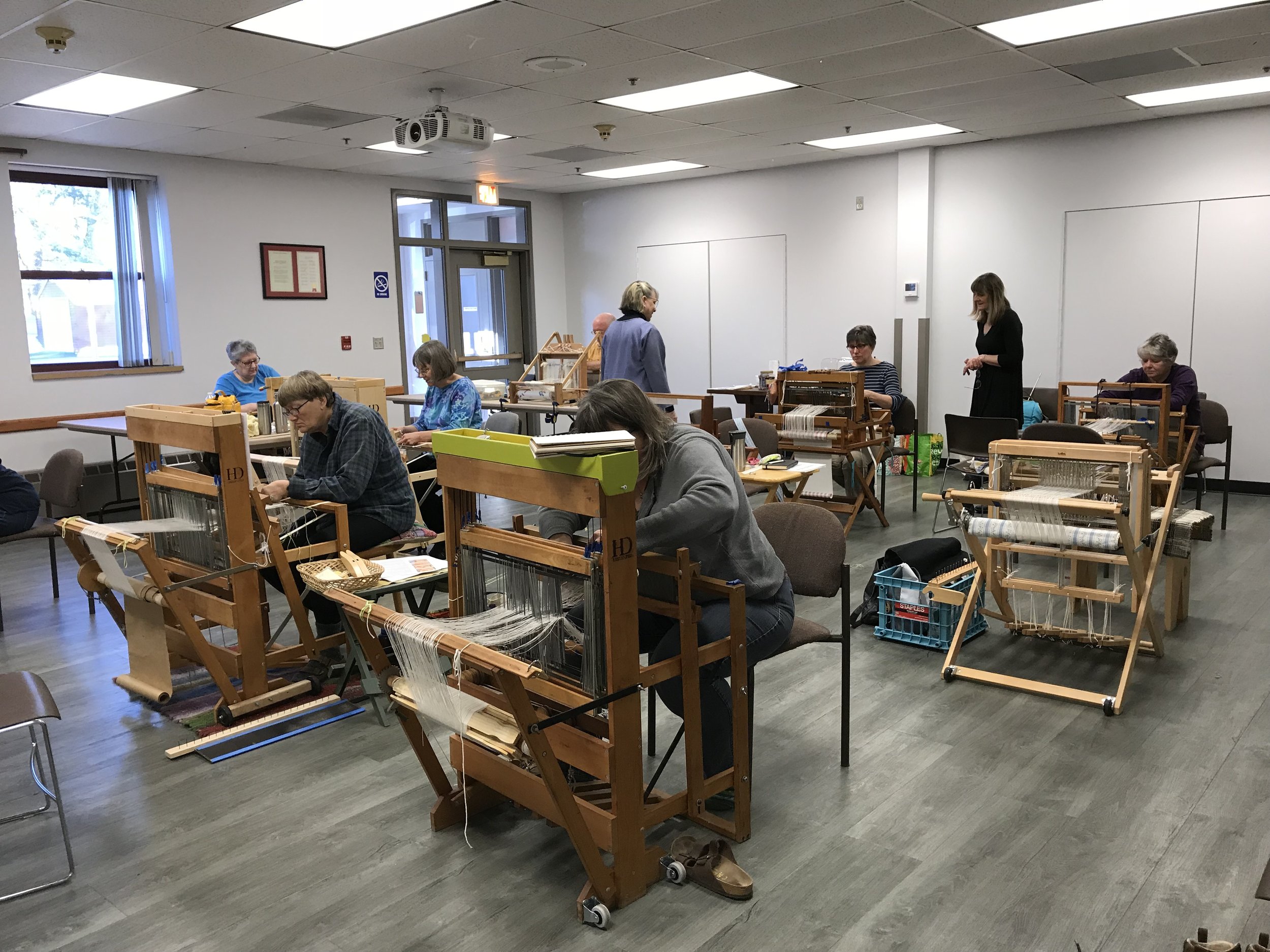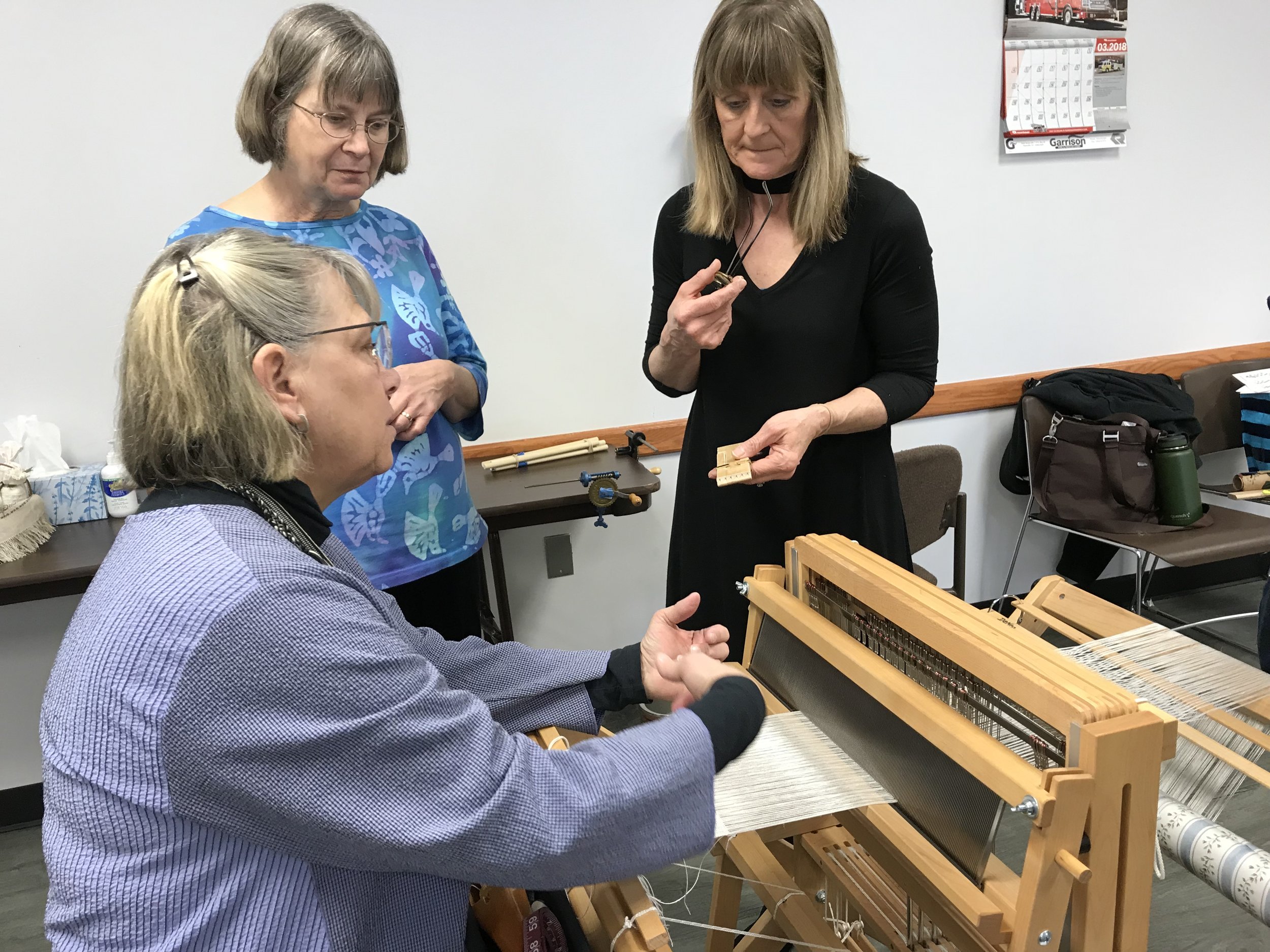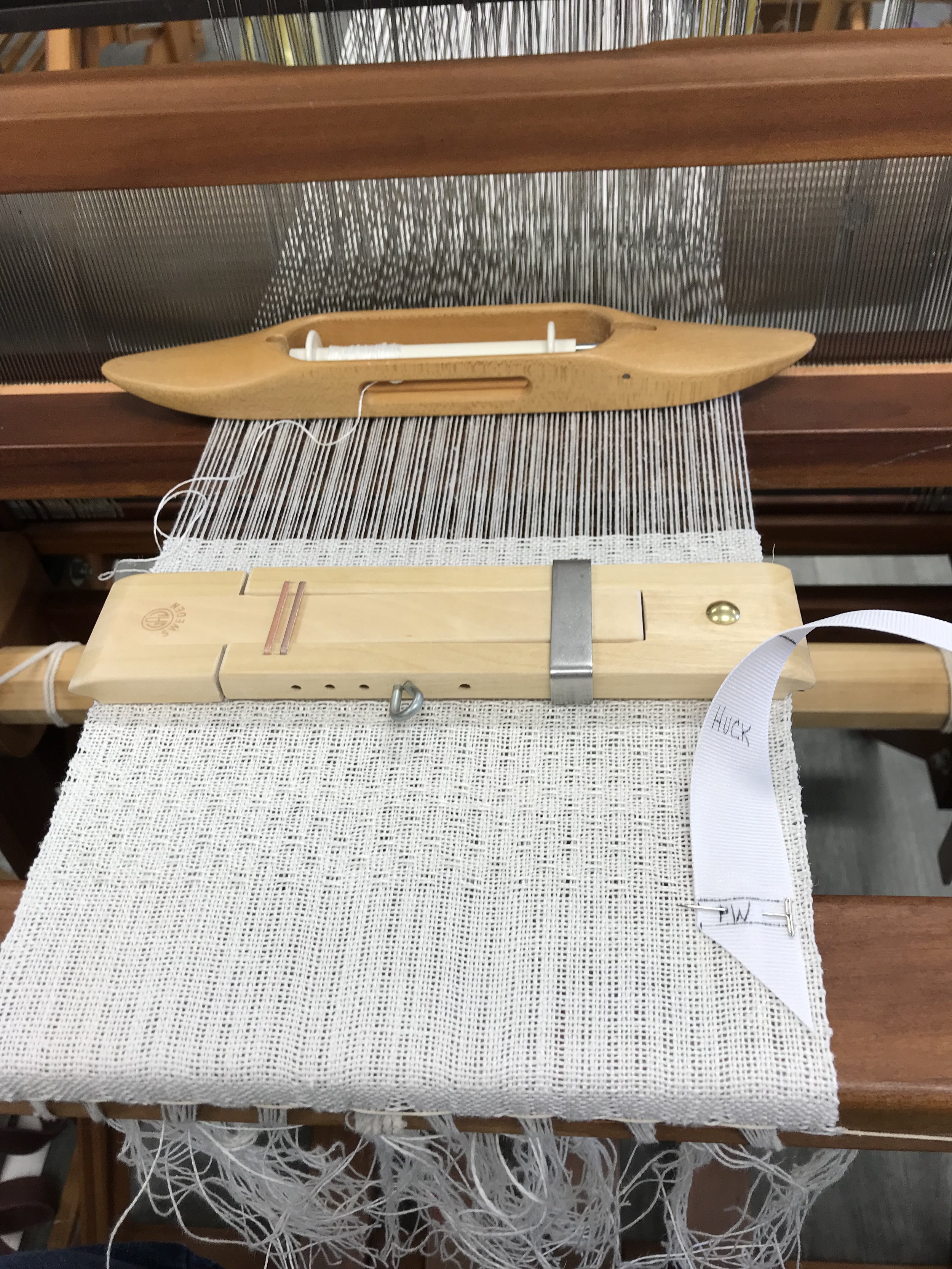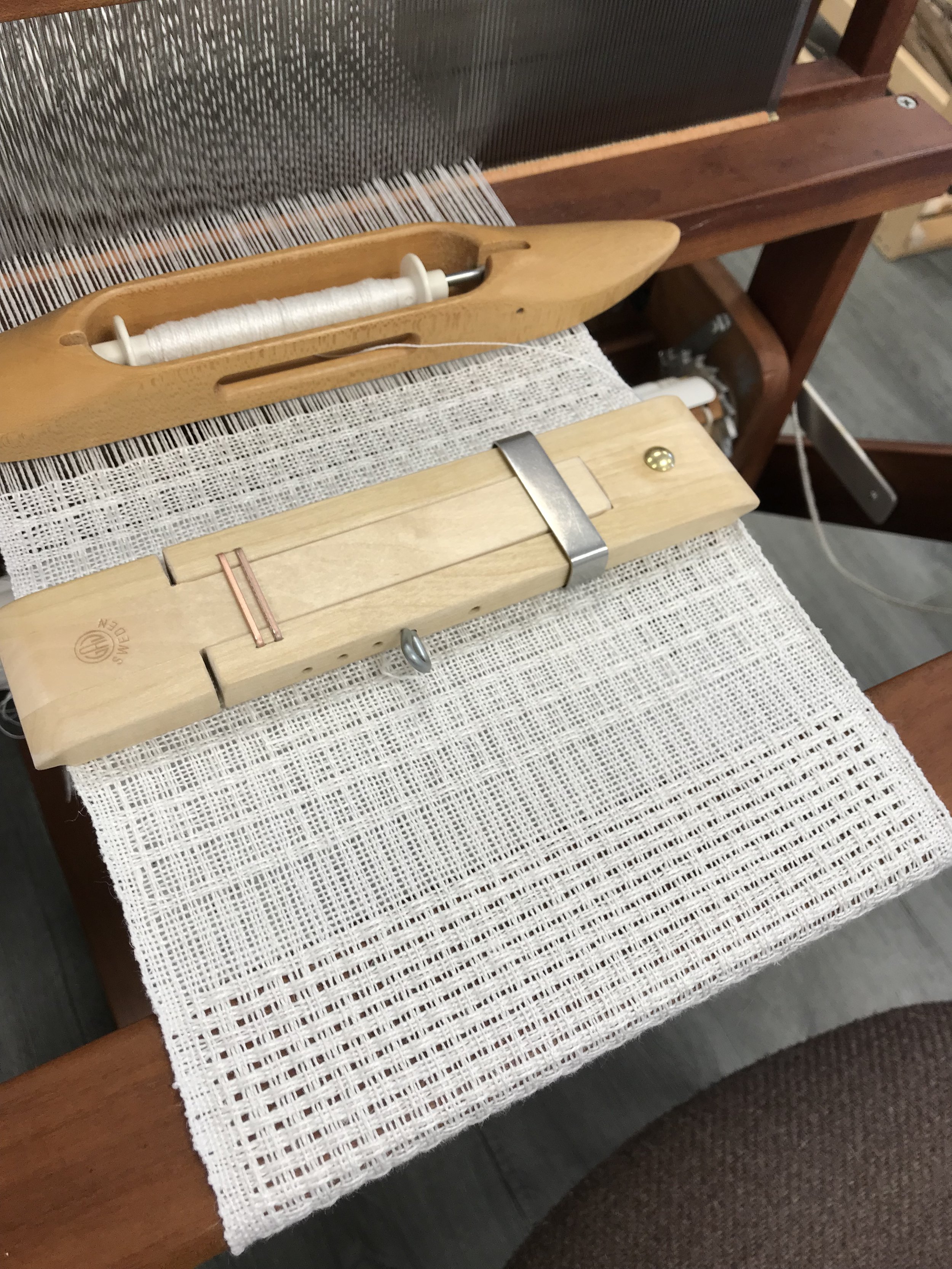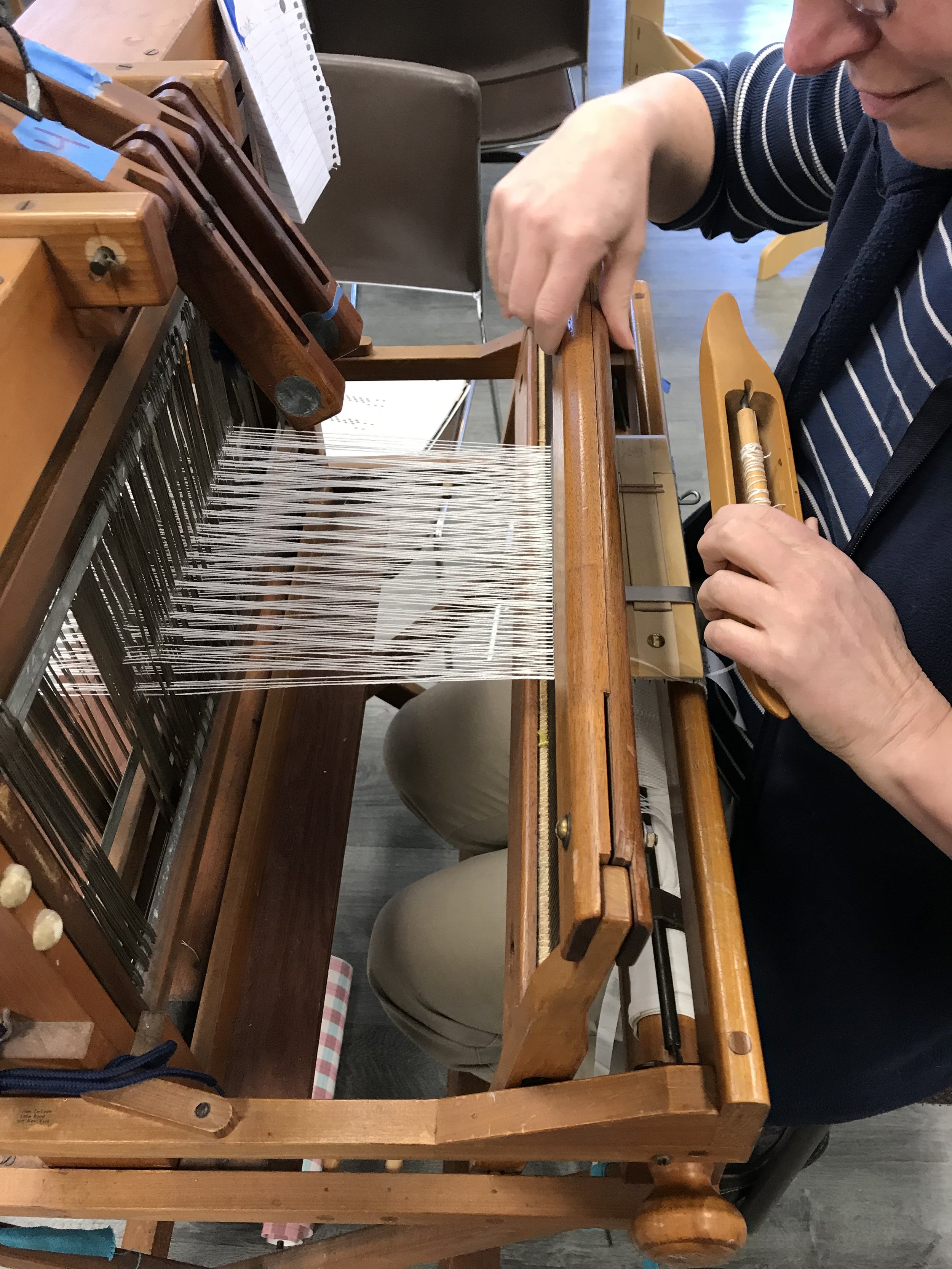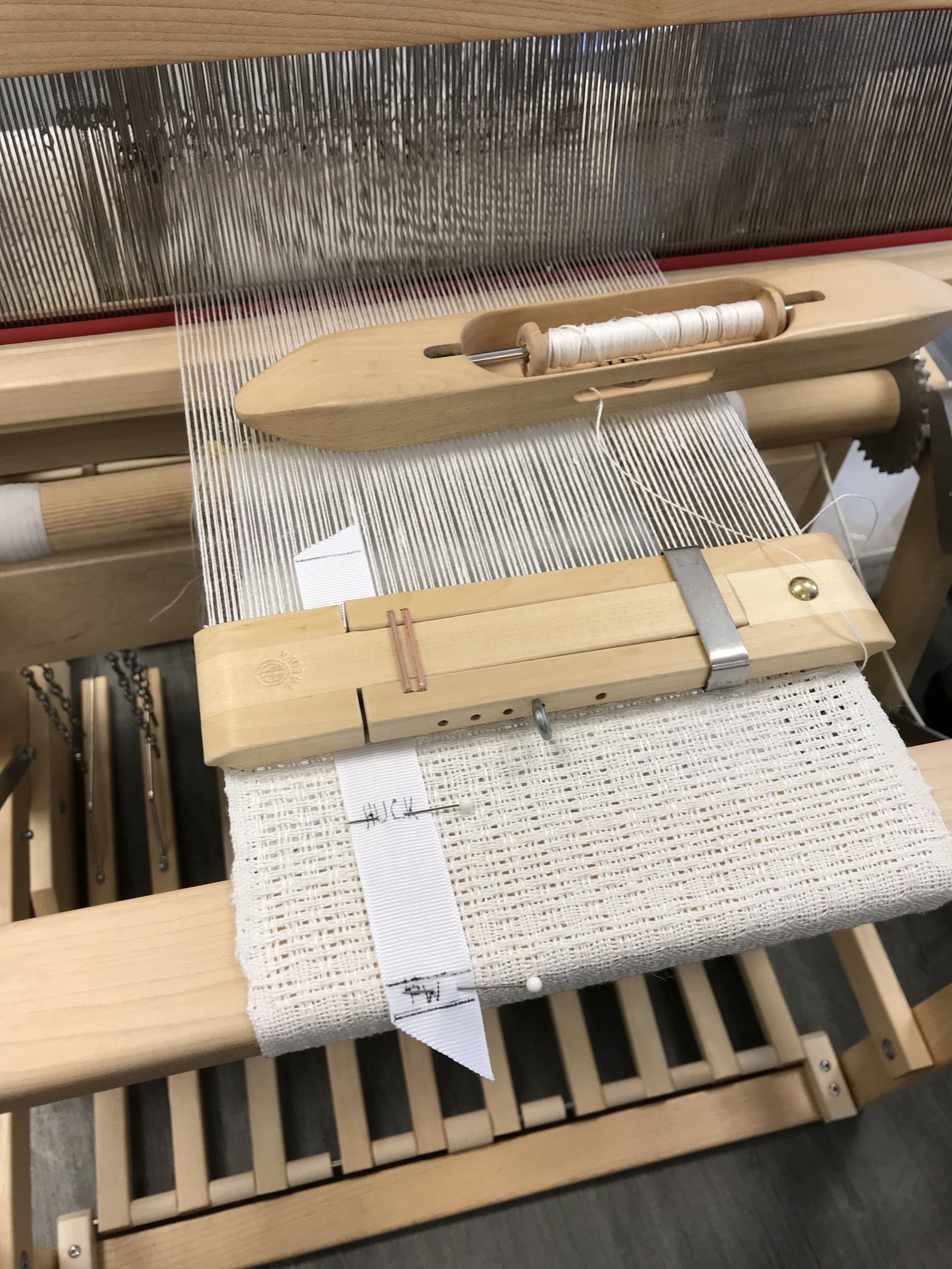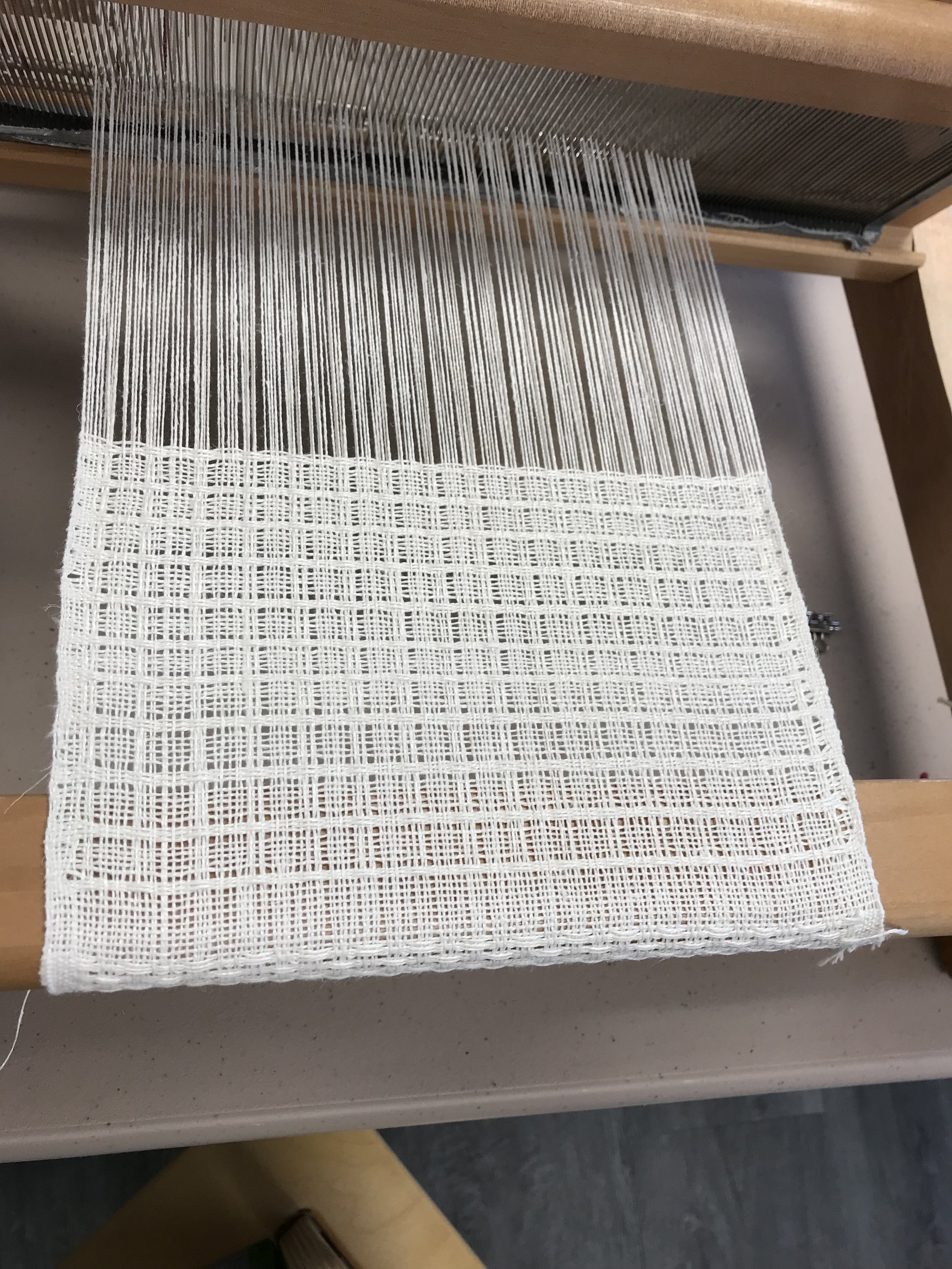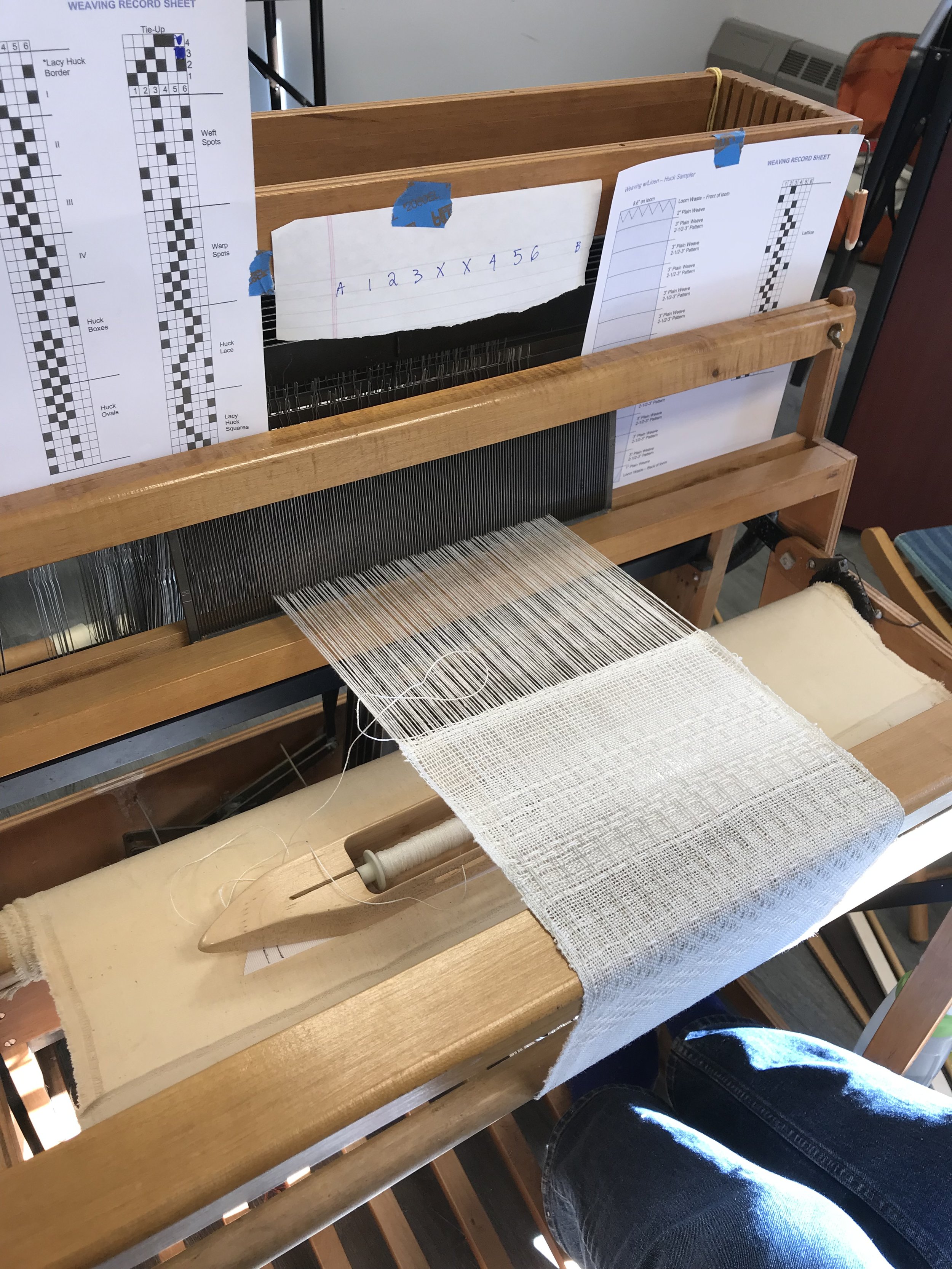The Fall 2019 issue of Ply magazine features a wonderful spread on guild member Lilly Marsh and her Hudson Valley Textile Project. It details her work in developing regional cloth from local fiber and processing. Her article traced the fleeces of Blue Pepper Farm’s East Friesian Dairy Sheep as they were blended with Little Creek Alpaca fiber by Battenkill Fibers Carding and Spinning Mill to produce versatile yarns for use in the weaving studio. It is an example of the HVTP goals for strengthening a sustainable and climate friendly fiber supply chain in action and a model for regional cloth production through multiple
HVTP members. It is available online or in print through purchase or subscription.
Check out the Fiber Forum, July 13 in Saratoga Springs
Guild members frittelli & Lockwood host a one day educational event at their studio in Saratoga Springs on July 13, 2019. Fun for the whole family and free. Check it out!
March 2019 guild meeting, with Susan Conover discussing sleigh blankets
March workshops - space available!
The guild is hosting Susan Conover for two exciting workshops in March. On Friday, March 15, Susan will teach a one day workshop on spinning on a great wheel. You can bring your own wheel, or Susan will also be bringing a few wheels from her collection for students to use. On Saturday, March 16 and Sunday, March 17, Susan will teach a two day workshop on shadow weave gamps on 4 or 8 shafts.
Susan is a great teacher, and everyone left last year’s workshops with new ideas, tips and tricks!
These workshops are open to non-guild members (cost is $25 additional, which includes membership in the guild through May 2020).
September 2018 Guild Meeting
The 2018-2019 season kicked off to a great start. The program was a facilitated discussion on pricing of handwovens, led by Nancy Ross. Plus we have lots of accumulated show & tell from the summer months.
Dye Day with Grete Reppen, Sept 2018
The guild put on a great first workshop of the 2018-2019 season: dye day with Grete Reppen. Attendees came with pre-wound warps or skeins of either cellulose or protein fiber and space-dyed them. So much fun to play with color! Thanks, Grete!
Submitting your work to the Altamont Fair
As a volunteer for the Altamont Fair, I would like to encourage you to seek out this opportunity to share your craft with the public, receive a review of your work and maybe win a ribbon! Competitions are an important part of the county fair history. Comparing the virtues of horses and livestock, selecting the best pickles and berry jams, photos – you name it, the county fairs love to judge and exhibit all kinds of items!
First, check out the competitions on your county fair website. Most local fairs post their exhibitor guidebooks right online for your perusal. Review the categories, the rules, the fees to participate, entry deadlines, the drop off and pick up dates, and the prize structure. Each fair creates their own competitions, so be sure to read the details. If you have any questions, you can contact the fair superintendent to get guidance. Then review the guidelines for prepping your item for entry. To be ready to show, your article should meet the criteria of the class, be clean, neat, finished properly. If the competition asks for a description of content or care, be sure to submit it with your entry. There are tips & tricks for showing; for example some folks use natural fiber yarn or threads to attach an entry tag to the entry.
Once your entry is dropped off for judging, the anticipation mounts! Don’t forget to invite your friends and family to see your entry in the display case. Enjoy the feeling of seeing your entry in the exhibit and see if you won a prize! Most fairs offer a modest monetary prize for the top placements, but most don’t do it for money. For many, the personal rewards are getting feedback, the camaraderie of sharing your craft withe other artists and enjoying other people’s work, and the great exposure to the public that may not be familiar with your craft. And lastly, there are many rewards knowing you are a of a long history of “the promotion of agriculture, horticulture, domestic and mechanical arts, historical displays and allied sciences through educational instruction, display and competition as well as the encouragement, promotion, and improvement of domestic and other handiwork and fine arts, and for exhibitions thereof……” (Excerpt from the Articles of Incorporation of the Altamont Fair, language dating back to 1893).
- Pat Canaday
One handed weaver's knot video
Do you know how to tie the one handed weaver's knot? Cecilia Frittelli demonstrates in this video. Thanks to Lilly Marsh for making the video.
Help from the Opinionated Weaver (alias "Aunt" Gene)
Many new weavers experience lines in their cloth caused by changes in tension when the warp is advanced for more weaving space. I thought some of you might benefit from some helpful suggestions gleaned from the literature and my own experience.
- Jisp: (origin unknown) Streak in the fabric due to uneven beating of the weft. Synonym: Shire.
- Shire: (in M.E. thin and scanty) The same as jisp.
from Zielinski. Encyclopedia of Hand-Weaving. c. 1959.
Jisp lines are most obvious in plain weave, twill and sometimes in other techniques. There are several ways to avoid them.
Remember, the best weaving space (in most looms) is the center third of the space between the breast beam and the beater/reed. Do not work too close to the breast beam as the beater strikes the front of the loom and cannot force the weft into the web. Working too close to the reed prevents the beater from developing enough speed to exert sufficient pressure at the fell line. Also, working too close to the reed forces the shuttle to further compress the previously-woven wefts as the shuttle is forced through the ever diminishing shed.
As you weaver towards the beater, the tension on the warp increases, as the warp threads bend up and down with the changing sheds. This tension is greater than when warp was first advanced. When the warp beam is released, and the cloth advanced, the new tension will be tighter or looser as you crank up the cloth beam. Usually it is more loose, as you try to equal the tension as it was before you started to weave the last time you advanced. Thus, your beating force should be adjusted to compensate for the different tension.
One way to equalize the tension is to release the cloth beam one (and only one) notch as you get close to the one third space limit. Then, when the close is advanced, the new tension will be more like that of the previous shed. It is always a good policy to release the cloth beam before the brake, if the warp beam has a dog-and-rachet brake system. If tension is tight when brake is released the warp beam can over-spin, you have to go to the back and tighten the warp beam, because it is too loose for the fell line to locate within the center third of the weaving space.
In twill and pattern weaving, especially summer & winter or spot (Bronson) weaves, always advance the warp when a pattern unit is complete. The change in pattern helps minimize the jisp line.
Warp tension is important, too. If tension is too low, the force of the beat is absorbed throughout the warp, instead of at the fell line. If too tight, the shafts cannot open the shed fully, and the beater cannot force the weft against the previous pick.
And always, after advancing the warp, give the fell line one whack (well, not too hard) before you throw the shuttle again.
Advance the warp frequently. Even within the one-third space limit, some looms, especially table looms, beat down on the warp, rather than nearly perpendicular. Advancing every 2.5" to 3" minimizes the change in warp tension on most looms.
Yes, you have to be a bit of a mechanic to be a good weaver. I hope these suggestions help you with your weaving.
...Gene E. Valk
P.S. The more you weave, the more uniform your beating and tension become and the less problem you'll have with jisp lines.
Note: The above, originally published in the Tryon Weavers' Guild Newsletter (May '98), appeared in the January '99 HMWG newsletter with permission from the author. Thank you Gene for sharing your "words of wisdom" with us all.
Gene Valk, until her passing in July of 2008, continued to offer classes at Weefhuis Studio in Gloversville, appeared as a guest lecturer, contributed articles for periodicals such as Handwoven and had been a member of HMWG for many years (as you can tell - her guild number was 066).
May 2018 Guild Meeting
Guild member Lilly Marsh presented a fascinating talk on her PhD research on Elizabeth Zimmermann. It was so interesting to hear the state of American knitting in the 1950's and 60's and hear about the revolution she instigated. Show & Tell this month featured the guild challenge - take something from an old weaving magazine for inspiration to weave something new.
April 2018 Guild Meeting
Sharon Olds presented a program on her experience at Vavstuga learning to weave Swedish-style rag rugs. She brought several examples of rag weaving, including table runners and several rugs.
Show & Tell included a wide variety of items, from a silk "challenge" to several garments.
Susan Conover Program and Workshops on Flax and Linen
Susan Conover of Conover Workshops came out from Ohio to deliver a program and two workshops focusing on flax and linen. She brought a huge array of simply gorgeous samples. At the evening program, she showed a short film featuring her neighbor growing and processing flax. Show & Tell featured items guild members had made using linen.
The one day workshop on Friday, Mar 9, covered spinning flax into linen. Participants got to spin various fiber preparations, culminating in dressing a distaff with line linen and spinning it into beautiful yarn.
In the two day workshop on weaving with linen, Mar 10-11, Susan led participants through dressing the loom back to front in the Swedish style. She imparted many tips, including a tie-on method new to all of the participants. Despite the range in experience among the participants, from less than 1 year to 20+ years, everyone left having learned many new things and feeling much less intimidated by linen.
February 2018 Guild Meeting
We had a fantastic February guild meeting. Speaker Anne Kelly introduced us to Mayan Hands, a local Fair Trade organization bringing wonderful craft items to the US and opportunity to the lives of Mayan women. Show & tell was full of inspiration.
Reviews of Favorite Weaving Books
Dye Day
Members of the guild gathered on Sept 10, 2016, at Mary Ellen Singer's house for a dye day led by Pat Bohrer. Much fun was had by all.
A history of the Hudson-Mohawk Weavers' Guild, by Susan Wood
The Hudson-Mohawk Weavers' Guild had its roots in the Schenectady Handweavers which was
formed in 1972, by Peggy Wilkins and some of her weaving friends and a few sessions were held on Peggy's front porch. An organizational meeting was held February 24, 1972 and dues were set at $3.00. The group thrived and met monthly at various locations including a bank community room and members' homes while trying to locate a permanent home.
Yarn Count, by Steve Ableman
At our November Guild meeting the topic of yarn count was inquired about at the table I was
seated at. Yarn design information is not easily located. Having a good library that has texts
related to mill production I located information regarding such and thought that it should be
shared with the Guild membership at large. So what does a cotton yarn called 8/2 really mean?
Historically when cotton yarn began being produced in England a standard hank or skein of a
single ply (ready for the plying process) was determined to be a length of 840 yards. I cannot locate any reason for the exact length but 840 yards is the standards listed in many early yarn production manuals. The first number in yards in our example (the 8) indicated that the number of skeins or hanks at 840 yards to weight a pound was eight. The second number indicates the plying process and the number 2 indicates that our yarn is a 2 ply yarn. If it was a 3 we would have a three ply yarn. So completing the mathematical calculations it would look like this:
8 skeins @ 840 yards of singles = 6720 yards
6720 yards of singles plied two ply or
6720 divided by 2 = 3360 yards per pound
Let’s try that again for 10/2 cotton yarn:
10 skeins @ 840 yards of singles = 8400 yards
8400 yards divided by 2 = 4200 yards per pound.
What is important is that we as weavers know that the more skeins or the higher the number of
skeins the finer the yarn. This assumes that the ply count remains as a constant. Comparing an
8/2 yarn and a 20/3 yarn is quite a different matter.
For a bit of added information let us consider wool. Wool is spun in two very distinct methods
referred to as woolen or worsted. Traditionally the woolen method which is a carded preparation was used by knitters and is usually spun with less twist and therefore has a softer hand. The worsted system in which wool is combed and not carded is a weaving style yarn with higher twist and has a less soft hand than woolen yarns. Within the confines of the United States worsted wool mills to avoid confusion with the cotton standard altered the yarn count numbering system. An 8/2 cotton yarn and a 2/8 wool yarn are about the same size but the inversion of the numbers, ply being indicated first and the yarn size following, was to indicated that the yarn the weaver had in his/her hand was wool and not cotton.
Hopefully this information clears up the question or better yet creates more questions.
Weave on
— Steve Ableman
Copyright 2013. Do not reproduce without permission.
Warping
Check out the Speed Warping booklet, written by past guild member Janet Nyquist and published by the guild. The booklet is typically available for sale at the Show & Sale each fall.
Did you miss the February 2013 program on warping methods? Check out short video clips of the
demonstrations.
